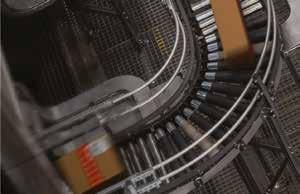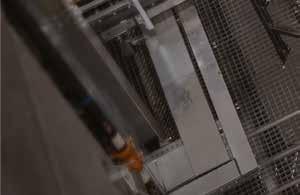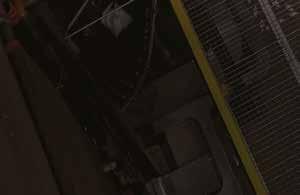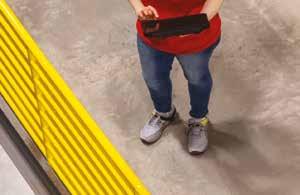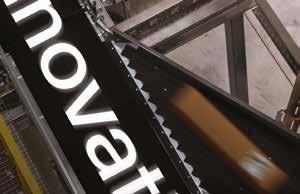


ing industry’s night of nights.
There are 22 awards up for grabs, with a rigorous judging system ready to
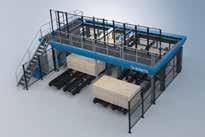





ing industry’s night of nights.
There are 22 awards up for grabs, with a rigorous judging system ready to


assess nominations as they come in.
Tickets for the event are now available with an Early Bird discount of 10% and can be purchased directly from

Industry Update, who turn 30 this year, have organised the Awards to celebrate the best and brightest of the manufacturing industry in the last 12 months.
Judging will be independent and conducted in association with the University of Technology Sydney (UTS), who have convened a panel of experts from across business, academia, peak bodies and government to scrutinise nominations.
Continues on page 10
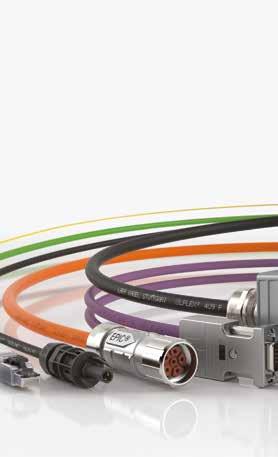
xcitement is building ahead of CeMAT Australia 2025, as Sydney Olympic Park prepares to welcome the region’s most comprehensive gathering for the intralogistics, supply chain, manufacturing and packaging sectors.

Held from July 22–24, the event returns bigger than ever, featuring the flagship CeMAT Australia show alongside the debut of Industrial Transformation Australia (ITA), a dedicated zone for Industry 4.0, digital manufacturing and smart factory solutions, as well as the Continues on page 28



US President Donald Trump’s tariff policies have sent shockwaves across the global economy - and the Australian manufacturing industry is feeling the ripples.

While our domestic sector has been hit directly by some of the tariffs, particularly around food exports and metals, we have mostly been subject to secondary impacts around supply chain disruptions and global commodity prices.
The main target is China, and for Australia, that can be an opportunity. In the last Trump presidency, our nation was positioned as a friendly partner to both sides of the trade war,
Continues on page 43
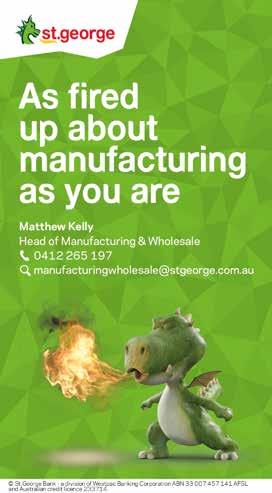


Reduce system downtime with more accurate measurement of critical flow and temperature conditions with the FS+ sensor from Turck. Detect leaks or blockages with this easy-to-use sensor. Not only does the FS+ measure the flow rate of liquids in pipes, it also monitors temperature. Plus, no moving parts or rotating sensor components reduce the chance of failure or introducing contamination into the system.
• Accurate and easy to use
• Rated to IP69K for harsh conditions
• Rugged, rotatable stainless-steel housing
• Switching or analog outputs
• Long lasting - no moving parts to wear out
Contact your local Turck sales representative to learn more.

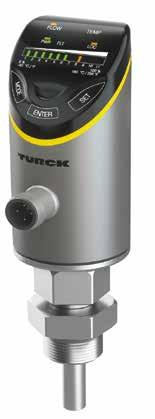
In the ever-evolving landscape of industrial machinery, Chicago
Pneumatic has once again set a new benchmark with their latest innovation – the CPVS 75-120 oil-injected screw compressor.
This compressor, ranging from 55 to 90 kW, is the result of dedicated investments in research and development, as well as in-house developed key components.
At the heart of the CPVS range lies an in-house designed compression element, paired with an IE4 efficiency motor.
This powerful combination not only enhances performance but also ensures lower compression temperatures and unparalleled reliability.
These compressors are designed to thrive in environments with ambient temperatures of up to 46°C thanks to superior component design.
Integrated dryers are available across the entire industrial range. For units equipped with an integrated dryer, an internal water separator is also included in the air cooler, ensuring optimal performance and efficiency.
The new generation compression element, crafted in Belgium, provides superior performance and improved capabilities.
With improved volumetric efficiency and reduced pressure losses, the CPVS 75-120 delivers up to 4% more free air while consuming up to 3% less power.
There is also an Interior Permanent Magnet (iPM) motor, another marvel of in-house Belgian engineering.
This oil-cooled motor provides optimal cooling at all speeds, making it eco-friendly and highly efficient. Its IP66 rating further underscores its robustness and suitability for high-speed operations.
Noise reduction is a critical factor in industrial settings, and the CPVS 75-120 addresses this with its innovative silencing baffle.
The filter mats pre-filter incoming air, ensuring superior air quality and low noise levels, making it ideal for operations close to the point-of-use.
The separate oil and air coolers are designed for high-quality cooling and extended lifespan. With a 5°C reduction in element outlet temperature
and easy access for cleaning and maintenance, these coolers exemplify thoughtful engineering.
The proven in-house designed inlet valve optimises the flow to the screw element, offering maintenance-free operation and a low total cost of ownership.
Similarly, the in-house casted oil separator vessel with an integrated minimum pressure valve (MPV) ensures optimal oil separation and minimal oil carryover, eliminating leakage risks.
Control and connectivity are at the forefront with the next-generation ES4000T touchscreen controller.
This user-friendly, full colour graphical display with touchscreen functionality, coupled with integrated connectivity through ICONS, helps optimise operations and achieve significant energy savings.
Finally, the in-house designed inverter, featuring Imperium –Variable Speed Technology, is tailor-made for screw compressor applications. Its robust industrial design, complete with IP5X protection, ensures durability and reliability.

Chicago Pneumatic are a leading provider of oil-injected screw compressors
The CPVS 75-120 oil-injected screw compressor is a remarkable blend of innovation, efficiency, and reliability. Chicago Pneumatic has again demonstrated its prowess in delivering state-of-the-art solutions that meet the demanding needs of modern industrial environments, all while significantly enhancing energy savings.
Chicago Pneumatic cpcompressors.com.au
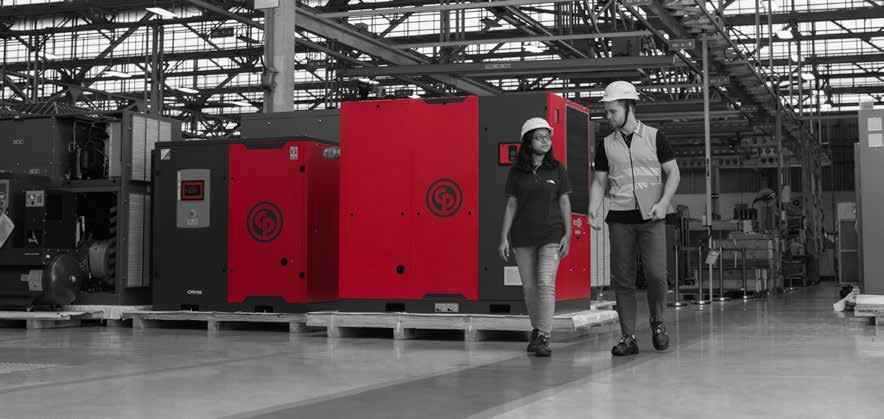
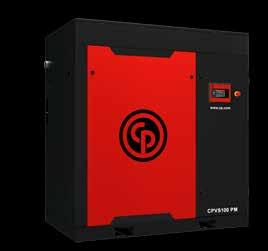

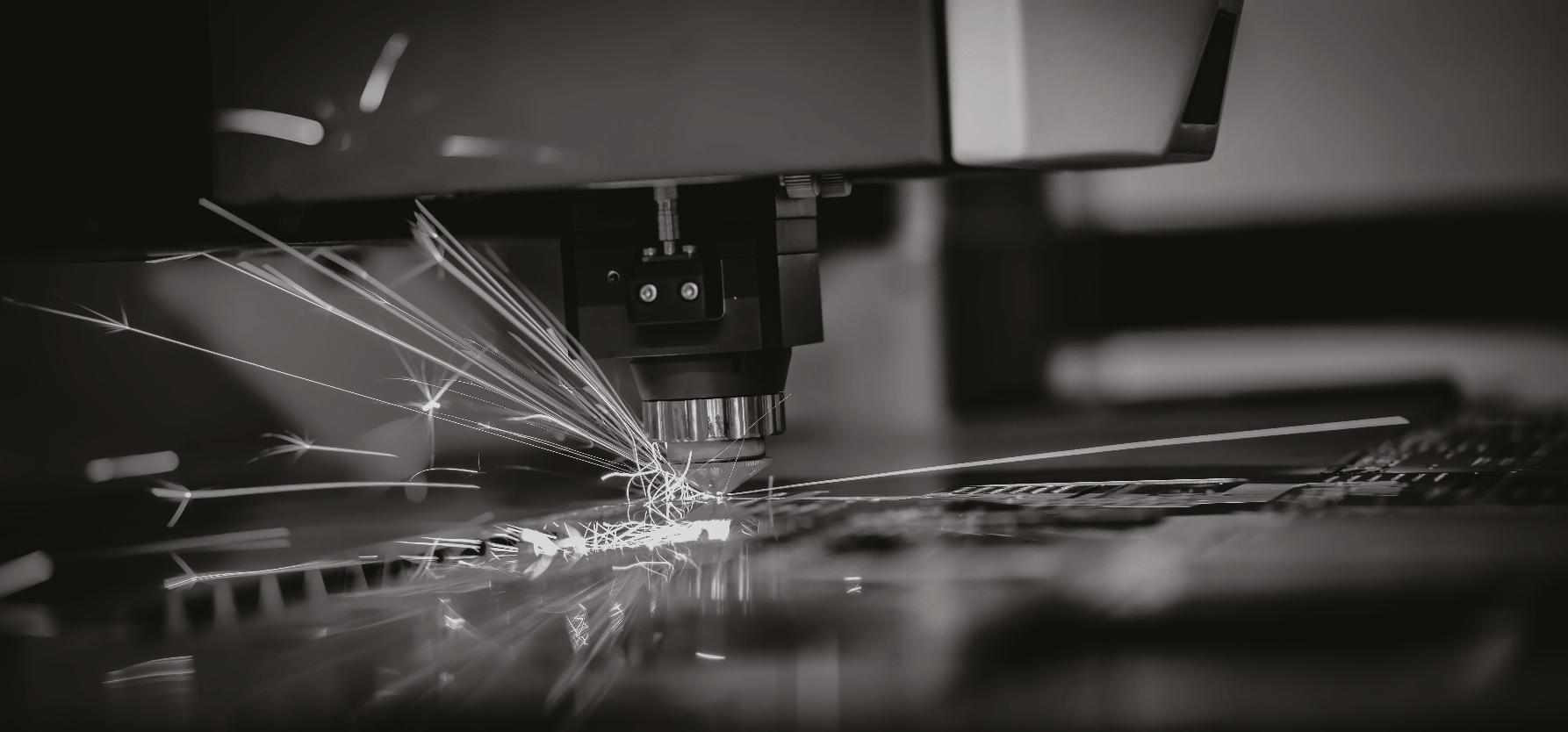

Publisher SCOTT FILBY scott@industryupdate.com.au
Advertising & Sales Manager PAUL FERRIS paul@industryupdate.com.au
Editor MIKE WOOD editor@industryupdate.com.au
Sub Editor RENATA GORTAN subeditor@industryupdate.com.au
Writer LUCY JONES writer@industryupdate.com.au
Universities & Collaboration Editor DAVID SLIGAR unieditor@industryupdate.com.au
Assistant to the Publisher JERIN BURZACOTT jerin@industryupdate.com.au
Advertising Sales Director SCOTT FILBY scott@industryupdate.com.au
Advertising & Sales Manager PAUL FERRIS paul@industryupdate.com.au
Marketing Manager DUMINSHA UDESHIKA marketing@industryupdate.com.au
Creative Director EDWIN KWONG production@industryupdate.com.au
Production Manager DUMINSHA UDESHIKA copy@industryupdate.com.au
Video Editor & Producer
CHARLIE LOUGHLIN video@industryupdate.com.au
Office Admin
JESSICA SUDESH admin@industryupdate.com.au
Finance & Accounts
MICHELLE ALCOCK michelle@industryupdate.com.au
Consultant TRACY FILBY tracy@industryupdate.com.au
Accounts Receivable LYN SLIGAR lyn@industryupdate.com.au
Subscription Assistant GUSTAV RHEEDER circ@industryupdate.com.au




Finding staff remains one of the biggest topics in the Australian manufacturing industry - and one specialist charity has sounded a warning that, without significant change, the sector might wither further.

transfer means workers are missing out on the latest skills and technologies needed to keep pace with modern manufacturing demands,” he said.
“Challenges like supply chain disruptions, workforce disengagement and rising energy costs are real. Manufacturers who invest in training the next generation will be best positioned to lead the way.”

The issue is not a new one, but as more and more experience leaves the sector due to the rising age profile of leadership within manufacturing, the problems that come from a lack of adequate replacements only continue to grow.



Apprenticeships Are Us, a registered non-profit set up to help build the next generation of manufacturing leaders, have sounded the alarm on the staffing problem, with General Manager Phil Cooksey detailing how years of expertise are walking out of the door without their place being filled.
“From our research and firsthand experience, it’s clear that much of the manufacturing sector is stagnating,” he said.
“While senior management often hold up-to-date qualifications, the wider workforce typically only possesses the most basic certifications.”
Cooksey added that manufacturing businesses often failed to invest in personnel development, leaving the next generation to be trained in an informal manner.
“This kind of ad-hoc knowledge
The Australian manufacturing sector can tap into a reservoir of talent through Apprenticeships Are Us, who exist to support businesses when they take on apprentices.
“We receive daily enquiries from individuals keen to start apprenticeships in fields like carpentry, plumbing, electrical work, machinery operation, and software development,” said Cooksey.
“We’ve seen the power of pairing enthusiastic new apprentices with experienced host businesses willing to share their skills. Expanding into new sectors allows us to make even more career dreams a reality.
“Mentorship is at the heart of what we do. We don’t just place apprentices. We support them with personal guidance, practical life skills and employability training.
“It’s about helping people turn ambition into long-term career success.”

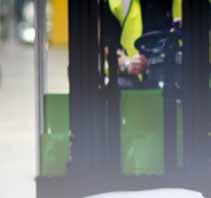
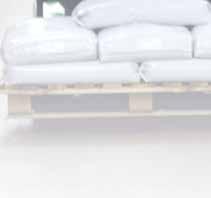





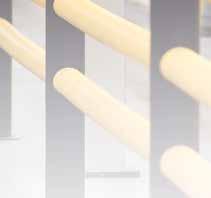




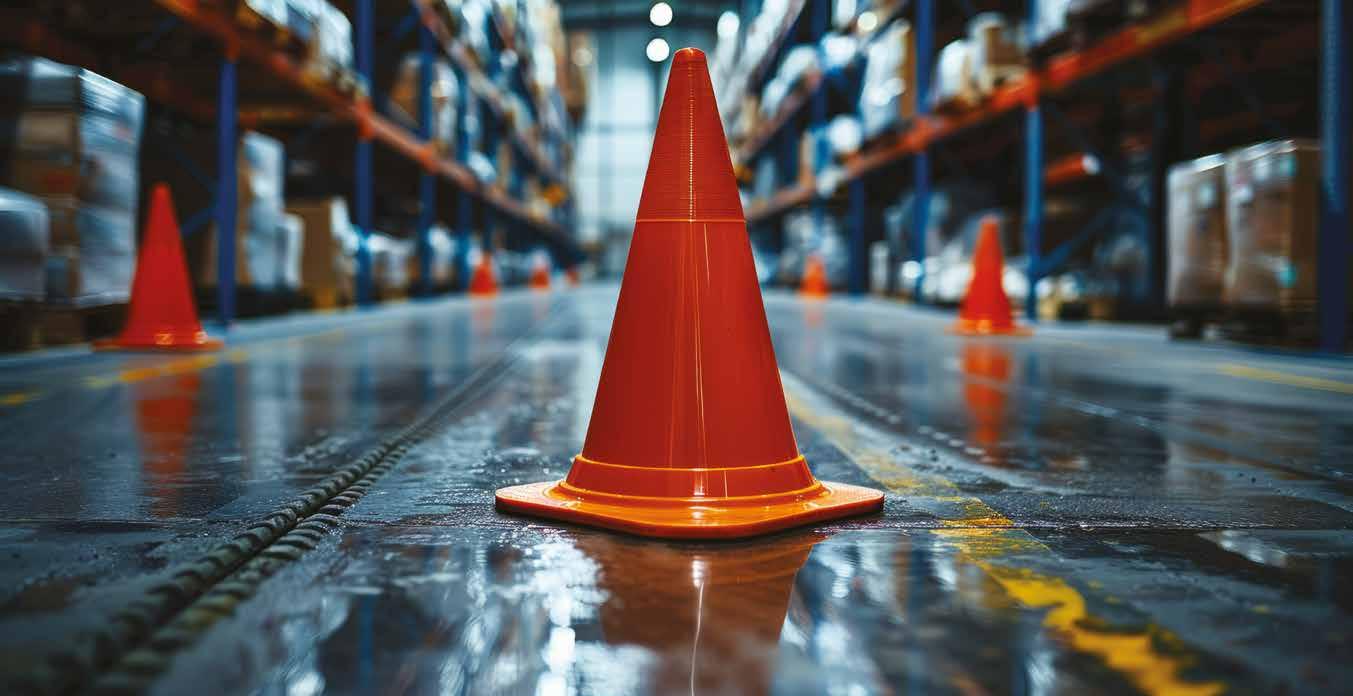

Publisher Scott Filby
We’ve been celebrating a lot this month - and well we should, because it’s our 30th anniversary!
Most start-ups don’t survive three years, let alone three decades.
Think about how much the media landscape has changed since 1995: no smartphones, very little internet…but Industry Update keeps going, and growing - in print and online - and now with our most glamorous product to date the Australian Manufacturing Awards.
Since the pandemic, we have seen a steep uptake of manufacturing businesses using print media, bucking the trend across the wider media industry.
The vast majority of advertisers are not getting the exposure that is essential to their survival. What many businesses still do not realise is that Google does in fact have a ceiling.
Many new and previous advertisers are now advising us that print is back in favour and Industry Update is enjoying the resurgence and benefits of the realisation that print is desirable to readers.
Real book sales (the printed type) are also up in Australia with an increase in recent years.
In 2022, the Australian book market reached $1.3 billion in sales with 70.9 million units sold, marking an 8.2% year-on-year increase. This growth is also significant when compared to pre-pandemic levels, with a 16% increase in sales compared to 2019.
IU history has always defied market trends. This issue of Industry Update is also the highly anticipated 30th Anniversary edition and will leave a lot of people wondering if their ‘online only’ presence is rather short sighted.

That’s not to say we neglect online, either. 2025 is already our best ever year for website traffic, with numbers exceeding all of 2024 combined by the middle of May.
These have been interesting times for our industry, with trade wars and actual wars, tariffs and elections. But year after year, Industry Update has defied market trends.
The publication became market leader in 2008 - right as the GFC hit the world markets - but this worked to Industry Update ’s favour and we have never looked back!
With statistics showing that the manufacturing industry is turning a corner and looking to invest again, the magazine is set to enjoy continued growth.
With the first Australian Manufacturing Awards - nominations are open, by the way!coming up in October, we will enter our fourth decade stronger than ever.
For those involved with marketing in the manufacturing industry, print, online and awards media platforms are 100% the best options. And that is the market speaking!
It is also important to note that Industry Update Media is now the only truly independent manufacturing media business in Australia. We put real and credible journalism above all else and we hope that shines through to the final products that we publish.
Finally, I take this opportunity to say thank you to our advertisers and readers that have made Industry Update possible all these years. And for many more to come!
See you at the inaugural Industry Update Australian Manufacturing Awards on 23 Oct 2025. Tickets are now on early bird offer, so get in touch!
Editor Mike Wood
Sometimes, it helps to tell readers how the editorial sausage is made.
When there’s a big event that we know is coming up - a Federal Election, for example - we will write an article about it well before it happens to claim the SEO real estate on the issue.
Then, as the story develops, we can amend to add the latest news as it comes in, update the timestamp and, hey presto, Google’s algorithm throws you back up the rankings.
As a result, everyone who searched for answers on what each parties’ policies were would have found our article on the subject, tracking announcements in real time.
It’s pretty standard journalistic practice these days, and you’ll now notice it whenever you search ‘What time does State of Origin start?’ or ‘Who is presenting the Logie Awards?’.
The reason I mention it is because, in the recent Federal Election, the article we wrote was very lopsided.
Anthony Albanese made manufacturing a key pillar of his pitch to the electorate thanks to the Future Made in Australia policy and, of course, entered as incumbents, allowing them to dispense with big giveaways on the campaign trail.
Peter Dutton, on the other hand, limited the policy to long lunches for SMEs, unwinding

Labor’s pledges to manufacturing and ending work from home, a policy on which they backflipped.
They did have significant announcements around nuclear energy and lowering inflation, which would have affected manufacturing, but their main focus was around reining in excessive spending, which meant little new for industry.
Industry Update has always taken a neutral stance on elections and has worked with every government on both sides of the aisle. That would have remained the same regardless who won.
With Labor returning with a thumping majority, manufacturing now has clarity going forward.
Reaction from across industry reflects this, with everyone from the trade unions to the employers’ associations welcoming the clarity that comes with majority government.
The worst possible outcome would have been a hung parliament of any description, which would have only added to the myriad uncertainties faced by the sector.
Now, we welcome the summit on productivity that Albanese will convene later this year, where stakeholders from across Australia - and especially from manufacturing - can discuss how to build our economy over the next three years.


























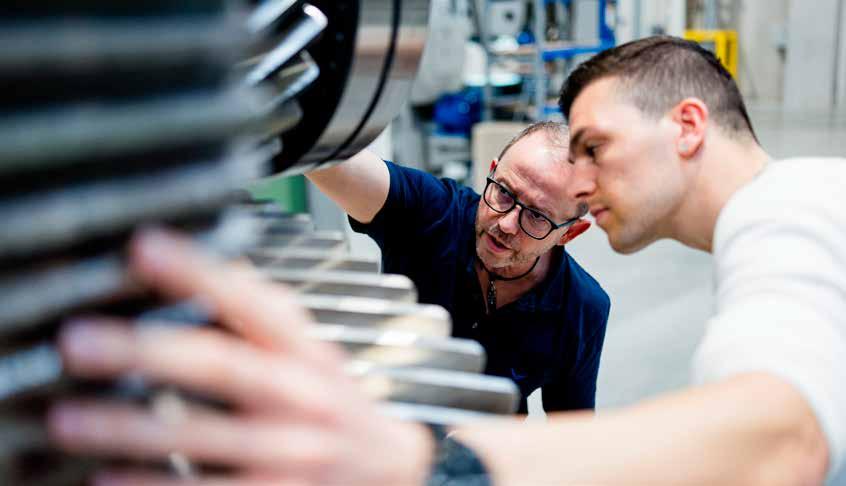

Nominations are now open across the following awards:
• Gold Award for Excellence in Manufacturing (individual)
• Manufacturer of the Year (company)
• Lifetime Achievement AwardHall of Fame
• Best medium business
• Best small business
• Best start-up
• Australian Made Manufacturer of the Year
• Innovation Award
• Supply Chain Award
• Defence Award
• Safety Award
• Digital Transformation Award
• Advanced Manufacturing Award
• Sustainability Award
• Community Impact Award
• Best Regional Manufacturer
• Trade Show Award
• Environmental Champion Award
• Rising Star Award (under 35)
• Apprentice of the Year
• Secondary School Award
• Manufacturing Worker of the Year
The event will be held at the
luxurious Sofitel Sydney Wentworth on Thursday 23 October 2025, and is sure to be an enthralling evening of entertainment.
The Awards are presented by St.George Bank and sponsorships for all the Gold Awards have been sold to leading brands such as Combilift, Lapp and SugarCRM,


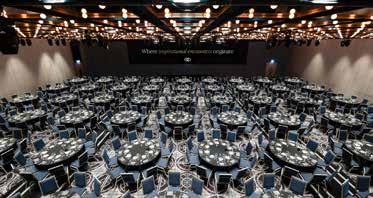

as well as official support from the NSW Government.
“The response to the Awards, both in terms of nominations and sponsorship, has been exceptional,” said Scott Filby, Publisher of Industry Update
“It vindicates our decision to launch such a major event in our 30th year of operation. Manufacturing has often


failed to celebrate itself properly, but we have never been afraid to talk up our industry.
“We look forward to reading through the many nominations and picking out the best - so get yours in today!”




Australian manufacturing isn’t known for blowing its own trumpet too much - and we at Industry Update are just as guilty as anyone else in that regard.
Our industry is made up of quiet achievers, people who get on with the job and let others shout from the rooftops.
We’re looking to change that with the launch of the Australian Manufacturing Awards, and in the interests of practising what we preach, we thought it would be a good time to share some great news from our publication.
As of the middle of last week, we topped 100,000 unique visitors to our site for the year, surpassing the whole
of 2024 in just over five months.
“This news shows just how much Australian manufacturing is responding to what we are doing,” said Industry Update publisher Scott Filby.
“IU turns 30 this month, but we are always looking forward, whether that is by launching the first Australian Manufacturing Awards, creating impactful social media content like our viral Reel from 2024
- 40 million views and counting! - or through meaningful journalism that adds value to our sector.
“We have revamped our online strategy to focus on the news that matters for the manufacturing sector while growing our print magazine through in-depth features that

provide real insights that decision makers in industry can use to get ahead.
“There has never been a better time to be involved in our industry
- or to advertise on Industry Update The numbers prove that what we are doing is working - and we can’t wait to chase the next story!”
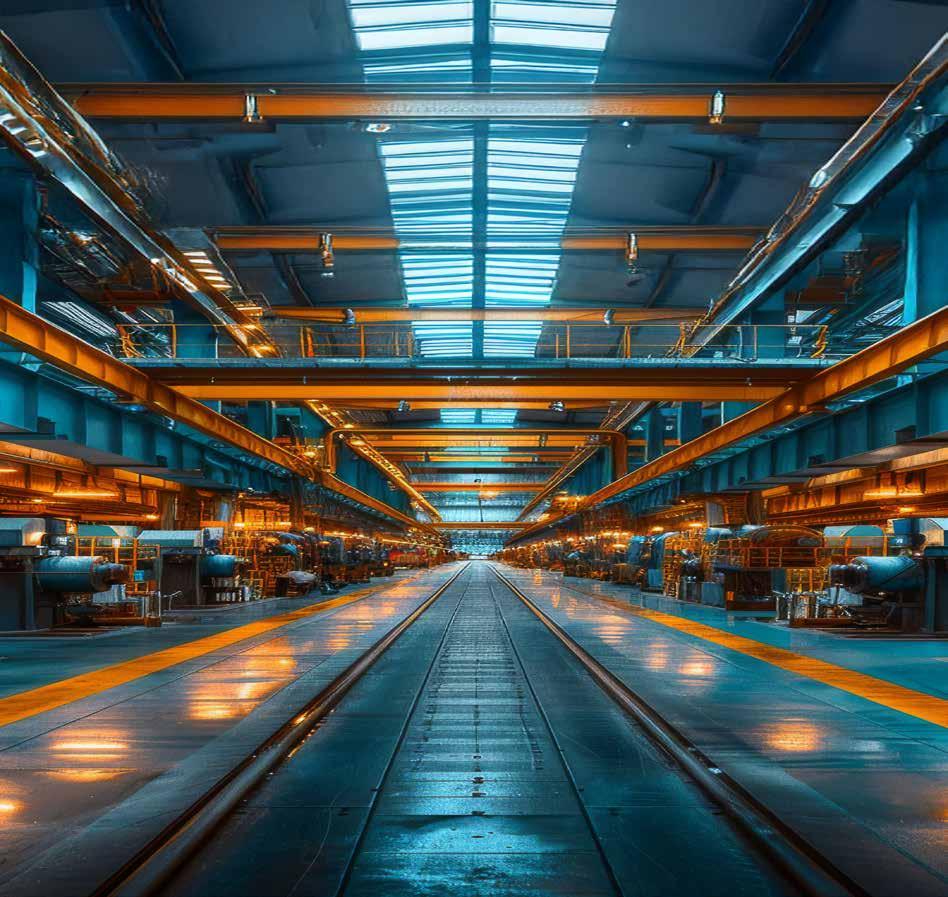












Australian manufacturing has had a fraught relationship with the United States since the return of Donald Trump to the White House at the start of the year - and now the numbers are in to prove it.
The National Travel and Tourism Office (NTTO) in the USA reported that business travel to the country has dropped 9% compared to the previous April - itself a massive fall as numbers had been up in March, which could be attributed to people who booked before the extent of Trump’s border controls and tariff plans were known.
Within those numbers, there was a 17.7% drop from Europe and a 35% drop in travel from Canada by car, with one leading tourism trade body suggesting that the cost of the change might be close to $20 billion AUD across the year.
“While other nations are rolling
out the welcome mat, the U.S. government is putting up the ‘closed’ sign,” said Julia Simpson, President and CEO of the World Travel and Tourism Council.
“Tourist detentions and steep tariffs have damaged the country’s reputation as a destination.
“This is a wake-up call for the U.S. government. The world’s biggest travel & tourism economy is heading in the wrong direction, not because of a lack of demand, but because of a failure to act.”
Flight Centre, a leading Australian provider of business travel, reported to the ASX that it is expecting a drop in profits as a direct result of what it called ‘recent US developments’, confirming that there had been a 16% fall in tourism compared to the equivalent period in 2024.
“People from Europe, the United Kingdom and Australia really don’t want to go to the States, given what’s

Australia’s leading designer and manufacturer of compressed air systems... for over 40 years
Pilot Air's air compressor solutions are designed and manufactured for Australian conditions.
We utilise advanced technology, materials and parts for high-performance, superior efficiencies and unmatched quality.
Our qualified team eliminate the need to outsource consultancy, design, manufacture, installation or servicing. We can take care of your system from the start to finish.
Working with Piot Air you’ll be sure of
• Professional advice
• Customised systems No reliance on third-parties
• Measurable cost and time savings
• Complete customisation Improved efficiency
• Reduced downtime
• Unmatched service timeframes
• Future-proofed systems

happening there. We’re hearing more and more people don’t want to go through passport control,” said their chief executive Graham Turner to the Australian Financial Review.
Speaking again to the ABC, Turner added that there might be an element of hearsay at play.
“People hear these sad stories of people being detained,” he said.
“It’s probably been happening normally but people hear more of it now. The unsettled climate in business has affected us as well.
“We’re pretty sure it’ll be a shortterm phenomena, particularly if
Trump does come to bargain with more and more countries.”
The Australian Government has not changed its guidance for travel to the United States, but has issued warnings, especially around border controls.
Wording has hardened, with issuance that border controls “actively pursue, detain or deport people who are in the country illegally” and that devices may be searched, as “officials may ask to inspect electronic devices, emails, text messages or social media accounts.”
Queensland’s leading boat dealer, Spirit Marine, has been appointed as the distribution partner for the world’s largest solar electric yacht company, Sunpower Yachts. The Gold Coastbased business will be the exclusive distributor for Sunpower, promoting their range of Solar e-Cruiser, Solar e-Sail, Solar e-Poweryachts and Solar e-Superyachts solely to the Queensland market. Australian-owned Sunpower is now the world’s largest solar electric yacht company, since its recent acquisition of Alva Yachts.
“Sunpower is at the forefront of solar electric yachting, consistently setting a benchmark in efficiency, performance, comfort and environmental responsibility, whilst still producing sleekly designed vessels,” said Peter Nicholson, founder of Spirit Marine.
“Following its recent acquisition of Alva Yachts GmBH, the firm is well-positioned to build on its existing reputation as a leader in the luxury eco-yacht market. This combination of cutting-edge technology, performance and luxury is why Spirit Marine is so excited about this announcement as we see this having the potential to become
one of the country’s leading boating brands,” said Nicholson.
Spirit Marine is a leading Australian boat dealer with operations spanning Queensland and are currently partnered with Beneteau offering their outboard power and sailboat ranges, including the highly successful Antares range.
Sunpower Yachts is an innovator in solar electric yachting and has already sold 12 yachts ranging from 44ft-90ft. With the world’s largest fleet of eco-friendly vessels, they are setting the standard for sustainable luxury on the water. Their yachts combine cutting-edge solar technology with exceptional design, offering a seamless blend of performance, elegance and environmental responsibility.
“Partnering with reputable boat dealers like Spirit Marine is part of our strategy to build the prominence of our brand and educate the boating community about the positive attributes of our vessels, along with the environmental benefits gained by choosing a Sunpower vessel,” said Grant Hudson, spokesperson for Sunpower Yachts.
150% for farmers, 64%
The Victorian Government’s unpopular Emergency Services and Volunteers Fund Levy (ESVFL) is set to kick in from the start of next month despite an ongoing drought that has caused many rural firefighters to hang up their helmets.
The new levy, which replaces the pre-existing Fire Services Property Levy, is slated for July 1 and will see farmers charged more for emergency services provision, despite many actually being members of those same emergency services as volunteers.
The Country Fire Service, which is volunteer-staffed, has seen several farmers resign their jobs in protest at the new law, which passed a late-night session of the Victorian legislature in May.
All Victorians pay towards the levy, but primary production land is taxed at a higher rate, creating a situation where farmers pay far more to protect their land.
The increase is variable, however it is expected to be 150% for farmland. Manufacturers are also at risk, as rates for industrial land will also spike, going up 64% - and was

already the highest to start with.
While residential and commercial rises are also close to 100%, the average home or shop is far smaller than manufacturing areas, which are themselves smaller than farms, meaning this tax will be felt more harshly. Fires are more common in rural areas, but largely not in private land such as farms. The bulk occur in
forests and national parks, or on the roads - all of which are owned by the government.
The levy kicks in with large parts of southern Australia in drought conditions, including western Victoria. According to the Bureau of Meteorology, rainfall was below average to very much below average in most of southern Western
Australia, South Australia and Victoria across all of May.
This is worrying for many, as the bulk of annual rainfall for SA and western Victoria usually falls in winter, and the lack of this ground moisture could contribute to bushfires in the warmer months.
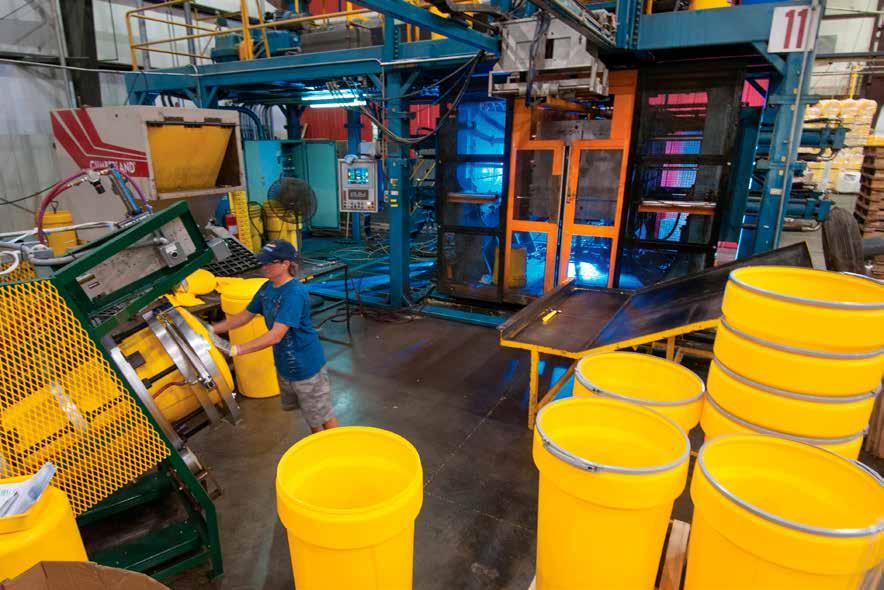
Eagle Lab Pack, Overpack and Salvage Drums from Global Spill &
handling and transportation





esa Deda is one of Australian manufacturing’s most trusted voices - so the news that she has been appointed as the first ever Chief Economist at accounting giants William Buck was greeted warmly by the industry.
Deda has built a reputation as a trusted commentator on economic issues through regular media appearances, backed up by years spent in business banking, first with St.George and then with Westpac, where she was the first female Chief Economist.
She has made a career out of turning complex economic issues into digestible, actionable advice for businesses, making her a perfect fit for William Buck, who work across the SME sector, particularly in manufacturing.
To celebrate her new job, Industry Update sat down with Deda to discuss the uncertainty that has dominated headlines in 2025 so far, and to get her reaction to the rate cut that has changed the economic landscape for businesses across Australia.
“Markets and the business community are now thinking about what’s coming next,” she told us.
“Three more rate cuts are fully priced in and it will depend on how global conditions as to how many rate cuts transpire, especially with tariff policy being volatile and unpredictable.
“Underlying inflation has entered
the Reserve Bank’s target band and policymakers appear more comfortable about inflation risks.
“The pause on reciprocal tariffs ends in July, but the RBA board meets just before that.
“Shorter-dated bond and swap yields are pricing in the risks of further easing from Australia’s central bank.”
Deda emphasised that, while the rate cuts were priced in, the uncertainty was still out there in the long-term.
“At the longer end of the Australian yield curve, bond yields are rising, partly because US longterm yields have undergone a sharp rise,” she said.
“The US bond market is the largest and most liquid in the world, and it strongly influences global bond markets.
“The Australian and US 10-year yields are closely correlated, so at the longer end of the yield curve, you’re seeing borrowing costs rise, and that will impact financial conditions more broadly.”
For Australian manufacturing, the uncertainty seems here to stay.
”If you’re a manufacturer who imports or exports, there is also ongoing uncertainty in supply chains due to unpredictable US tariff policy,” said Deda.
“The global trade norms and rules as we have known them for a long time are changing.
“If you’re importing, your costs
might be lower - for example, if China is trying to shift volume to non-US markets and discounts to help it do so - but if you’re exporting to the US, it is tougher.
“Take Australian steel, which was facing a 25% tariff entering the US, our second-biggest export market for steel. Then, Trump announced plans to double that tariff to 50%.
“It demonstrates that there are also a lot of changing rules around tariffs and trade at the sectoral level.”
Tariffs remain top of mind for many in the industry - not just for their impact on exports to the USA, but also because of their effects on the Australian dollar and global currency markets.
“When Trump introduced tariffs, he suggested it was to reduce the US trade deficit. The logic was that by making imports more expensive, US producers would bring production onshore,” explained Deda.
“That reduces the need for foreign inputs and foreign currency, which should cause the US dollar to rise relative to other currencies in other economies.
“If the US dollar rises, US exports become less competitive, all else being equal, and the trade balance might not change all that much - so that suggests the rationale has flaws.
“In reality, the US dollar index – a measure of the US dollar’s value relative to a basket of foreign currencies - has declined.
“That’s partly due to uncertainty from tariff policy and concerns about the US fiscal outlook, but also because a big spending bill was recently passed through the US House of Representatives, which will increase the US federal deficit significantly.
“The bond vigilantes are back and they’re worried about the sustainability of the fiscal balance. They’ve sold off US Treasuries quite sharply at the longer end, causing a sharp lift in longer-dated US Treasury yields.
“Longer-dated bond yields have also risen in other major economies, more notably in Japan but unlike the US, Japan’s government bonds are mostly owned by domestic investors.
“Further, Japan’s longer-end yields are rising for some different reasons, including the end of decades of deflation.
“Normally, rising US bond yields would help lift the US dollar, but we are seeing the opposite – one of the reasons is because investors want more compensation for holding US long-term debt.
“This is reflected in the US term premium. So, we are seeing divergences open up between bond markets and currencies. There is still more to play out and a space worth watching.”
William Buck Australia williambuckaustralia.com
By Besa Deda, Chief Economist, William Buck
Manufacturers are facing a period of transformation. There are initiatives from the Federal government that are fostering growth in areas such as clean energy, green metals and critical minerals processing.
However, the industry is also facing challenges due to the fragmentation of globalisation and the unpredictable nature of US tariff policy.
These factors are impacting the outlook for global economic activity and the growth prospects of Australia’s major trading partners.
The US government announced a 90-day pause on reciprocal tariffs on 9 April, but the baseline universal tariffs of 10% remain.
Further, there are tariff announcements occurring at the sectoral level, such as for steel and aluminium. This has unleashed persistent and elevated uncertainty.
In today’s rapidly changing economic landscape, understanding possible scenarios is more important than ever.
Manufacturers will need to continue adopting technology and strengthening supply chains to build resilience. Making strategic investments will also be crucial.
Meanwhile, domestic economic activity is set to pick up, as recent rate cuts boost consumer spending growth and elevated public spending props up activity.
A slowing in inflation pressures opened the door to rate cuts. More
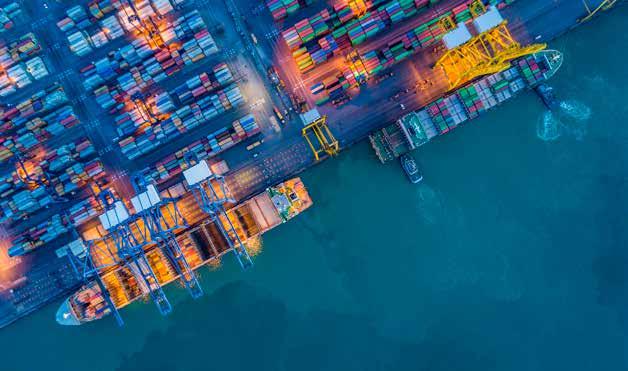
rate cuts are on the way. Interestrate markets are anticipating at least two more rate cuts before the end of this year.
The path of monetary policy will highly depend on global conditions, trends in household spending and the health of the jobs market.
Manufacturers must stay sharp on exchange rates when pricing and managing costs.
Volatility is high for currency markets and there are divergences in markets appearing. US government bond yields on longer-dated maturities have risen, pushed higher
by escalating concerns over the federal fiscal deficit.
However, the rise in long-end yields is not confined to the US or just the bond market. The US dollar has also depreciated against a basket of major currencies. Can this depreciation continue and what does it mean for the Australian dollar?
Seeking insights that matter to your business? Register your interest for the next Manufacturing iLAB — a quarterly, invitation-only luncheon hosted by William Buck, St.George, Coleman Greig Lawyers and AON, held in Parramatta.
now
Designed for Western Sydney’s manufacturing leaders and supporting professionals, each session offers practical takeaways for CEOs, CFOs and business owners.
You’ll hear insights from industry experts, explore sector challenges and connect with those shaping the future of Australian manufacturing.
Register your interest





It is a great honour for me as the new Minister for Industry and Innovation and Minister for Science to be able to play a modest part in taking Australian scientific and industrial endeavour forward.
Industry policy is my passion.
It’s my passion, because I believe in an active social democratic state that works for every Australian.
I want Australia to be a manufacturing powerhouse in an increasingly digital world.
To be the indispensable industrial, technological, energy and strategic partner to the region in which we live.
And to do that by deploying our strengths in energy and resources, leveraging our proximity to the fast-growing Asia Pacific region, and backing our brilliant research institutions and our smart, skilled and resilient people.
Together with Dr Andrew Charlton, Assistant Minister for Science, Technology and the Digital Economy, I want to deliver world-class industry policy that is informed by evidence and driven by purpose.
The task before us is very clear.
Australia must build its economic complexity and resilience – and do it with purpose and urgency.
When the Prime Minister first shared his vision of our Future Made in
Australia policy in April 2024, he said we needed to be clear-eyed about the times we live in.
He said we needed sharper elbows when it came to marking out our national interest, and we needed to be willing to break with old orthodoxies.
The Prime Minister was not heralding a retreat into protectionism, or the rise of a hulking government crowding out private investment.
What he was signalling was a need to move past arid, think tank platitudes about the role of government and old binaries.
Government needs to work alongside the private sector to grow the economy, boost productivity and secure prosperity.
Combining market tools with government action to create opportunity for generations of Australians.
We’ve got to build state capacity, and private sector capacity, and not see those imperatives as in conflict with each other.
We can make Australia stronger by investing in what matters – and drawing on our shared values and strengths.
We also have a unique opportunity to join up our research and innovation system with our Future Made in Australia framework.
Given we have a productivity
challenge, this is an opportunity we can’t miss.
Australia must have competitive advantage in high productivity, high skill jobs and industries of the future, including advanced manufacturing.
And the Australian Government and Australian firms must harness technological advancement and innovation, like artificial intelligence to deliver investment, economic growth and lift lagging productivity.
All of us, public and private, State and Commonwealth, research institutions and civil society, the physical sciences and the social sciences must lift together and pull our weight.
Working together, to build the capacity of Australia to meet this historical moment and build a secure, sustainable future for Australia and Australians.
Our Future Made in Australia plan is about maximising the economic and industrial benefits of the global move to net zero emissions and attracting substantial international investment to do so.
My predecessor, Ed Husic, and my Cabinet colleagues, put important policy structures in place during our first term in office. Much has been achieved.
My task, in this coming term, will be about coordination, delivery and impact. To join up our research and innovation

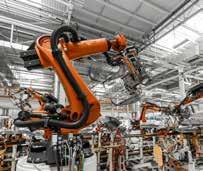
system with our Future Made in Australia framework.
I want to focus on coordination of national resources and programs and deepen the cooperation between industry and our great research institutions.
I look forward to receiving the recommendations of our strategic review of existing R&D frameworks when that is completed later this year.
In the meantime, I will be meeting stakeholders and consulting to help inform my own views about how we maximise our efforts and investments.
Delivering a world-class industry policy isn’t an abstraction.
It is at the heart of the Albanese Government’s plan for long-term growth and jobs, for security in its broadest sense, for lifting our productive performance and making sure that every Australian is part of our national project and shares in its success.
Let’s get cracking!













Are you sure you can do this”, the gruff shearing contractor asked as I arrived for my first day working for him in the red dust of Thargomindah in remote Queensland.
I was a long way from home with a newly minted aerial stock mustering endorsement.
But after months of chasing my dream, unsuccessfully in the cities, this was my shot.
“I am definitely up for it!”
There and then, near the outback town they still call Thargo, it was my time to fly. And fly I did, in a very small plane, in very tight circles, very close to the ground.
I had already learned the path to becoming a female pilot was going to be tough. Too many people weren’t ready for someone like me in the left hand seat at the front of the plane.
But that didn’t stop me. I kept dreaming. I worked. I studied. I failed. And then I flew.
It took time. A lot of hard work, and a few tears too.
Aviation isn’t one of those vocations you can just step into. You have to earn your wings.
And I earned mine.
That was good enough for the boys in the blue singlets in the shearing sheds of western Queensland. And it was good enough for me. I could fly.
The wisdom of those workers, who built our prosperity with calloused hands and strong backs, has always been my North Star.
Looking back, I wonder how they would react knowing that a 20 year old bush pilot from the city was now the Leader of the Federal Opposition.
What would those boys from the bush tell me to say about Glass Cliffs?
What I do know is it is the greatest honour of my life to have been elected as Leader of the Liberal Party of Australia.
And to be the first woman to have reached that role fuels my fire all the more.
I am proud that as my granddaughter grows up, this moment will inspire her to dream bigger and run further.
My biggest motivation will always be to create an even better Australia for all my grandkids.
They call me Glamz, I want them to see Glamz succeed.
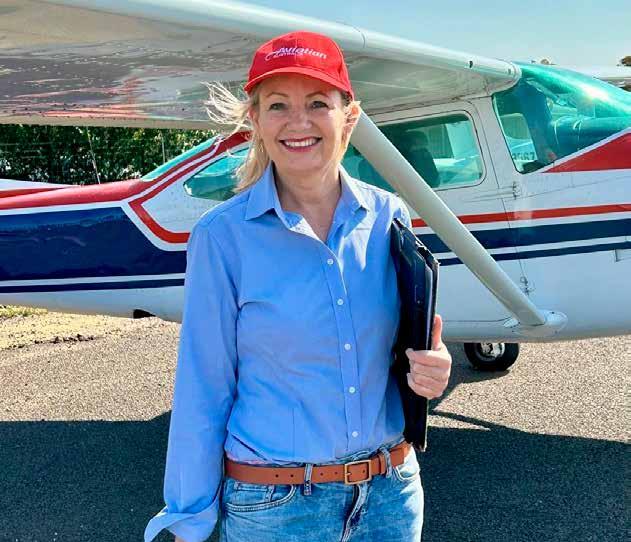
The support I have received from colleagues and the community has been overwhelming.
But, some believe I face the ‘Glass Cliff’. That is where a woman is ‘given a mess to clean up that she will inevitably fail at.’
When I put myself forward for the leadership, Glass Cliffs weren’t front of mind.
No one told me about Glass Cliffs when I placed ads in regional papers across the country to try and land a job as one of the first Australian female mustering pilots.
No one warned me about a Glass Cliff when I went to uni, with a baby in a capsule, as our family struggled to make ends meet.
No one asked me about Glass Cliffs when I hooked up my caravan, painted it Liberal blue, and drove up and down the Murray to run for Parliament.
Glass Cliffs didn’t feature in the analysis of my appointments
as Health Minister, Environment Minister, nor as Deputy Leader of the Opposition.
As far as political analysis goes, it is just wrong.
You see, politics is another one of those vocations you don’t just step into.
In politics, just like flying, you need focus, discipline and nerve
Sometimes it’s clear and bright, but more often than not there are stormy skies.
For over 20 years I have served in the national parliament. I have been a Cabinet Minister in three different governments.
For three years I served as the Deputy Leader of Opposition, and I have fought hard every single day for the Australians who do so much, but ask for so little.
I earned my spot.
There is no doubt that all too often women are left to clean up the mess.
Whether that is in broken homes or in corporate boardrooms, women are often asked to clear higher hurdles and pass different tests.
But when the most successful political party in our nation’s history picks a leader, it doesn’t do so based on chromosomes.
I earned my shot.
I am the leader for this moment. I am here to listen, to rebuild and to modernise the Liberal Party. I am not interested in the noise or in echo chambers. I am focused on working hard for Australians each and every day.
With hard work and humility, we can win back the trust of the community.
And as for ‘Glass Cliffs’, I couldn’t give a stuff about them.
I intend on steering my party skyward, into smooth air and sunlight. Cliffs don’t matter when you’ve got your wings.
With over 118 years of engineering experience, Boge can provide an efficient one-stop solution for your compressed air requirements.
Whether for process air, plant air, packaging or other applications, Boge has the solutions that you need.
Dedicated Class 0 certified compressed air systems for all industries. offering guaranteed oil-free air for safe and high-quality end products.
Process filtration plays a critical role in maintaining product quality, ensuring safety and meeting regulatory standards in industry.
In any production plant, compressed air and nitrogen have an important function across different stages, ensuring product excellence and safety.
From dairy and baked goods to beverages and snacks, one common thread runs through it all: the need for uncompromised air purity.
For critical applications within the plants, you need ISO 8573-1 Class 0 oil-free air to ensure the highest standards of quality and safety.
To ensure that your production facility is operated safely, and that
all of the equipment is protected, it is crucial that the compressed air meets the relevant quality standards.
The most important of them is ISO 8573-1. This internationally recognised air quality standard is divided into air quality classes for the three main types of contaminants (moisture, oil and particles) and defines how many contaminants the air may contain at a specific point in the compressed air system.
Boge is offering the following products along with complete downstream air treatment components as well as high pressure boosters for PET bottling, which is an integral part of any packaging plant.
Reduced speed, low compressor temperatures and extremely low wear. The oil-free SO-3 screw compressor achieves top ratings for free air delivery with low specific power consumption.
The compressor is particularly suitable for industries that require high-quality, oil-free compressed air in large quantities.
Produces Class 0 quality oil-free compressed air from oil lubricated compression, while eliminating expensive condensate disposal.
The principle is absolutely safe and unbeatably priced, making it the ideal solution for oil-free compressed air, especially for sensitive industrial applications.
Super-compact, quiet and with a low vibration level, the EO series enhances the oil-free segment and literally fills any gap.
It is particularly recommended for sensitive applications in which oil-free air and unobtrusive operation are essential. Smart control allows scroll airends to be switched on or off as required.
The completely oil-free piston compressors of the new PO Series produce high quality compressed air for even the most sensitive applications. Piston compressors of the K Series
work with an innovative, oil-free pushrod system in an all-new compact size for small requirements.
Traditionally, companies sourced the required N2 & O2 for their production processes from external suppliers, delivered in bulky containers that required storage space along with huge storage losses and inefficiencies.
On-site N2 generation makes the operations independent of an external gas supply and very low generation costs.
On-site nitrogen and oxygen generation brings a wide array of benefits.
• Cost efficiency
• Customised purity
• Streamlined operations
• Continuous supply
• Enhanced safety
• Environmental impact
• Peace of mind
BOGE Compressors www.boge.com/en-au

Australia’s brewery industry plays a vital role in the national economy, with around 878 businesses contributing an estimated $16 billion in economic activity and supporting 100,000 jobs across the supply chain.
From large-scale breweries to independent craft producers, the sector has experienced remarkable growth over the years.
However, operating in a country with the world’s third-highest beer tax presents significant challenges, increasing financial pressure, squeezing profit margins and reducing market competitiveness.
To stay ahead of these challenges, many breweries are turning to automation - particularly smart automation - to streamline operations and improve efficiencies.
No stranger to the sector, Rod Ryan, Head of Business Development (End Users) at SMC Corporation has been collaborating with SMC’s customers for more than three decades.
“SMC has worked hand-in-hand with the sector since our early days in the market,” he said.
“We have a sound understanding of their needs and continue to evolve with them. Today, we are able to support all aspects of the production process on-site.”
Rod also emphasises the importance of working with Original Equipment Manufacturers (OEMs) that supply plant systems to Australia’s leading breweries.
Like many industries, breweries are
increasingly focused on energy efficiency across their production lines.
“We work closely with OEMs to ensure they provide scalable, energy-efficient systems,” he said.
“We continue to see rising demand for energy-saving systems as producers recognise the importance of saving on energy bills, reducing their carbon footprint and improving efficiencies.”

One of the most effective ways to achieve savings in a compressed air system is by simply reducing pressure.
“Globally, SMC is committed to energy efficiency initiatives,” said Ryan.
“By lowering pneumatic line pressure from the standard 7 bar to 4 bar, our customers can reduce energy costs by up to 29%.
“SMC’s team will review your site and advise on next steps for an energy saving audit.
“Any subsequent system optimisations are conducted at a plant level (rather than focusing solely on individual machines) to ensure savings across the board.”
Demand is growing for smart, modular and flexible production systems that allow independent brewers to adapt and change quickly and wireless products are central to this mission.
“This is particularly exciting for independent breweries wishing to scale at will,” says Ryan.
“SMC is working closely with our customers to deploy new-generation technologies that will not only save installation time and reduce downtime, but also allow us to perform updates both on and off-site.”
SMC’s EX series continues to make waves as a unique product offering that delivers a host of big benefits, highlighting the EX260 as a compact, cost-effective fieldbus solution for output applicable to SMC’s most popular directional control valves such as the SY series.
“Technologies such as these have shown themselves to be integral to process control and upgrades,” added Ryan.
“In fact, we have seen customers save as much as two days’ worth of shutdowns by simply deploying a solution such as this one.”
“It can control up to 32 solenoids in one manifold and is suitable to all major protocols such as EtherNet/ IP, Profinet, EtherCAT, Profibus-DP, DeviceNet and CC-Link.”
The EX260 series has standard dual-port connectivity, eliminating the need for switches or branch connectors. In addition, its IP67 enclosure rating ensures protection against
Italian motion control specialist
CMZ Sistemi Elettronici – represented in Australia by authorised distributor LAPP Australia – has released its advanced SBD series of brushless servo drives, offering high-performance control and decentralised flexibility for a wide range of industrial automation applications. Designed for brushless motors from 0.7 kW to 7 kW, and available in both 230 VAC and 400 VAC versions, the SBD servo drive supports currents from 5 to 20 A. Built to streamline installation and simplify motion control, the drive features a compact form factor
that integrates essential elements such as EMC filters, braking resistors and Safe Torque Off (STO SIL3) functionality for enhanced safety.
The SBD programmable integrated PLC model stands out with its built-in IEC 61131 structured text, allowing it to operate independently in many decentralised applications.
When paired with expansion modules and an HMI via RS-485 Modbus RTU, it enables complete standalone control for simple motion sequences. PLC capabilities include jogging, positioning (absolute and relative), homing, gearing and touch probe functions.

dust and washdown environments.
The EX600, on the other hand, offers a full suite of diagnostics and programmable parameters to meet the most stringent requirements.
“This series offers excellent flexibility including digital input, digital output and analogue input unit options,” says Rod.
“With the use of D-sub output blocks, a maximum of 9 remote D-sub manifolds can be attached to one EX600 communication module.”
“SMC is more than just a supplier of automation components, we actively collaborate with our customers - and OEMs - to develop tailored solutions that address both their current and future needs.
“I strongly believe that real energy savings can only be achieved when we work together, and this is why we are so focused on partnering with OEMs from the get-go.
“Through innovative technology and energy-efficient strategies, SMC continues to support the brewery industry in optimising performance and maintaining competitiveness. We look forward to where the next decade takes us.”
SMC - smcworld.com
Engineered for easy configuration, tuning and diagnostics, the drive is supported by CMZ’s SDSetup software. Connectivity is robust, with CANopen, EtherCAT, Profinet and pulse/direction interfaces, plus a micro-USB port and configurable I/Os.
It supports feedback via resolver, TTL incremental and Hiperface absolute encoders.
“With a combination of internal programmability, versatile communications and integrated safety, the SBD servo drives offer a smart, space-saving solution for OEMs and machine builders,” says LAPP

Australia Industrial Automation Manager, Robert Lloyd.
LAPP Australia lappaustralia.com.au
Caught between higher costs, smaller runs and distance from global markets, Australian manufacturers must work smarter to compete, survive and thrive.
With agile robots, sensors and software now more accessible than ever, learn how these Aussie makers punch above their weight on the world stage.
“Australian manufacturers must think differently,” explained Dr Paul Wong, founder of Applied Robotics.
“While European or Asian factories might dedicate entire facilities to a single product line, our market requires solutions that can handle greater variety with shorter runs, all without sacrificing profitability.”
For decades, manufacturing automation was built on fixed systems perfect for mass production, but not economically viable when producing low volumes or custom product variations, leaving Australian manufacturers in a tough spot, with:
• More product variants with shorter production runs
• Higher operating costs that needed to be offset with greater efficiency
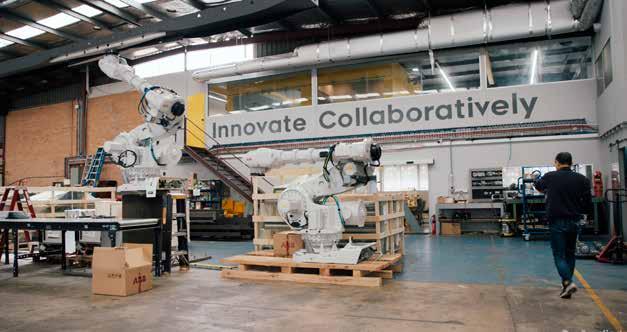
• Need for faster response to changing demands
The emergence of adaptive automation changed everything, enabling rapid reconfiguration through software updates rather
‘100% bespoke’: Why custom automation cells are perfect for manufacturing
Automation and robotics can seem like something designed for big manufacturers, operating at scale with huge amounts of throughput.
One business, however, is looking to change that.
Bayer Engineering are experts in specialised robotics and automation machinery designed around the customer, with fully custom-built solutions that can help manufacturers of any size to introduce automation into their systems.
“It’s all custom-built based on the customer requirements. No two machines are alike. No machine is off the shelf. It’s really, really purpose-built,” explained Simon Bayer.
“What we’re doing is split into two parts.
“The first is jigs and fixture development - design and manufacturing for all sorts of environments, particularly CNC machining and assembly.
“The other is automation and robotics. In that area, we design and build robot cells, automation cells, automated jigs and fixtures, and it’s all for the manufacturing industry.”
For Bayer, the process is all about building out around the customer’s issues.
“Usually the clients come up with a problem they’re having and need a solution for,” he explained.
“They want to make their process more reliable, more repeatable, they want to make it quicker, or they just need a solution for something that’s not there yet.
“When they tell me what the problem is, I start thinking about solutions. They may already be out there somewhere and could be modified, or it might require me to come up with new solutions.
“I generally sketch something up roughly and show them if that’s going in the right direction. If it is, I detail it a bit more and start building the machine from there. It is a constant exchange with the client to ensure that their needs are met.
“It’s all 100% bespoke. We use off-the-shelf components from recognised brands, but the machinery and the solutions are all bespoke.”
Bayer Engineering bayer-eng.com
than mechanical retooling.
“It’s not about replacing human labour. It’s about reimagining the entire manufacturing process to create competitive advantages through adaptability,” said Dr Wong.
The payoff is significant: faster changeovers, economic smallbatch production and the ability to produce customised products at competitive prices.
Continues next page

Walk into advanced Australian factories today and you’ll see four key technologies working together to pivot as quickly as the market demands:
1. Robots with powerful and precise product handling
At the heart of this revolution are machines that move with precision:
• Articulated robots: Multi-jointed arms reach into tight spaces or lift loads up to 1 tonne.
• SCARA robots: ‘Selective Compliance Articulated Robot Arms’ execute up to 60 precise movements per minute to assemble small components.
• DELTA robots: Suspended from above, these parallel robots zip around at dizzying speeds – up to 120 picks per minute – their synchronised movements resemble a choreographed dance.
• COBOTs: Unlike their caged counterparts, ‘Collaborative Robots’ work shoulder-to-shoulder with humans with in-built safety systems, combining human judgment with mechanical precision.
2. Smart motion systems
Intelligent transport and gripper systems create factory-wide coordination:
• Programmable work carriers smoothly shuttle components between operations
• Smart grippers with tactile sensing can handle anything from delicate biscuits to heavy metal
• Soft servo technology allows robots to apply precise, controlled force for delicate assembly
• Autonomous Mobile Robots (AMRs) navigate freely, not on fixed paths, adapting routes in real-time
This creates what Dr Wong describes as ’a dance of coordinated movement’ where products flow smoothly through production without traditional rigid infrastructure.
3. Advanced 3D sensing for a soft touch
The ability to adapt to variations makes the difference:
• 3D vision systems identify and inspect components regardless of orientation
• Force and torque sensors allow precision assembly with a gentle touch
• Soft guarding systems create safe human-robot workspaces without physical barriers
Capral Aluminium’s packing system uses 3D cameras to identify over 6,000 unique and reflective aluminium profiles and then determines optimal picking and packing strategies on the fly.


4. Advanced software ‘brains’ using data and AI Manufacturing Execution Systems (MES) and other advanced software – once only affordable for large enterprises – now act as the affordable, cloud-based brains behind the operation, tying everything together:
• AI algorithms that make complex decisions without explicit programming
• Digital twins that simulate processes before implementation, eliminating costly mistakes
• Automated programming that translates CAD models into robot instructions in minutes, not days
“When we deployed Australia’s first AI-based factory automation system for Capral in 2018, the intelligent algorithm could identify, grasp and nest each unique extrusion shape in real-time. A concept also central to Arnott’s revolutionary biscuit assortment system, which processes up to 105 biscuits per second,” said Dr Wong.
The business case for adaptive automation goes well beyond labour savings. Applied Robotics has helped deliver competitive advantages ideally suited to Australian conditions.
When Legrand Australia needed to maintain local light switch manufacturing in the face of offshore competition, they turned to adaptive
automation.
We designed a system that handles configurations from single switches to six-gang units with minimal changeover time, doubling production output while reducing
“When products can’t be produced cost-effectively locally, they inevitably move offshore,” said Dr
“Adaptive automation helps Australian manufacturers compete on factors beyond just labour cost – enabling some operations to be brought back onshore.
Unlike fixed automation, modern systems can be reprogrammed to meet new requirements, protecting capital investments over the long term. The results speak for themselves.
Capral Aluminium’s implementation of AI-powered robotic packing slashed freight volumes by 50% while accelerating distribution and improving quality and handling an ever-changing range of 6,000 unique profiles.
At an Australian audio technology manufacturer, our innovative assembly system achieved a 95% first-pass success rate, reducing the number of operators required from 2-3 to a single operator.
After guiding over 700 automation projects across diverse industries, Dr Wong and the Applied Robotics team have seen the good, the bad and the costly.
“Without thoughtful planning, the hard truth is that up to 80% of manufacturing projects fail to achieve either business case target costs or timelines, despite no limitations with the technology itself,” he said.
To avoid becoming part of that statistic, Applied Robotics apply three human-centred principles:
1. Start with the big picture
Look beyond individual machines to the entire process flow. Consider how materials, information and finished products move through your operation to avoid bottlenecks elsewhere.
2. Sweat the small stuff
Successful implementations require meticulous attention to specifications, edge cases and integration points. These can make or break commercial success over time. Rigorous testing and validation are essential investments.
3. Champion your project
Every successful automation project needs a dedicated leader who can bridge technical and business perspectives while driving the project to completion. Without this champion, even the best technology can falter.
Australian manufacturers are discovering that their traditional disadvantages – smaller runs, higher customisation – can become strengths with the right technology.
“The planning phase has the most influence on final results. The most brilliant project management or technology solution cannot overcome a poorly conceived business case,” explained Dr Wong.
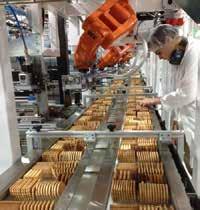
“Since 1985, our driving vision has been to transform Australian industry into a globally competitive manufacturing powerhouse. With these technologies, local manufacturers can not just survive but lead in global markets.
For Australian manufacturing, success isn’t about competing on volume.
Adaptive automation breathes new life into the local industry with systems that adapt as quickly as market demands change, turning traditional disadvantages into our greatest strengths - and the transformation is just beginning.





Price pressure and competition for skilled workers is fierce in the protein industry.
To be successful, food producers like Maple Leaf Foods must find better ways to capture more value from the equipment on their plant floors –and attract, train and retain workers.
Paired with the tight talent landscape, the global demand for food continues to grow.
Food manufacturers are under increased pressure to adopt automation and carbon-neutral methods to improve operational efficiency, seamlessly integrate equipment, gain visibility across their systems and secure IT and OT networks.
As the world’s first carbon-neutral food company, Maple Leaf Foods has embraced automation and digital transformation at every level to drive efficiency and quality.
The company has formed strategic partnerships and launched innovative programs at multiple facilities.
These programs allow facilities to try new applications for automation and digital transformation technology – gaining a competitive edge by using the latest technologies to improve quality and productivity.
With a strong reputation for quality and innovation through brands like Maple Leaf, its Schneiders meat brand and Greenfield Natural Meat Co., the food producer leads the industry by integrating cutting-edge technologies that enhance
Iproduction and sustainability.
Project 1: Using Augmented Reality (AR) and Digital Twin Technology to Empower Workers
Leadership at Maple Leaf Foods’ Guelph Manufacturing Plant identified a need to improve overall equipment effectiveness (OEE) and worker training. Maple Leaf Foods, along with Rockwell Automation and PartnerNetwork members HarpakULMA Packaging and PTC, set out to develop an AR-based training program using Vuforia Expert Capture.
Harpak-ULMA deployed its embedded OEE Application, which automatically calculates, monitors and reports packaging line performance in real time.
Next, Harpak-ULMA deployed the entire library of PTC AR applications and created its own machinebased AR experiences.
Most AR user experiences leverage the machine’s digital twin, a dynamic model that virtually represents the physical machine.
The pilot project quickly demonstrated the value of AR in a packaging line. For example, the OEE application delivers self-diagnosing machine reports that identify machine downtime and high-priority action items by shift.
Using remote connectivity, the
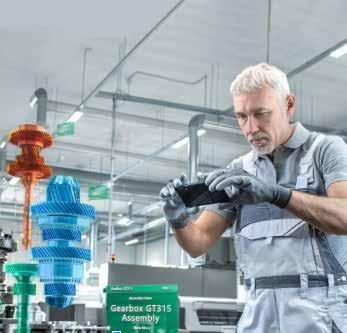
Harpak-ULMA team monitors these reports daily, identifies any high-frequency stoppages – and then builds step-by-step AR-based remediation routines that operators can access in real time.
AR-based training is underway, and the company is in the process of evaluating the benefits.
They anticipate that the interactive, visually intensive training will help minimise language barriers, decrease worker error – and reduce training cycles in an environment that often experiences high staff turnover.
Rockwell Automation rockwellautomation.com
AI’s Modular Cartesian Robot Systems offer a highly adaptable and efficient automation solution for various industrial applications. Thanks to their modularity and tailored functionality, these systems require significantly less space than traditional articulated robots, making them an ideal choice for operations where space is at a premium.
Each robot is configured with only the necessary axes and functions, resulting in streamlined, space-conscious designs without compromising performance.
IAI provides a broad range of Cartesian robot systems that can be configured with 2 to 6 axes, using either servo motors for high-performance operations or more economical stepper motors.
These servo motor options are available in standard and
high-precision configurations, offering flexibility for different application demands, from simple pick-and-place tasks to more complex automation needs.
For cost-sensitive projects, IAI offers an affordable alternative in the form of its RoboCylinder series. These stepper motor-driven Cartesian robots are part of the expanding IAI portfolio and are known for delivering reliability at a lower price point.
The latest addition to this line is the RoboCylinder IK Series, which now comes equipped with a battery-less Absolute Encoder.
This innovation reduces the complexity of the design and assembly process and eliminates the need for battery replacement, simplifying long-term maintenance.
Performance has also been
enhanced with the RCP6 Series of RoboCylinders, which can achieve higher speeds than previous models, making them suitable for high-throughput environments where cycle time is critical.
Another standout feature of IAI’s modular Cartesian systems is their extensive configurability.
With up to 516 available combinations, users can select from a wide range of setups to precisely match their operational requirements.
Recent innovations include a table-type model (TA) featuring a Z-axis and a variant with a ZR unit that incorporates vertical and rotational movement.
These additions further broaden the system’s versatility, making designing compact, efficient and purpose-built automation solutions easier.
IAI’s Modular Cartesian Robot
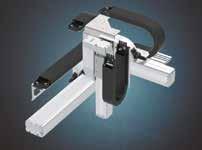
Systems offer an optimal balance of space-saving design, modular flexibility and cost-effective automation. Whether using high-precision servo models or budget-friendly stepper variants, these systems provide tailored solutions to meet a wide variety of industrial needs.
Treotham Automation treotham.com.au
Rotary encoders are used almost everywhere in automation.
They are commonly used to monitor speed or provide positioning feedback and can be used where there is a rotating shaft, such as on a motor or a conveyor idler.
With a wheel attachment they can be used in linear applications, such as monitoring the speed of a conveyor belt, and with a wire draw attachment they can provide pointto-point position feedback even when the target object moves on more than one axis.
Incremental encoders provide output pulses that can be timed to measure speed or counted to measure position.
If power is lost and the equipment moves during this time, an incremental encoder will not detect that movement, and the equipment will need to move to a known position to zero the encoder. Using the A and B outputs, incremental encoders can determine the direction of rotation.
Absolute encoders provide precise
positioning information on where they are in a full 360° rotation.
They are more expensive and more difficult to integrate than incremental encoders, but they always provide correct position information, even if there has been movement during a power outage.
Absolute encoders can also be absolute multiturn where they don’t just measure where they are in a single rotation, they also know how many rotations have been made, providing much more extended position determination capabilities.
Common outputs from absolute encoders are greyscale binary, SSI and a variety of fieldbus formats.
All standard mechanical encoders are either solid shaft, where the encoder shaft sticks out of the device and is usually coupled to a shaft on the equipment, or a hollow shaft where the encoder clamps directly around the machine shaft.
Either way, these encoders have seals to prevent ingress of particles or moisture and they also have bearings. As far as the physical
By Ken Collishaw, Product Manager, Turck
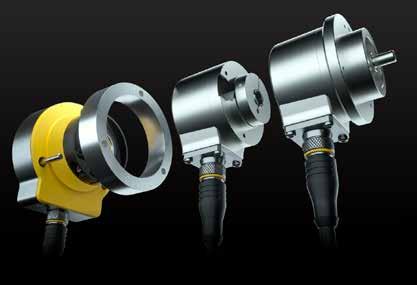
drive goes, standard encoders are mechanical devices with moving parts. They will wear out over time.
Non-contact encoders are exactly that. They work like standard encoders, but they don’t require a mechanical coupling between the rotating equipment and the encoder.
If we compare traditional encoders with non-contact encoders, particularly those that utilise inductive resonance technology, there are some major points of differentiation. Because non-contact encoders have no moving parts, they can Continues next page
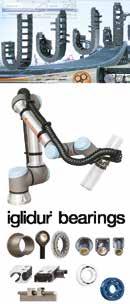

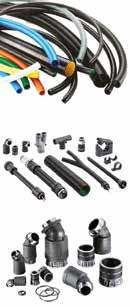
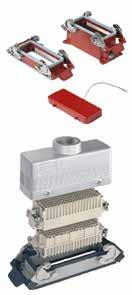


Continued from previous page
be fully potted. This has multiple advantages.
1. Non-contact encoders are robust and exceptionally well suited to high vibration applications. They will survive and be accurate where traditional encoders fail.
2. Non-contact encoders are rated to IP67/IP69K and are the ideal choice in severe wash down applications. Stainless steel housing variants are available.
3. Non-contact encoders can tolerate a level of misalignment, and this means slightly bent or off-centre shafts will not destroy the device.
4. Inductive resonance non-contact encoders are immune to interference from magnetic fields.
5. Non-contact encoders use industry standard M12 electrical connectors, rather than expensive specialist connectors.
6. Non-contact encoders can be user parameterised, meaning one spare will cover multiple different applications.
7. Non-contact encoders do not have mechanical ‘end of life’, so they will need replacing less frequently.
8. The positioning elements for non-contact encoders can be fitted with a variety of reduction
bushings for different sized shafts.
9. Non-contact encoders are reasonably priced, making it possible to standardise on a single type of device in both your challenging and your simple applications.
10. Non-contact encoders do not require maintenance. Any faults are highlighted by their LEDs, which are visible from a distance.
The best way to work out if non-contact rotary encoders are the solution for you is to ask one simple question: Are we regularly replacing encoders?
If the answer is yes, then ask why
(hint – the answer is probably covered in the list above).
Once you have that knowledge it is easy to determine if non-contact encoders are the solution you need. Even if the answer is no, it may still be worth using non-contact encoders, just to make sure the answer does not change in the future. Making your equipment more reliable saves time, cost and waste.
If you want to know more talk to an expert and find out how non-contact encoder technology can help you.
Turck Australia Pty Ltd turck.com.au
As the local wine sector grapples with the challenges posed by fluctuating market and environmental conditions, coupled with workforce shortages, the need for an innovative approach has never been greater.
“New technology could help solve these problems, enabling a more efficient, sustainable and resilient production without compromising on the quality or craftsmanship associated with traditional winemaking,” says Darryl Blackeby, Regional Sales Manager (SA/WS) of IFM Efector, a leading provider of specialist monitoring solutions, including sensors, controllers, software and other digital solutions for industry.
“While some of these automated solutions are perceived to be expensive or complex, we offer a range of products that are cost effective and easy to set up, making them ideal even for small to medium wineries.”
To help local winemakers better understand how digital solutions can optimise their operations and support top-quality wine production, IFM will be exhibiting at the upcoming 2025 Wine Tech Exhibition (taking place from 21 to 23 July at the Adelaide Convention Centre).
“Wine Tech is the ideal platform to connect with the industry and to showcase a range of easily implemented automation solutions,” said Blackeby.
“The products on show are proof that we listen and design products suited to the needs of local winemakers.”
One of IFM’s popular innovations for industry, the SM Foodmag
hygienic flow meter – specially developed for the food & beverage sector - will be on display at the upcoming Wine Tech Exhibition.
This sensor detects and transmits information (such as temperature) to the control system remotely, providing winemakers with a clear overview of process conditions and performance.
“IFM tools ensure that flow rates remain consistent and that the conditions for filtration, fermentation and mixing are optimised to control the quality and consistency of the wine,” says Blackeby.
“With the SM Foodmag, there’s no need for time - and labour-intensive - manual monitoring.”
Interestingly, the SM Foodmag device can display up to 20 events at any one time, while up to 200 events can be stored, viewed and downloaded.
“Having access to this data for analysis is valuable, as trending data helps winemakers work towards better process performance and, ultimately, better product quality,” explained Blackeby.
The SM Foodmag is easy to install, programme and use, with an intuitive app-based menu structure.
Its customisable configuration also makes it easy to integrate into existing plant systems. It also features a fully welded, stainless-steel housing with temperature resistance up to 150 °C.
“This is a robust, reliable longterm monitoring solution,” said Blackeby.
“In addition, it’s ideal for confined spaces due to its compact nature and can work reliably even in wet environments.”
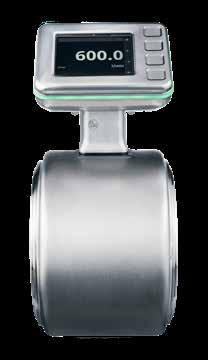
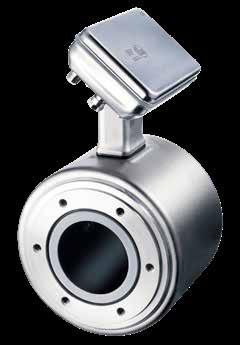
IFM will also be showcasing its temperature monitoring solutions at the Wine Tech Exhibition, including temperature sensors that can be monitored remotely or via a screen.
“Being able to control the temperature means having greater control of the biological processes involved in fermentation and processing,” said Blackeby.
“This is a critical and helpful tool in ensuring the wine quality meets brand requirements.”
“With market conditions as they are, coupled with the agricultural workforce shortage and more extreme environmental factors affecting grape yields, winemakers have to become more efficient in order to survive.
“Having smart monitoring capabilities is key to the improved efficiency, driving a more productive and profitable business operation and ensuring the best quality of wine.”
“With a five-year warranty on all of our products, which have been purposefully designed to optimise the winemaking process, IFM is a trusted partner for the wine industry.
“We look forward to being part of the future of the wine industry and engaging with Australian winemakers at the Wine Tech Exhibition.”
IFM - ifm.com

One of the leading lights of the Industry 4.0. wave, Professor Henrik von Scheel, has been announced as the headline speaker at the inaugural Industrial Transformation Australia conference.
The new trade show is organised by Hannover Messe and will be held alongside their showpiece event, CeMAT Australia, at Sydney Olympic Park over the week of 22–24 July.
Professor von Scheel is a world-leading futurist and is known as the father of Industry 4.0, a
term that he coined to refer to the Fourth Industrial Revolution, which involves the adoption of AI and digital technologies in manufacturing.
He will journey from Switzerland to Australia for the show to deliver a speech that is set to cover the paradigm shift of the Industry 4.0 evolutionary stages and the key megatrends that will influence advanced manufacturing in Australia.
“We are in one of the most disruptive periods in human history, which provides great opportunities to innovate and change the way we live
for the better,” he said.
“Australia is at a pivotal moment with the big question hanging over its head: Is Australia ready to lead in the Fourth Industrial Revolution or will it be left behind? I’m looking forward to exploring this question in July and connecting with the local industry.”
von Scheel will also be present on day two of the event, where he will speak at the Processing & Packaging Pavilion, which will showcase leading manufacturers, distributors and importers of packing and processing machinery who are at the forefront of the food, beverage, pharma, e-commerce, chemicals and other manufacturing sectors.
“Professor von Scheel will both challenge and inspire our local sectors providing a detailed understanding of what lies ahead and the key influences that will shape the future,” said Mike Nissen, Commercial Director, Hannover Fairs Australia.
“Having Industrial

Transformation and CeMAT Australia co-located provides the opportunity for the full supply chain including manufacturing, warehousing, intralogistics and transport to gather in one place.
“We expect to have the entire industry in attendance as there will be so much to learn and engage with.
“Both Industrial Transformation Australia and CeMAT Australia will cover key challenges and provide real solutions to support the growth and prosperity of vital industries that contribute greatly to the Australian economy.”
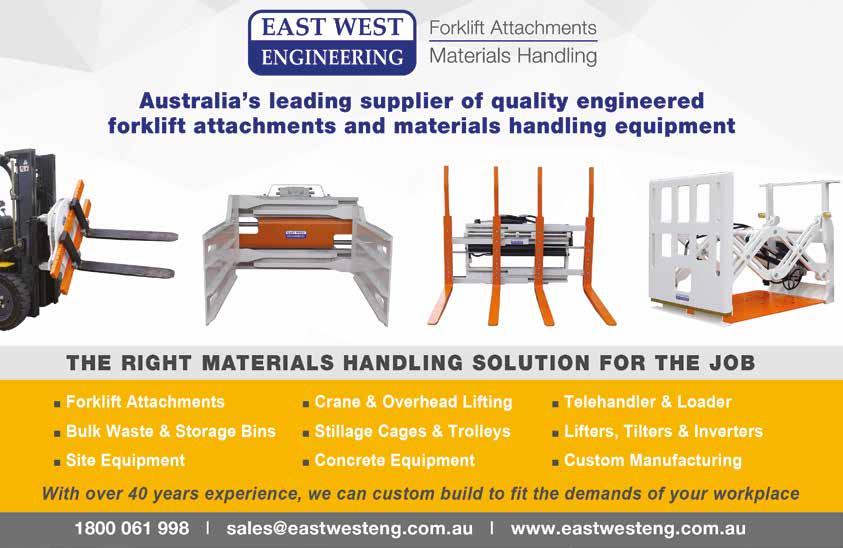
Continued from front cover
Processing & Packaging Pavilion powered by APPMA, delivering cutting-edge packaging innovation from Australia’s leading manufacturers and suppliers.
More than 250 exhibitors are confirmed to showcase the latest in robotics, automation, materials handling and end-to-end logistics, creating an unrivalled platform for business connections, solution sourcing and future-proofing operations.
The event will also see the return of crowd-favourite Australian Forklift Championships, celebrating operational skill and safety on the show floor, alongside a high-impact speaker series featuring industry trailblazers and supply chain leaders from across the Asia-Pacific.
“CeMAT Australia has always been the home for intralogistics and materials handling, but in 2025 we’re delivering so much more,” said Mike Nissen, Commercial Director, Hannover Fairs Australia.
“With the launch of Industrial

Transformation Australia and the APPMA Pavilion, we’re bringing together the full ecosystem from warehousing and robotics through to advanced manufacturing and
packaging.
“It’s a one-stop showcase of what’s next for the industry. We’re proud to provide a platform that not only supports innovation, but also creates
real business opportunities for suppliers, integrators and end-users across the region.”
CeMAT is the home of materials handling, making it the ideal place to showcase new lines and increased product ranges.
East West Engineering, who have more than 40 years of experience in the materials handling space, are well known for their forklift attachments and materials handling equipment.
They will be in attendance at CeMAT Australia 2025, which will be held at Sydney Olympic Park from 22-24 July, using this year’s show to display their hydraulic attachments to the rest of the manufacturing sector.
“CeMAT will be the first time we’re formally showcasing the hydraulics range and our capabilities in that space,” said Craig Gilmour, General Manager at East West Engineering.
“We’ll use the event to demonstrate to customers exactly what we can do and how comprehensive the range is.
While this is the first time that East West Engineering have exhibited at CeMAT, they have a long history in hydraulic attachments.
With a history for tackling complex and large-scale materials handling challenges, East West has earned their reputation as an industry leader in this area.
“We’ve been servicing our customers with hydraulic equipment for well over a decade, often through custom engineered handling solutions,” said Gilmour.
“Backed by a team of skilled engineers, hydraulic specialists, fabricators and fitters, we’ve developed custom hydraulic clamps, drum rotators and bin tippers to suit varying loads, sizes and handling requirements.
“We’ve even designed a unit that clamps and rotates 4m long box culvert concrete reinforcement cages and a telehandler mesh lifting frame that inclines and rotates, allowing placement of mesh in tunnelling projects.
“We’re now focused on expanding our range to better meet the diverse material handling requirements of our customers.
“This includes a wide range of clamps designed for handling white goods, cartons, bales, drums and tyres.
“In factory settings, minimising damage during handling is crucial and the right attachment can significantly improve both efficiency and safety.”
“There are numerous options for handling pallets, ranging from basic logistic solutions like telescopic forks, side shifts, fork positioners or multi pallet handlers, to specialised

East West Engineering will be at CeMAT 2025 in Sydney
attachments for inverting, pushing or pulling.
“With so many unique handling requirements, having the right equipment for the job is essential, and we are dedicated to delivering
tailored solutions to meet these needs effectively.”
East West Engineering eastwesteng.com.au
Explore the latest advancements driving manufacturing, supply chain, logistics, process and packaging at the only Hannover Messe event in Australia. Whether you’re under pressure to increase efficiency, combat labour shortages, reduce downtime, or boost sustainability, the answers are here.
From intelligent automation and smart warehousing to high-speed packaging and streamlined transport solutions, discover technologies solving today’s biggest industrial challenges. Experience innovation in action, connect with the people who are shaping what’s next, and walk away with real strategies to future-proof your operations.



Wood is a natural and renewable raw material, which means it rarely arrives in pristine condition.
This is why the Finnish company Raute, a global market leader in veneer, plywood and LVL (laminated veneer lumber) production technology, also offers repair systems that automatically detect and repair defects.
A combination of AL8000 linear motors and AX5000 Servo Drives from Beckhoff ensure the necessary high precision and dynamics.
Raute, headquartered in Nastola, Finland, has built up a comprehensive stock of expertise in all sub-processes of veneer, plywood, solid wood panels and LVL processing since the company was founded in 1908.
Its technology spectrum ranges from log handling, turning and drying to veneer handling, stacking and pressing of veneers, panel handling, sorting and repair.
“Today, more than half of the LVL produced worldwide is manufactured on Raute machines,” said Erkki Kauranen, Business Line Manager for Veneer Repair, Panel Repair and Panel Processing.
The Panel Repair Station R5 is Raute’s latest innovation.
Automated with PC-based control, the system eliminates the need to manually repair solid wood panels and requires only one operator to monitor the process.
This allows companies to deploy their qualified personnel elsewhere in production and, at the same time, increase the quality and efficiency of repairs.
When dealing with an average of seven defects per side, the system can repair up to 250 panel surfaces per hour. Designed for processing solid wood panels, the system can also repair panels made from all other types of wood.
All process steps are automated with PC-based control.
“We chose the AL8000 linear motors and AX5000 Servo Drive from Beckhoff because of their high precision and dynamics,” said Kauranen.
The system is controlled via TwinCAT and a C6030 ultra-compact Industrial PC. The customer-specific control panel communicates with the Beckhoff Industrial PC via CP-Link 4.
Raute use AM8000 synchronous servomotors with planetary
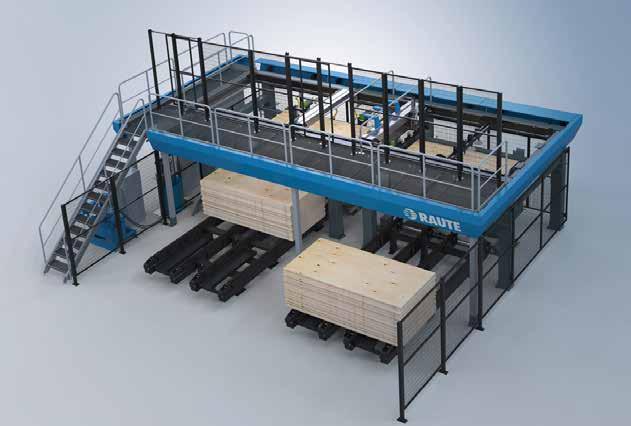
gearboxes for the rotary movements. Due to the considerable system size of 8 x 10 m, the sensor signals are collected in a decentralised manner using EtherCAT EP box modules with an IP67 protection rating. TwinSAFE components are used for the safety technology.
In addition to the highly dynamic and fully automatic processes, detecting and eliminating defects are essential to keeping the systems productive – that is, maintaining the rate at which high-quality wood panels are produced.
Raute have therefore combined the technologies for identifying and categorising defects in veneers and plywood panels in its own dedicated systems known as analysers, which are based on image processing and AI.
Raute have taught the technology to recognise the patterns and shapes of around a thousand knotholes categorised as “healthy”.
“We detect and document around 100 features in a knothole, such as its shape and colour changes,” said Kauranen.
This means that powerful hardware is required to record the grain and detect the defects in order to keep the repair system performing well.
“That’s why we carry out camera- and AI-based detection and
evaluation of the defects on another Beckhoff control cabinet Industrial PC – a C6650,” added Janne Suhonen, Key Account Manager at Beckhoff Finland.
As a rule, between five and twenty defects are detected per panel. Smaller defects may remain untreated, depending on the desired quality level, the product in question and the intended use.
This advanced analysis of the wood panels allows the company to use exactly the right amount of repair materials.
“We’ve managed to halve our consumption and reduce waste to a minimum,” said Kauranen. Proof of this is provided by a comprehensive reporting system, which is an important part of the repair systems.
The repair station requires the automation technology to deliver excellent performance. The coordinates of each defect must be associated with the relevant wood panel and transferred to the control system.
The AL8000 linear drives are responsible for the dynamic and precise positioning of the tools. To keep system throughput high, several tools process one veneer simultaneously. However, there is also integrated collision detection to prevent damage to the tools.
“The complete solution from Beckhoff, consisting of an engineering environment, control, safety, high-performance motion control and highly dynamic linear drives, has brought us clear advantages in the field – especially during commissioning,” said Kauranen.
PC-based control has also solved the interface problems that repeatedly arose in the past.
The company began working with Beckhoff about ten years ago, when it acquired its first drives for lathes and a few I/O terminals, which it used for tasks such as acquiring signals from SSI encoders.
It gradually began using motion controllers and industrial PCs more and more.
Today, Raute use Beckhoff’s complete automation portfolio –motors (rotary and linear), drives and control elements – for its repair systems.
The outdated control system for the lathe is currently being replaced by a powerful control system from Beckhoff.
The Panel Repair Station R5 has been in operation for some time now and represents a standard-bearer for technology at Raute, providing a basis for future developments.
Beckhoff Automation beckhoff.com
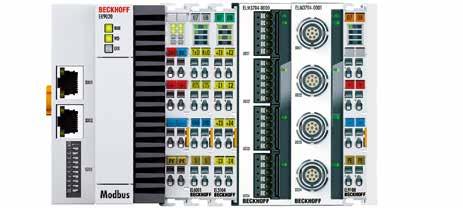
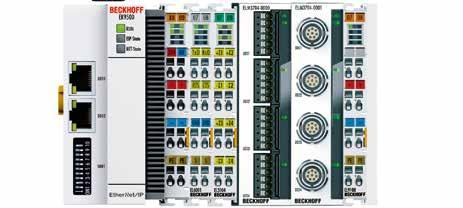



Intralogistics leader Swisslog will be displaying its end-to-end warehouse automation solutions as it exhibits at Stand A9 at this year’s CeMAT, held in Sydney from 22-24 July.
This year, Swisslog will focus on its multi-temperature warehouse automation solutions, including ambient, chilled and cold storage.
With 250 deep freeze projects worldwide, Swisslog has a pedigree in cold storage solutions that are compliant, energy-efficient and protect workers from harsh environments.
Additionally, Swisslog will be displaying its pallet Automated Storage and Retrieval System (ASRS) technology, AutoStore grid-based ASRS and proprietary SynQ software, with live demonstrations.
“Low temperatures make refrigerated warehouses harsh environments, where it is recommended that humans should spend minimal time to avoid hypothermia and other health and safety risks,” said Swisslog Managing Director, Australia and New Zealand, Dan Ulmamei.
“Using automation to do tasks in freezer areas removes workers from these harsh environments, freeing them up to work in other, more suitable areas.
“Additionally, an automated highbay chilled warehouse can reduce the energy load by as much as 20% compared with conventional more labour-intensive alternatives.
“Not only does it reduce the power bill, but it typically allows for four times more storage within the same building footprint, so you are maximising your use of the available space.”
Swisslog will also be showcasing solutions including its PowerStore pallet shuttle system, AutoStore grid-based automated storage and retrieval system (ASRS), proprietary SynQ software, as well as a range of other pallet and light goods technologies.
“Swisslog has the global experience, local knowledge and comprehensive warehouse automation ranges to tailor end-to-end solutions to meet the diverse needs of industries looking to utilise automation to boost efficiency and productivity,” said Ulmamei.
“Rather than a piecemeal approach involving multiple
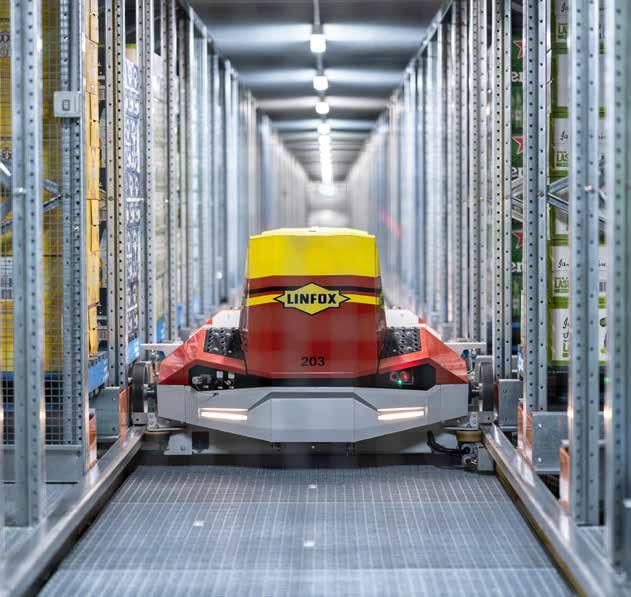
suppliers, Swisslog can be a comprehensive warehouse automation partner that takes a holistic approach to receiving, storing, retrieving and preparing goods for delivery.”
Technologies on display at CeMAT this year include:
• PowerStore pallet shuttle system for high density warehouses, designed to maximise space utilisation and throughput. The modularity of the PowerStore pallet shuttle system enables storage of up to 60% more pallets compared to manual systems. It can also be individually tailored for all shapes and sizes of warehouse buildings.
• AutoStore grid-based ASRS, for which Swisslog is one of the top integrators globally. AutoStore is a unique and simple solution that uses robots and bins to quickly process orders. It provides better use of available space than any
other automated system thanks to its unique design that enables direct stacking of bins on top of each other and storage of multiple SKUs in a single bin. Over time, the system naturally learns which products have a higher rotation, storing them on the top layer to ensure faster picking times.
• SynQ software, Swisslog’s proprietary warehouse automation software which can perform the role of a Warehouse Management System (WMS), Warehouse Execution System (WES) and Warehouse Control System (WCS). SynQ provides total visualisation of the system in real-time and allows for efficient and accurate troubleshooting, as well as optimising performance over time. It can, for example, position faster-moving products nearer the front of the storage system, for quicker access.
Live demonstrations of SynQ software will be performed during CeMAT.
“We encourage logistics industry professionals at CeMAT to visit Swisslog at Stand A9 for live demonstrations that show how intelligent, end-to-end automation solutions can unlock greater warehouse efficiency, productivity and sustainability,” said Ulmamei.
CeMAT provides visitors with a chance to see the future of intralogistics automation first-hand, but for those that are unable to attend, Swisslog has a number of advanced automated warehouses operating across Australia and New Zealand and can organise tours of these facilities.
Swisslog - swisslog.com
Getting a prime spot at a big trade show like CeMAT can take a business to the next level - which is perfect for Dexion Liverpool.
They specialise in manufacturing mezzanine floors for warehouses, and will actually install their own at the show - which will be held at Sydney Olympic Park from 22-24 July 2025 - as well as showcasing the latest Dexion products.
Dexion Liverpool are part of the wider Dexion Australia group, who are sponsoring the famous CeMAT Forklift Championships, always one
of the most popular events at the show.
“It’s an important event, and to enhance that even more, our company - as well as Dexion Australia and other Dexion centres - sponsor one of the cars in the Porsche Carrera Cup series,” said Graham Urquhart, Managing Director at Dexion Liverpool.
“That car will be on display at CeMAT this year, and our driver, Dylan O’Keeffe, will also be at the Forklift Championships. Dylan has a forklift licence, so he’s going to set the pace for the other contestants.


“We’ll have a small mezzanine floor installed on our stand (L20). We’ll invite people up onto the floor so they can watch the Forklift Championships.”
The Ingelburn-based storage experts have secured a prime spot at CeMAT, where they will showcase the best in mezzanines to the materials handling and intralogistics industry, as well as their latest developments in automation.
“Warehouse automation is making progress in the Australian logistics market with picking systems,

sorting systems, conveyor systems, automated guided vehicles (AGVs) and autonomous mobile robots (AMRs) that can greatly improve efficiency of warehouse operations,” said Urquhart.
Dexion Liverpool are a partner of Opex Corporation, who will be on hand to demonstrate their warehouse automation machines and other capabilities as well as a display of the latest vision picking systems.
Dexion Liverpool dexionliverpool.com

Picture this: you’re halfway through building a 70-storey tower.
Fire rated systems are installed on every floor - walls, ceilings, bulkheads, the lot. You’re ready to hand this stage of construction over and celebrate a job well done.
Then the call comes in. The certifier has noticed a missing angle. It’s not in the installation. It’s clearly shown in the certified detail you were meant to build, but your team didn’t install it. It’s a small oversight, but one that will take several days to fix.
And worse, it’s been repeated on every single floor installed so far. Now you’re the one who has to explain it to your boss...and to the client.
It’s the kind of costly, time-consuming scenario that no installer or builder wants to face.
It’s also one that Speedpanel, an Australian manufacturer of lightweight, fire rated and acoustic systems, is aiming to help clients avoid.
Manufacturer-driven installation reviews are critical to help ensure compliance and quality.
Speedpanel has long made them a core part of their service. With new technology available, the company saw an opportunity to evolve the process. The goal was to save time, improve consistency and help customers reduce rectification costs.
Previously, Speedpanel’s on-site inspections often took over an hour to complete, with formal reports documented and sent to the client several days later.
While the system functioned and

allowed Speedpanel to provide valuable feedback to subcontractors and builders, it relied heavily on manual processes and disconnected data.
This made it more difficult to identify patterns and drive continuous improvement.
To change that, Speedpanel partnered with software firm Ambit to develop a smarter, digital-first installation review system.
Fully integrated with SugarCRM, it centralises project and compliance data, automates reporting and gives teams real-time access to critical insights while on site.

“The system also enables deeper insights into recurring issues, both at a market level and for specific installers,” explained Peter Lorenc, Speedpanel’s National Sales and Marketing Manager.
“This gives us the ability to deliver targeted training, develop content to better educate the market and proactively reduce non-conformities, ultimately saving clients’ money as well as improving building safety.”
Today, installation reviews take around 30 minutes - half the time they used to. Reports are available instantly, whereas clients once waited one to two days while reviewers manually uploaded photos and compiled reports.
By removing these manual steps, time is saved across the board. But the impact goes beyond efficiency.
With a pre-configured library of common non-compliances and a streamlined reporting process, every installer receives clear, consistent feedback. That consistency builds trust, improves compliance and reduces costly rework.
The system’s centralised data has enabled a more proactive approach to safety and quality.
For example, if 50% of installers
are making the same mistake, Speedpanel can now identify the trend early and take action.
“By addressing knowledge gaps early and improving installer performance, we can help avoid rectification work altogether,” said Lorenc.
“That saves time and money across the build process and strengthens market confidence in Speedpanel.”
For the wider industry, where rectification costs can run into the millions, even small improvements can have significant impacts.
Speedpanel’s new system is more than a compliance tool. It is a practical example of how digital transformation can make construction safer, faster and more efficient.
Looking ahead, Speedpanel plans to build on this foundation. By using insights from the system, the company aims to refine installer training, improve overall compliance and share learnings with the broader industry.
The goal is a future where walls go up right the first time, fewer mistakes slip through the cracks and safety is embedded into every layer of the build.
Have you been thinking about automating your warehouse or distribution facility?
Maybe you’re worried that it’s out of your price range or area of expertise, so you’ve put it in the ‘when we’re bigger’ basket. If so, the team at Adept Conveyors can step in.
They have years of experience in automating all sizes of materials handling operations with conveyor systems, and are always happy to talk through requirements and advise on the best way to implement them, no matter what the size of your operation is.
With decades of experience under their belt, they’ve made it their business to thoroughly understand how conveyors and automation can be implemented in any materials handling operation.
The best way to get in touch is at the CeMAT trade show in Sydney on 22-24 July, where Adept will be exhibiting.
They are located at Stand D12,
where there is room for a fully functional display conveyor system.
Adept will bring a demo conveyor that showcases the 24V MDR (Motor Driven Roller) system, configured for zero pressure accumulation.
This system is a modern, flexible solution for conveying a variety of objects, including totes, boxes and cartons.
MDR systems provide significant advantages over traditional external drive or line shaft systems, including:
• Low maintenance time and costs due to reduced mechanical complexity
• Modular and scalable for use in a variety of situations
• Naturally allow for zero pressure accumulation
With zero pressure accumulation, individual rollers start and stop automatically, allowing items to accumulate along the line without making contact. This results in safer and gentler handling of products.

These systems are also a much more efficient solution to traditional accumulation. This is because motors only turn when needed, resulting in minimal power usage, quieter operation and reduced mechanical fatigue.
Adept Conveyors adeptconveyor.com.au
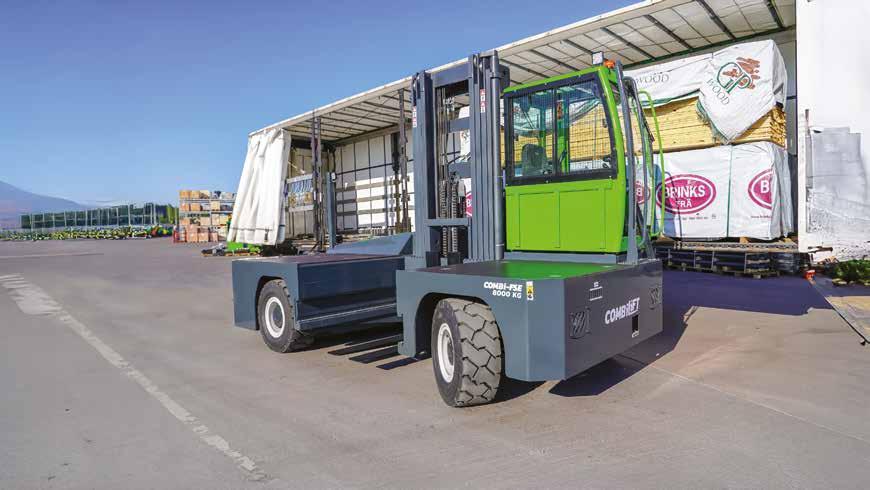
ENHANCE THE SAFETY, STORAGE & EFFICIENCY OF YOUR LOGISTICS WITH COMBILIFT
Combilift’s range of multidirectional forklifts, pedestrian reach trucks, straddle carriers and container loaders will allow you to maximize the capacity, improve efficiency and enhance the safety of your facility. Contact Us Today
To find out how Combilift can help you unlock every inch of your storage space.
International forklift experts
Combilift have announced two new products in a major launch event at the Ligna 2025 trade show in Germany, the world-leading show for the timber industry.
They debuted the Combi-FSE 8000, a heavy-duty electric sideloader for long loads, and the Combi Load Xtender, a new pantograph-style load extender.
The Combi-FSE 8000 is similar to previous FSE models but is larger, ideal for handling structural timber, packs of sawn wood, panels or engineered wood products in confined indoor or outdoor environments.
The Combi Load Xtender allows for complete loading and unloading of trailers or rail wagons from a single side, ideal for timber yards with limited space or where trailer access is limited.
“These new solutions were developed in direct response to what we’re hearing from the timber sector,” said Martin McVicar, CEO, Combilift.
“Customers need to move larger
loads in tighter spaces with greater safety and lower emissions. The FSE 8000 and Combi Load Xtender do just that - and they’re backed by Combilift’s proven track record in long-load innovation.”
The Combi-FSE 8000 also includes the Combi-Connect, Combilift’s advanced telematics system, a cloud-based platform for real-time performance monitoring and analytics that can give insights into productivity, reduce downtime and support proactive maintenance. It features two 18kW drive motors - more than previous models - and independent traction control. The battery is placed to the rear under the deck, which improves balance, and the load platform is designed to cope with long and heavy loads in tight conditions.
The Combi Load Xtender has patents pending in both Europe and America.


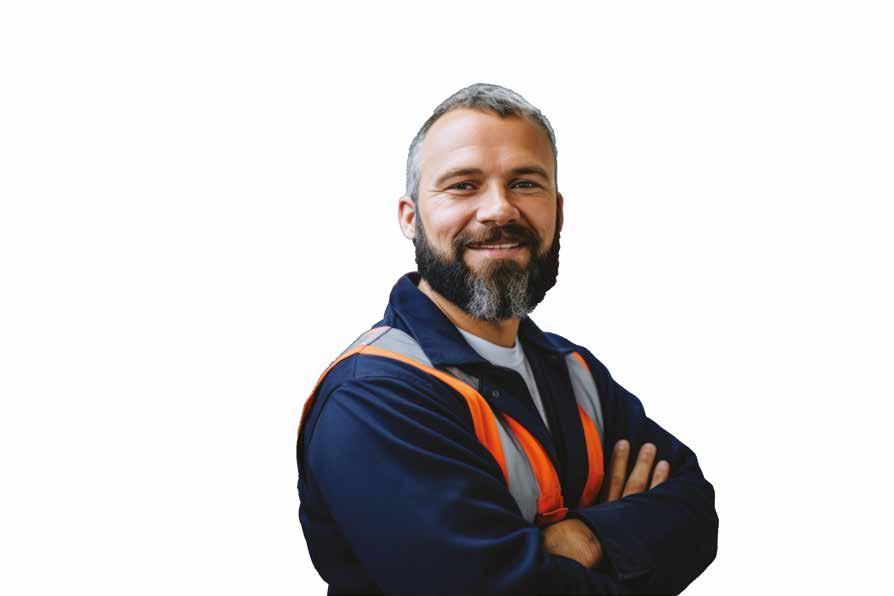



Why now is the right time to invest in Australian manufacturing - from a company that has done it
Making smart decisions about investment is vital to building a successful business in Australian manufacturing.
The start of the year has seen plenty in the industry decide to grasp the nettle on investment, with new machinery orders picking up after years in the doldrums following the pandemic.
Part of that was inspired by a friendly rate environment, which has lowered the cost of borrowing for businesses, but it was not the only factor.
Many within the manufacturing sector have suggested that they might have invested anyway, with the prevailing opinion holding that, after years of uncertainty, they could not wait forever for the perfect conditions. 2025 was the time to grasp the nettle, make the call and get going.
One such business is Bomac, who produce a range of industrial products such as jib cranes, gantry cranes, monorails and other rail systems from their base in Hallam, Victoria.
Their flagship Altrac brand is well known across Australian manufacturing and, after tipping over 40 years of business last year, they have invested heavily in new machinery to improve their product offering.
Industry Update spoke to Tate McFarlane, engineering director of Bomac Engineering, about the decision to buy new machines at the business.
“Two or three years ago, we looked at the business model, and having experienced the issues of COVID, we decided it was time to

put our factory through a modernisation programme,” he said.
“We wanted to make our factory emulate modern manufacturing which is clean, clever and critical, not the dirty, dumb and dangerous environment that some people perceive it to be.
“Along with the lack of skilled people, we also wanted to reduce

lead times: not only for our customers, but for research and design purposes.
“We wanted greater flexibility to offer our customers better service in terms of being able to customise their requirements in-house.
“Starting that journey, we reviewed all of our processes and identified the machines we required.
“Our initial purchases were a DN Solutions CNC lathe, and a Panasonic Robot Welder.
“That was successful, and about two years later, we invested in a laser cutting machine and an 80-tonne hydraulic press.
“These brought even more operations in-house that we previously outsourced. It has allowed us to reduce lead times in terms of R&D as well as getting parts to customers in a timely fashion.”
The machines went a long way to solving the kind of staffing issues that many in Australian manufacturing will recognise.
“We don’t have people standing in front of machines,” said McFarlane.
“We usually get the machines to a point where they can run a batch or a cycle, which frees up the operator
to do something else. We get greater output without having to put in as many man-hours.
“A lot of the machine choices were based on setting them up to run while allowing our guys to carry out other operations within the workshop.
“We can use our people’s skills for the jobs they’re trained for, rather than having them do tasks that don’t require a high level of talent or training.
“That work can be done by the machines, then they can come in at the end and do more of the value-adding work.”
Making that investment in tech was a big leap, but it came with a desire for a wider update of the business and its efficiencies.
With the new mindset and machinery came new possibilities for Bomac.
“One of the first things we did was review all our processes and make investments that either added to our capabilities or reduced the time spent producing a product,” said McFarlane.

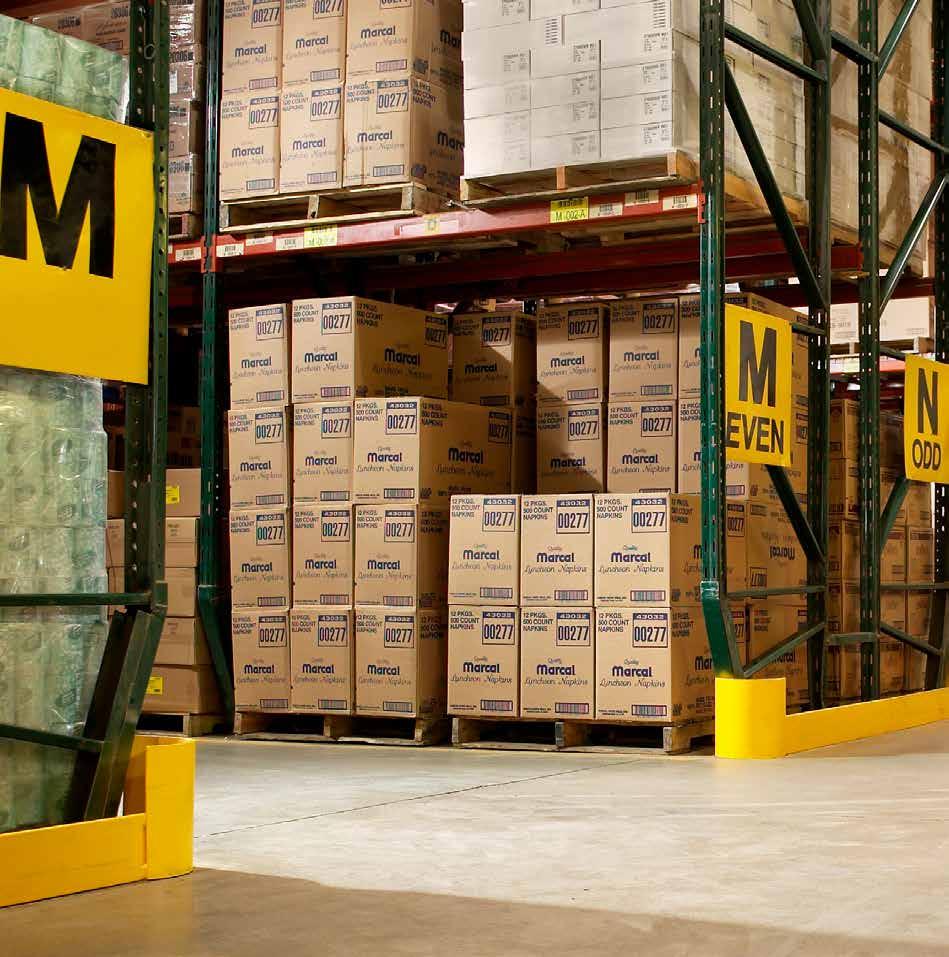
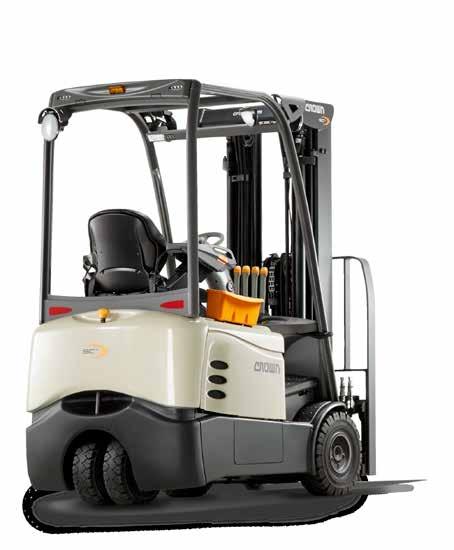
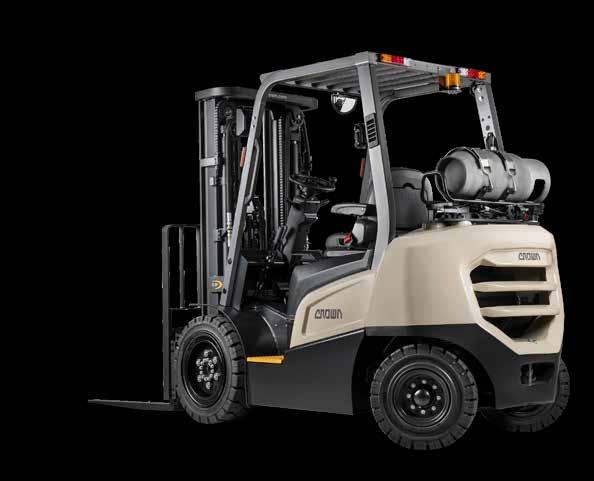

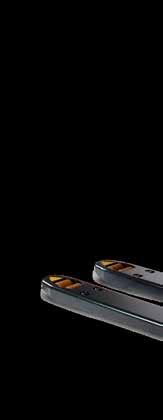



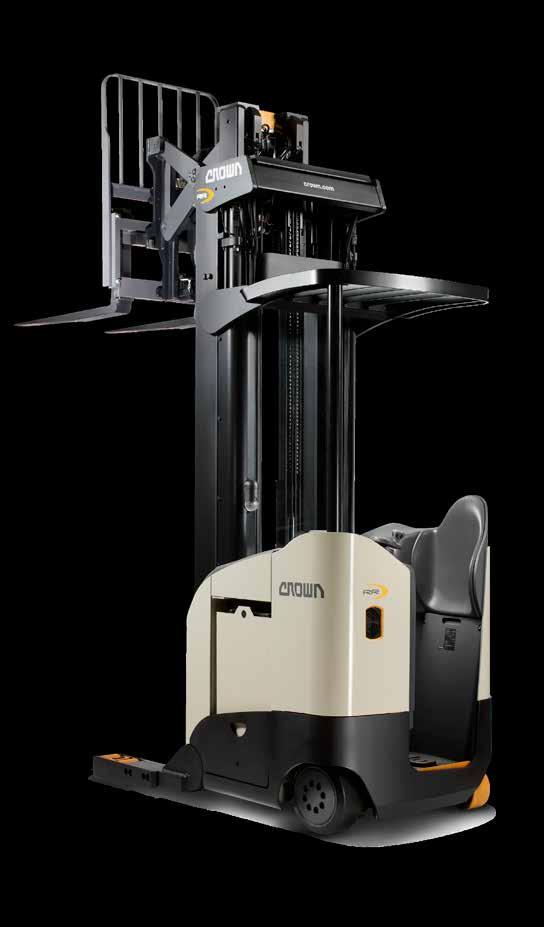
Request forklift ser vice, discuss your rental needs or contact your dealer — all from the convenienc of your smartphone or tablet. The Crown Ser vice Request app provides quick access to Crown service to help you maximise uptime!
Let us fix it right the first time! Submit a ser vice request and you will be connected to ser vice exper ts with industr y-leading response times.
Have a suppor t question? Submit your inquir y by tapping the 'Contact Us' button A Crown representative will review your inquir y and contact you shor tly
Need to find your nearest Crown dealer? The 'My Dealer' section of fers easy access to location and contact information for a dealer in your area.
Need to rent a lift truck now? Tap the 'Rent Now' button and connect directly to a Crown representative to discuss your needs




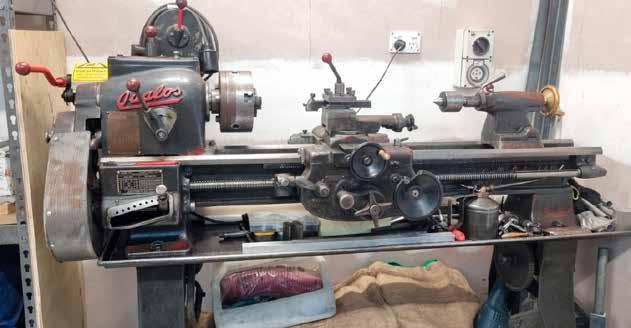
utilising our cultural connections with America and our geographic connections within the APAC region to good effect.
That is where companies like Sino-Aust Manufacturing Services can be helpful to Australian manufacturers.
They provide bespoke services that enable businesses to access the Chinese market, offering local expertise that can assist those looking to work in the world’s biggest manufacturing market.
“A lot of companies are rethinking things,” explained Greg Doupé of Sino-Aust on the impact of tariffs.
“They were doing business with
the US out of loyalty, but now they’re asking why, when that loyalty hasn’t been reciprocated.
“China is the manufacturing centre of the world. People still think manufacturing in China is backward, but that’s just not true.
“China’s sophistication in manufacturing is up there with the best in the world. In some basic areas, it’s less competitive now - places like Vietnam might be cheaper - but you get what you pay for.
“If you go cheap, you get quality problems. But if you specify clearly and work with the right people, China can deliver great quality at a fair price.”
Often the complaint about
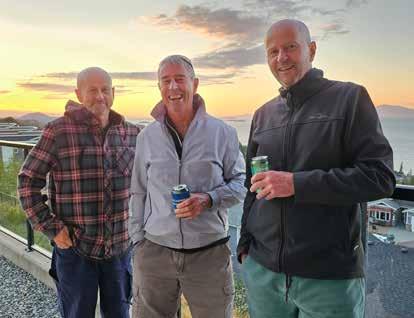
interested in our patents. That’s where they saw the value - not the machinery or operations.
“So if your product has sophistication, the basic parts can be made anywhere. Sometimes it just isn’t feasible to make them here.
“You make them in China, bring them in, and the product you sell in Australia still has a high degree of sophistication, even if not every part is made locally.
“We’ve seen how difficult it can be to manufacture in Australia. In one of my companies that I sold a couple of years ago, I faced challenges getting something done at a reasonable price here, due to the steps involved in the product. So I looked at China.
“When I went there, I found a lot of manufacturing capacity, but the English wasn’t always clear, and it was hard to know if your message was getting through.
Chinese-manufactured parts was the lack of customer service available, with products often sold with little recourse for aftercare.
Sino-Aust exist to bridge that gap, helping Australian companies to access the Chinese market and providing vital support to smooth issues when they arise.
“We introduce clients directly to our partners in China. We don’t insist everything go through us. That kind of layered communication doesn’t help anyone,” said Doupé.
“Once we’ve established the relationship, they can deal directly with our people in China. We’re there to help if problems arise, but we don’t add unnecessary layers - that can make it harder, not easier.”
That kind of support can help Australian manufacturing to focus on the most value-adding parts of industry for advanced economies such as ours: research and development and design at one end, then distribution, marketing and aftercare at the other.
“A friend of mine is big on promoting Australian manufacturing. He uses the Smiling Curve graph - it looks like a big smile - to show where the real value is in manufacturing,” said Doupé.
“The value is in design, patents and customer relationships, at the front and back ends. The actual manufacturing is the easy part once everything else is in place.
“I had a business myself, and when I sold it, the US buyer was only
“I found a company that was US-owned but employed Chinese nationals with strong English skills and broad manufacturing knowledge. They had been helping US companies for years.
“I started using them to manufacture for my Australian company - across steel, plastic, timber and other materials - and it worked very well for a number of years.
“I realised that the experience I had was common. Many Australian businesses want to manufacture in China, but all they hear are the horror stories.
“The biggest issue is finding the right working partner in China and being able to properly specify the product. We started working with the same partners I’d used successfully, and began introducing other Australian companies to them.
“We’re not anti-Australian manufacturing. We’re offering a service for businesses where it’s either not feasible to manufacture locally, or they want to grow but can’t justify the capital investment in new equipment and facilities. In some cases, they can’t even find the skilled workers to run the machines.
“We help them grow by providing another route to manufacture. If they want to bring it back in-house later, that’s fine. But this allows them to scale without massive outlay.”
Sino-Aust Manufacturing Services - sino-austms.com.au
“An unexpected gain was that by bringing in these machines, we also revised how we produced things. It gave us a new perspective and meant we could offer our customers greater customisation without being too concerned about minimum fees for one-off products.
“For example, with laser-cut or one-off fabricated parts, we used to get hit with minimum charges by jobbing shops. We’d have to on-pass those charges on to customers, which made custom work less viable.
“There are a lot of horses-forcourses applications. You want to be able to provide good customer service in a timely manner, where possible. Having these machines gave us that flexibility and strength to utilise the extra capabilities we didn’t have before.
“That time aspect is vital for us and the customer. We’re able to adapt quickly to customer requests, which improves our reputation, and we’ve now got the capability to actually do what the customer wants.”
The practical results are already there to be seen.
“Once we got the machines, we
could identify not just what they could already do, but also how we designed and made things,” reiterated McFarlane.
“For example, welding brackets together used to be time-consuming, and sometimes we’d laser cut and fold parts as a compromise workaround.
“Now, with a robot welder, we can make multiple parts or bracket, weld together and doesn’t have a huge impact on our worker’s time. They’re able to dedicate their hours to one-off or complex jobs instead.”
“We found it frustrating trying to develop new products and meet customer demands. We were losing time, we’d gone through the rigmarole of trying to get people to address the additional work, and that wasn’t turning out to be fruitful for us, so we had to look at alternative avenues.
“The cost of these machines has come down over the years, the technology has improved, and the machines are easier to operate.
“The return on investment is better than ever. So it just made sense to move forward and make it work ourselves.”
Bomac
Altrac - bomac.com.au

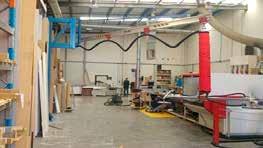
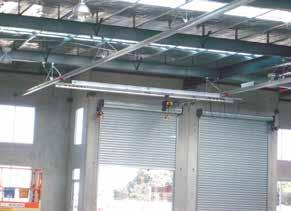


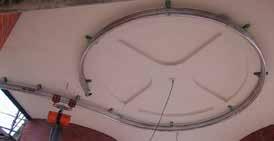

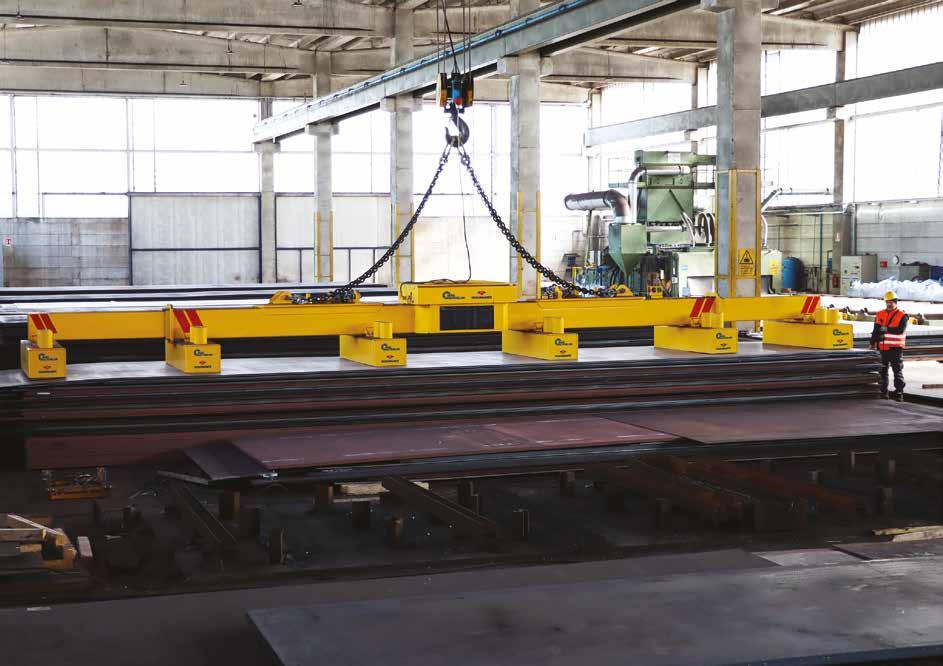

Using economic, energy-efficient Permanent-Electro Magnet Systems from from Mag-Autoblok Tecnomagnete and Serpent & Dove.
Modular, Engineered Systems for Plate, Tube, Bundles, Coils, Billets, Blocks and most steel lifting.

Lifting heavy things in the workplace is hard - even if you have the best equipment possible.
Manufacturers will invest thousands in overhead cranes, and the smartest know that keeping those big assets working safely and profitably is vital.
That’s where companies like Liftco come in. They offer vital components for cranes, such as the Side Pull Preventer, which can go a long way to extending the life of an overhead crane as well as ensuring safety for workers.
“Overhead cranes are designed to lift vertically, however, some people pull sideways on the hook,” explained Merilyn Glenn of Liftco.
“If they take something out of a shelf, for instance, sometimes they
drag it out with the crane and then try and lift it up.
“What that does is put pressure on the rope side. Our Side Pull Preventer, as the name implies, prevents that from happening. It keeps the crane lifting vertically.
“It protects the rope guide, which is important because they are quite expensive. A side pull preventer will cut out the crane when it detects it pulling abnormally.
“The rope guides keep the rope going into the slots on the rope drum - it guides them into the slots.
“If it is pulled sideways, it can jump out and break the rope guide, and if that happens, you’re up for $4-5,000 for a replacement.
“A side pull preventer ensures the ropes stay vertical, which is
why they’re also called rope guide protectors, as both names explain what it does.”
One of Liftco’s other key products is a Load Limiter, which similarly can work to save money and time for manufacturers using lifting cranes.
“That prevents the crane from picking up a weight that it is not designed to lift,” said Glenn.
“If the crane is designed for five tonnes, a Load Limiter will stop it from picking up more than that. We normally set it 10% over, but after that it will cut out, and what the user has to lower the load and go again.
“That stops the crane from breaking, but also improves safety as it protects any workers beneath.”

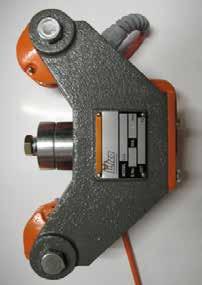
Excellent performance for industrial applications, ideal for straight line running at high speeds and high loads.
Optimised for high load, high speed, strong acceleration, deceleration and frequent direction changes.
Tested over many years and suitable for various applications; abrasion resistant, tear resistant, cut resistant.
They say you can’t re-invent the wheel…but what about the castor?
Industrial equipment supplier
Tente now offer a twin wheel castor for industrial applications with smoother manoeuvrability.
The Linea Industrial Series Castors can be used for hotel trolleys, warehouse trolleys and heavier hospital applications.
The construction of twin wheel castors allows for smoother maneuverability due to the differential effect and because they have a lower overall height than a single wheel castor with the same wheel diameter. The housing is made from polyamide.
Linea Industrial Series castors have extremely high shock absorbing properties and are quick and
easy to clean, due to their predominantly smooth surface.
Non-hazardous materials are used and do not contain polycyclic aromatic hydrocarbons or chromium. All components are impervious to many cleaning agents and chemical substances.
Tente’s range of Ultratech and Novatech polyurethane wheels sit well in the rapidly growing logistics
market, particularly in autonomous transport systems and automated warehousing solutions.
Ultratech Plus also minimises downtime in logistics operations thanks to exceptional wear resistance and heat tolerance, even under extreme conditions.
Tente Australia - tente.com.au
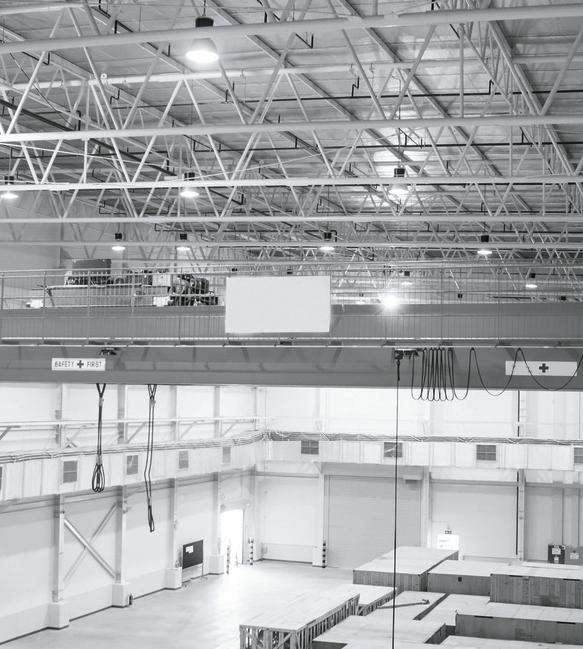


ROPE AND CHAIN CRANES AND HOISTS
• Helps reduce the risk of accidents
• Protects against overloading of crane and supporting structures
• Quick and easy installation and available for all capacity cranes
• Available preset or easily calibrated on site
• Helps reduce maintenance costs
• Minimises down time
• Automatic reset by reducing the load
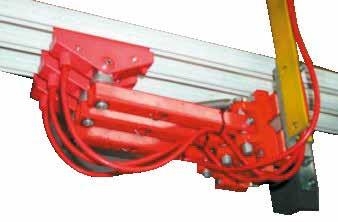
• Available in steel & copper
• Quickly and easily installed
• Supports required only every 1.5m
• Also available in a compact cluster range

Prevents side pulling and protects rope guides and drums on most multi-fall cranes & hoist
Prevent dragging of loads
Easily fitted to any crane/hoist
Helps reduce down time
Procon Australia is a well-established brand of Orion Australia, specialising in the manufacture and supply of heavy-duty and bespoke pallet bins, self-discharging hoppers and other specialised materials storage and handling products.
Sales Manager of Procon Australia, Lloyd Cox, is enthusiastic about the solutions that Procon products provide across a wide range of industries.
“The Procon range of products is focused around addressing unique applications and solving specific problems in materials storage and handling, at customer level,” he said.
“Many of the products that we’ve developed over the last 25 years started off because someone said ‘I need suchand-such and can’t find it’ or ‘When will someone make this or that?’.
The standout benefit of the Procon offering is the ability to customise and provide what the customer wants.
The Procon Australia team believe that there are as many specific requirements as there are businesses using these types of products.
“Industries that we work with include food and beverage manufacturing, abattoirs and pet food processing, waste management and recycling, mining and exploration, agriculture and aquaculture – just to
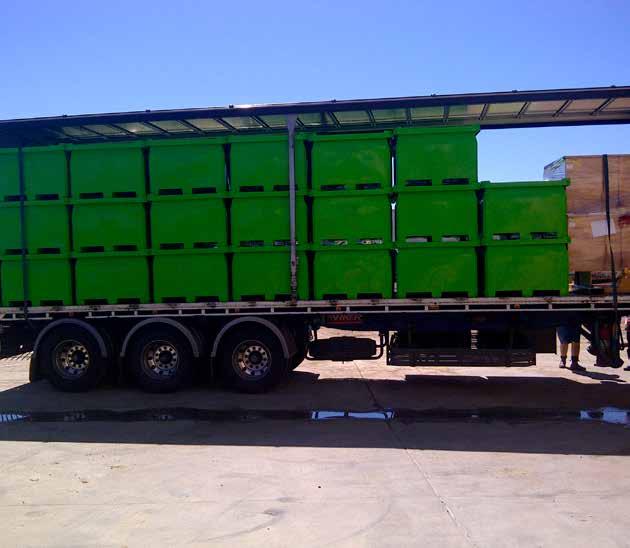
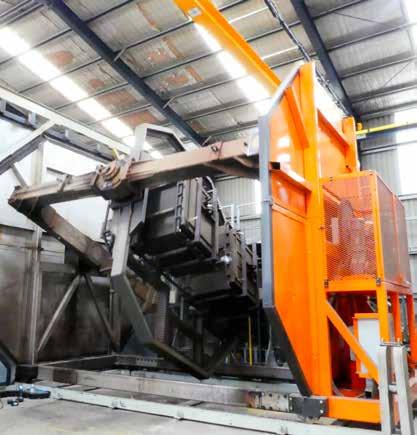
name a few!” said Cox.
Common features of Procon products that are utilised by progressive industrial clients are:
• Colour coding - Products manufactured in many colour options for many for varied applications.
• Low volume production runsCustomers are not locked into huge minimum order quantities.
• Bespoke designs - Procon can design around what a customer actually needs rather than what is available off the shelf.
• Customised messagingCustomers can add their own permanent and indelible messages onto products to confirm ownership or designate usage.
“Of course, while we’re very happy to talk about five, ten or 20 bins, we’re also quite familiar with and capable of processing large volume runs,” said Cox.
“Some of our more recent larger volume runs include more than a thousand bins for an aquaculture company, and more than four thousand for one of Australia’s leading food production facilities.”
In both these instances, the product required was not just an off the shelf option: the Procon team worked closely with the end users of the bins to create a unique solution that solved a specific set of problems.
While the majority of Procon products are manufactured from industrial quality food grade polyethylene using the rotational moulding method, they also have an in-house metal fabrication capacity to enable the production of metal and composite poly/metal solutions.
“With over 600 square metres of floor space dedicated to steel fabrication, we’ve got excellent manufacturing experience in both mild steel and stainless steel,” said Cox.
“Our team is innovative, creative and, frankly, mighty determined when it comes to solving problems. Downright doggedly determined.”
Procon Australia are wholly Australian owned and operated, with all manufacturing facilities located in Australia.
Orion Australia orionproducts.com.au




















































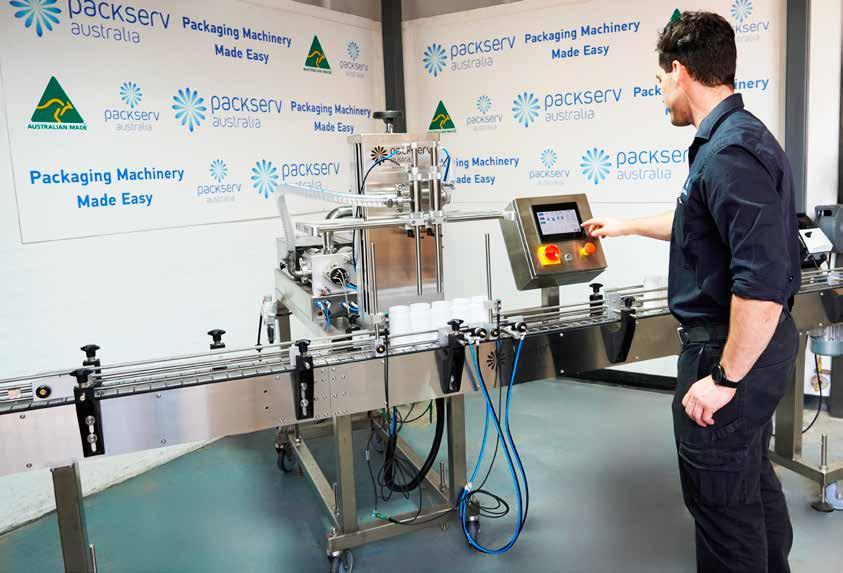
ackserv, a leader in Australian packaging equipment, has released a new PLC-controlled twin-head filling machine tailored specifically for small to medium-sized enterprises (SMEs).
Designed, engineered and built locally in Australia, this machine offers a smart, space-efficient solution for businesses looking to access digital technology without exceeding budget or space constraints.
Compact yet powerful, the new filler integrates Industry 4.0 functionality into a practical format, making it an ideal fit for space-conscious production lines.
Unlike many large-scale automated systems that dominate the market, Packserv’s design reflects the realities of small and mid-sized manufacturing operations, where floor space is limited, teams are lean and adaptability is everything.
At the heart of the machine is an intuitive HMI touchscreen that gives operators control over key parameters like fill volume, speed and nozzle configuration.
Settings can be preloaded, allowing for quick and easy changeovers
between different products and container types, significantly reducing setup time and minimising waste from trial-and-error adjustments.
“Smart technology doesn’t have to be complicated,” said Nathan Wardell, Managing Director of Packserv.
“We’ve developed this system to be operator-friendly and easy to learn, because we know that many SME manufacturers have limited resources and time for training. The equipment must work quickly, reliably and with minimal downtime.”
The machine also incorporates real-time data capabilities, allowing manufacturers to monitor cycle durations and resource allocation across every shift. Built-in smart sensors adjust for variations in container shape and product viscosity, automatically maintaining fill accuracy and reducing the likelihood of spills or rejected units.
“This is where automation adds real value,” said Wardell.
“By capturing and analysing performance data, SMEs can start identifying patterns, improve workflows and reduce resource
usage. These are tangible benefits that help drive sustainable growth, without requiring a full-scale digital transformation.”
The twin-head filler is also fully compatible with other packaging machinery, including capping, labelling and conveying systems. Its modular design enables it to scale with a business’s needs, offering flexibility that many entry-level machines can’t match.
As production ramps up or diversifies, the filler can be easily integrated into broader, semi- or fully automated lines.
Another key benefit is local support. Because the machine is manufactured in Australia, all intellectual property remains onshore, supporting local jobs and innovation.
Spare parts and technical assistance are also readily available, reducing the risk of extended downtime due to overseas shipping delays.
“Keeping development in-house means we can respond quickly to customer feedback and continuously improve our equipment,” explained Wardell.
“It also ensures our clients aren’t left stranded when they need service, parts or upgrades. We’re close by, and we stand behind what we build.”
For SME manufacturers looking to take the next step toward smarter, more sustainable production, Packserv’s new twin-head filler offers a practical and cost-effective entry point.
It’s a solution designed not just with automation in mind, but with real operators, factory floors and day-to-day production demands at its core.
“Innovation shouldn’t be out of reach,” said Wardell.
“We believe that Australian-made machinery should lead the way by being reliable, accessible and built to meet the needs of our local manufacturing sector. That’s what this filler is all about.”
Packserv Australia packserv.com.au

Sustainability is a significant priority for the agriculture sector, with organisations seeking out solutions that enable a reduction in water usage and waste disposal.
New Zealand-based manufacturer of post-harvest vegetable and fruit handling equipment, Wyma Solutions has saved some of its customers over 1 million litres of fresh water per day with its water recycling solutions.
These have significantly reduced waste disposal costs and have allowed larger washlines to be implemented in regions bound by maximum water use consents.
Mud towers are a key part of Wyma’s water recycling solutions, efficiently separating fine solids from dirty water so it can be reused. Notably, the company relies on a partner, Bonfiglioli, to power these mud drives.
“We partner with Bonfiglioli because their innovative, high-quality gear motors enhance the reliability and efficiency of our mud towers, ensuring our customers get consistent performance in challenging conditions,” said Jeremy Barnett, Mechanical Design Manager, Wyma Solutions.
“Their commitment to excellence and support aligns with our mission to deliver high quality, sustainable solutions to the post-harvest industry”.
Wyma Solutions mud towers are installed globally into post-harvest vegetable processing facilities from North America to Europe and Australia.
Used for crops like potatoes, carrots and other root vegetables, these mud towers serve large-scale agricultural producers, food processing companies and packhouses that prioritise water reuse and waste management.
These fully automated gravity settlers separate fine solids from dirty water with minimal energy consumption, returning clarified water for reuse.
Gravity settling tends to work best when the suspended solids are of small, consistent particle size.
The mud tower is best paired with a fine filtration system such as the Wyma Micron Filter.
“As a pair, they can remove up to 85% of total suspended solids (TSS)

from washline water,” said Barnett.
Produce and soil type can vary significantly around the world, but with site-specific analysis, Wyma Solutions can tailor water recycling systems to specific soil conditions and water usage requirements to give customers the most optimal solution.
“This process not only reduces the demand for fresh water but also enables the efficient return of soils to the fields from which they originated,” added Barnett.
Mud towers require specialised and robust gearmotor solutions that can handle harsh environmental conditions, high loads and high torque demands.
“This equipment has to perform in muddy, humid and possibly corrosive environments,” explained Bonfiglioli New Zealand Manager, Paul Savage.
“Vibration, corrosion and overheating are all potential issues that could result in motor failure and unplanned downtime.
“Bonfiglioli solutions are developed to address these challenges and are equipped with special features that make them rugged, ensuring reliability and a long service life.”
Bonfiglioli supplied Wyma Solutions with a 4-stage planetary drive from their 300 series range, which was selected as the mud tower application required a high ratio, over 500:1.
“The planetary reducer was the ideal solution, offering the most compact selection considering the low speed and high output torque required,” said Savage,
“The 4-stage planetary drive utilises an electroless coated WOA coupling flange allowing easy connection and removal to the mud tower extraction system.
“The selection was analysed by the Bonfiglioli Customer Application Engineering (CAE) team to ensure the specified design life was achieved.”
The 300 series feature a planetary drive train that makes it the ideal choice for heavy-duty applications where shock loads and impacts are expected.
“We needed a low speed, high torque solution for the mud tower’s extraction system, and
Bonfiglioli’s four-stage planetary gearmotor was perfect for the job,” said Barnett.
“Due to the large number of
extractions per day we required a high duty cycle from the geared motor.
“These units enable automated discharge of solid waste from the bottom of the tower, providing the durability and precision critical to our separation process”.
Looking ahead, Wyma Solutions is exploring enhancements to increase solids extraction rates and integrating smart monitoring systems that use sensors to track water quality and system performance in real time, giving operators greater control.
Bonfiglioli has been a key supplier to Wyma Solutions for nearly 20 years and is looking forward to its continued collaboration with the company.
“We understand the nature of their business, which requires a high service level due to short lead times,” said Savage.
“The Bonfiglioli stock model that we have implemented for Wyma allows us to achieve the quick turnaround times required. We’re excited for the next 20 years of our partnership”.
Bonfiglioli - bonfiglioli.com
Flip-flop screening technology
is increasingly widely used in waste management, mineral processing and recycling in Australia and New Zealand to separate materials that are sticky, clogging, wet, fine or difficult to screen.
This flexible multiuse technology – employing a double-vibration principle and flexible polyurethane-type screen media – requires systematic and programmed lubrication to ensure smooth operation, while helping to prevent wear and curtail potential breakdowns and downtime.
The technology’s particularly important need for systematic lubrication arises because of the high stresses generated by the machines’ core operating principle, as employed in municipal and industrial waste and waste recycling applications ranging from metals and mixed waste and compost, through to materials such as sand, cement, ash, fine minerals and demolition waste.
“Flip flop technologies (and related flip flow screens) employ flexible media that undulate rapidly because of the machines’ dual vibratory forces,”
said global bearings and motion technology company, Schaeffler.
“These strong forces cause flip flop screening machinery’s flexible mats to stretch and relax rapidly, which transfers energy to the material being screened, enhancing separation.
“This high-intensity, high-energy transfer at the heart of their operation also heightens their need for efficient maintenance and reinforces their particular suitability for automated digital predictive lubrication systems technologies such as the Optime Ecosystem.”
The highly adaptable and easily scaleable Optime system enables flip flop screen operators to get the best, most reliable, safest and most sustainable resource recovery performance from these machines.
Schaeffler Australia operates throughout Australasia and Oceania, where its advantages include in-house technical expertise to achieve the best performance from the latest global technologies, such as the Optime Condition Monitoring and Smart Lubrication Solution.
The Optime Ecosystem is a family
of real-time, 24/7 technologies that combine condition monitoring and smart lubrication.
It includes components such as Optime 3, Optime 5 and Optime 5 Ex sensors for wireless condition monitoring, as well as Optime C1 lubricators for automated lubrication.
The system also incorporates a mobile app and plug-and-play functionality for ease of use and setup.
Optime Ecosystem has won numerous European and US awards, including IOT and Industry 4.0 categories, plus an international Red Dot Design Award.
The comprehensive suite of condition monitoring technology complements Schaeffler’s long-standing expertise in bearing technology, vibration analysis and lubrication, proven over more than 250 locations in 55 countries.
Primarily targeting rotating machinery – which covers a huge spectrum of industrial applications – Optime functions effortlessly across a diverse range of speeds, from 120 to 5000 rpm. Importantly, it is also suitable for hazardous

Schaeffler are a global bearings and motion technology company
environments, which can be found in applications where flip flop screening is prevalent.
“Recent Optime applications in Australasia, for example, include recycling, which is an area of increasing importance as sustainability grows even further as a corporate priority, along with the high levels of safety that Optime brings to the task,” said Schaeffler.
Global Optime applications by Schaeffler include cranes, pulp and paper, cement, manufacturing, food and beverage, packaging, energy, resources, mining and materials.”
Schaeffler Australia schaeffler.com.au
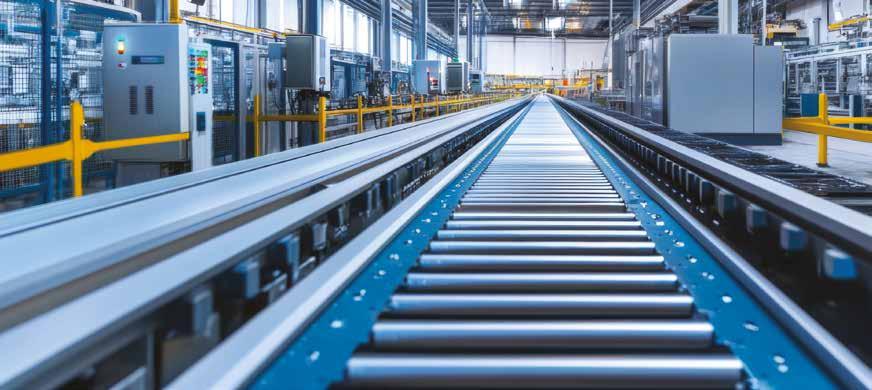

Hare & Forbes MachineryHouse has a range of Bodor lasers on the showroom floor and available for delivery. This is your chance to see the laser in action and take it home today.
LASER C3 CE 3KW & 6KW

•
• 21.5 inch display
• Up to 20mm mild steel
$117,200 ex GST
Oder Code: L78120 Available in Melbourne & Adelaide
• 110m/min maximum linkage speed
• 1.5G acceleration
• Up to 25mm mild steel FIBER LASER i7 CE 6KW i Series
• Compact Footprint
• 1.5G acceleration
• Up to 25mm mild steel
$144,850 ex GST
Oder Code: L78105 Available in Melbourne


$138,950 ex GST
Oder Code: L78121 Available in Brisbane & Sydney
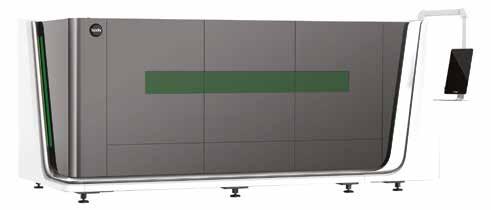
View and purchase these items online: www.machineryhouse.com.au/INU2506
Every machine includes:
• Local Service and Support
• Commissioning & Testing (Metro Areas)
• Comprehensive Operator Training (Metro Areas)
• Oxygen & Nitrogen Regulators with hoses
• *12 month warranty on machine parts & labour
• Five year factory warranty on - Bodor Thinker, Bodor Power & Bodor Genius


$121,850 ex GST Oder Code: L78302 • 6.5m tube length capacity
Series FIBER LASER P3 CE 6KW & 12KW
Series
• 200m/min maximun linkage speed
• 4G acceleration
• Up to 25mm Mild Steel
$200,550 ex GST Oder Code: L78221 Available in
$205,550 ex GST Oder Code: L78222

Technology moves fast in Australian manufacturing, and investment at the right time, in the right product, can make all the difference.
Knowing how to correctly pull the levers is of paramount importance in machining, where technology is always front of mind.
Sydney-based steel specialists Mascot Steel have managed to time their interventions superbly, buying new machinery to gain a march on the competition with the assistance of government incentives and reaping the benefits as a result.
In particular, the purchase of two Yawei machines - a 6kW HLF-1530 plate laser and 3kW YLP-10040 tube laser - from industrial equipment supplier Applied Machinery has greatly expanded their in-house processing capabilities, increased efficiencies and decreased lead times for their customers.
“Post-COVID, we invested in new processing capabilities,” Managing Director Joaquim Mendes told Industry Update
“We started with the plate laser in 2021. There were two main reasons: government incentives post-COVID allowing us to depreciate the machine in a single year, and the fact we were outsourcing $30,000-$40,000 worth of laser work every month.
“We purchased a Yawei tube laser from Applied, and a Yawei plate laser.
“We approached a few companies and decided on Applied because the Yawei plate laser was a good machine. Daniel Fisher, their Sales and Marketing Manager, gave us a good demonstration.”
Yawei machines are made in China and are highly customisable, with customers able to choose parts from various sources that fit their specifications.
“We opted for high-quality components: an IPG laser (German), a Precitec head (also German), a Siemens processor and European filters,” explained Mendes.
“The frame is fully fabricated at Yawei and they are a well-known heavy machinery brand.
“The machine – the HLF series –has been sturdy and reliable. Over four years, we’ve basically paid it off just through what we’ve saved in outsourcing.
“Lead times are better, and we can now offer 24–48 hour turnaround for customers, plus improve our
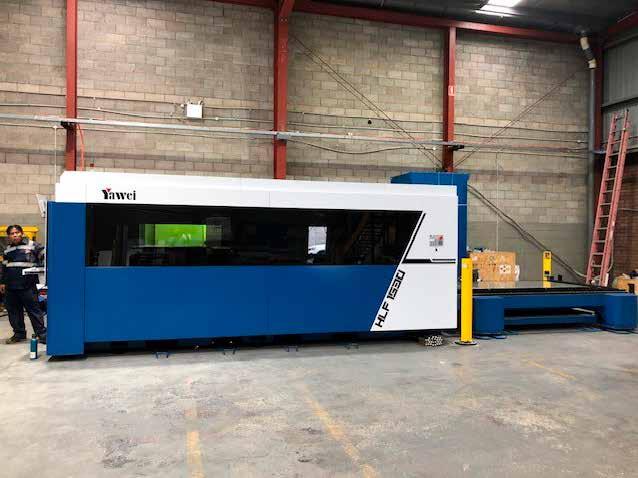
in-house production.”
Mascot Steel were so pleased with the purchase that, when the opportunity arose for a second machine to back it up, they went straight back to Applied.
“Honestly, I had no idea how a tube laser worked,” joked Mendes.
“But Applied convinced me we’d get the work once we had the machine and the tube laser’s been a revelation. It handles square, round, rectangular, angled and channel sections.
“We used to wait 2–3 weeks for outsourced tube laser work. Now we
run two shifts on our own machine and are very busy.
“If things go well, we may invest in another Applied machine in future.”
Mascot Steel was established close to 40 years ago and has built a reputation as a one-stop shop for customers, selling and processing steel from their retail division in Botany, in the city’s south, and their two factories in Penrith in the far west.
They can boast a 3,000 square metre standalone factory that services project work and heavy structural fabrication as well as a
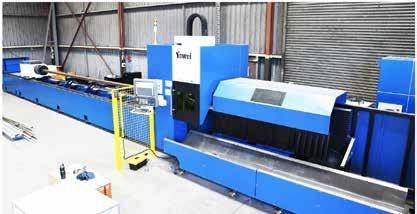
second plant on the same street of about 2,000 square metres, which services general fabrication, sheet metal work, assembly, and other construction-related fabrication.
That diversity of work means a diversity of needs from their providers - something that Applied were more than happy to support.
Applied are based in Australia and see their role as not only to provide an education piece on the capabilities of Yawei machines, but also to follow up on them, adding insights and ensuring that customers get the best out of their purchase.
“You can buy a machine directly from China, but who’s going to service it?” said Mendes.
“Applied has been excellent in that respect. They also educated us on the options. You get what you pay for – there are of course options for lower end components, but building a premium machine, with premium parts at a competitive price point just made sense
“We chose a Yawei machine with European components. We paid good money, and we’ve been
“MY
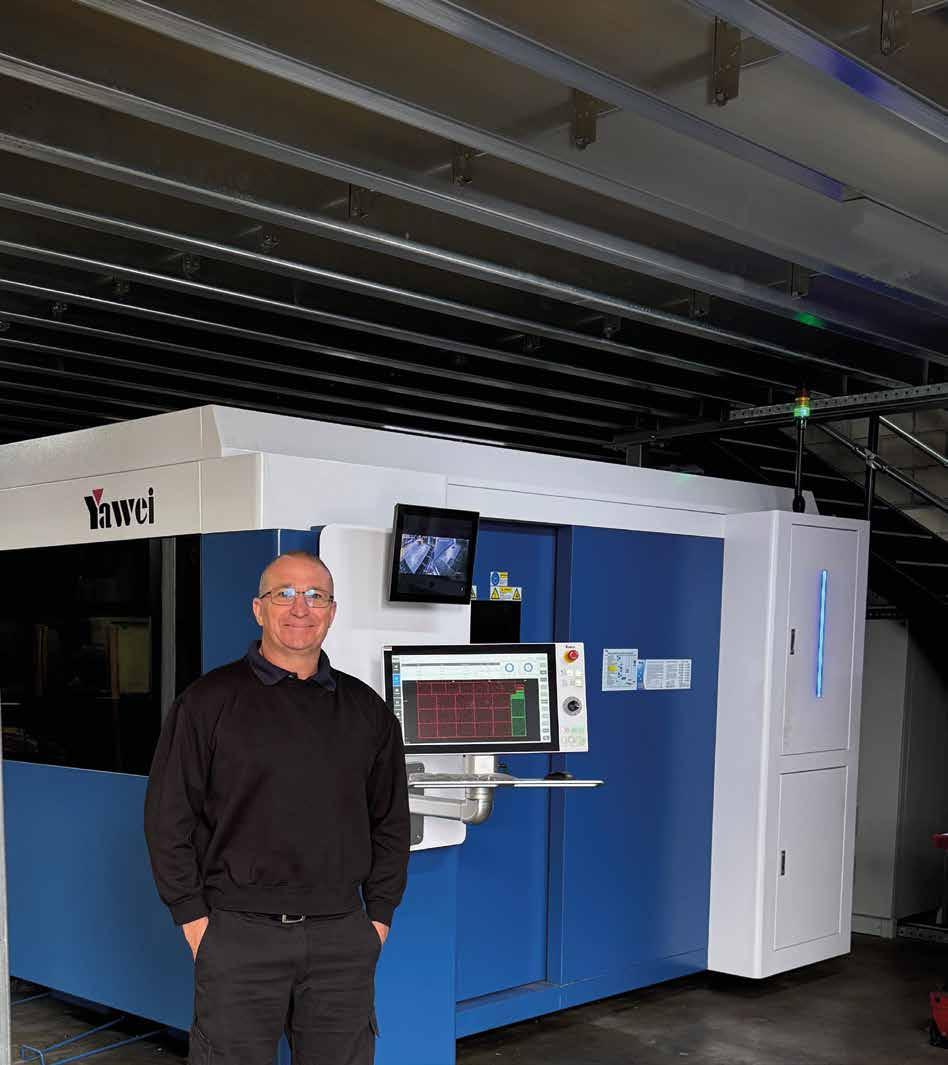
Dollar for dollar, the Yawei HLF series fiber lasers are in a league of their own, providing possibilities for all size companies across the laser cutting sector.
Featuring high quality componentry, they offer multiple benefits including high speed, extreme accuracy and consistency of cut, combined with low operating and maintenance costs.
Plus, you get the expert advice and support that only an experienced local supplier like Applied Machinery can provide. We’re a true machinery partner - just ask Daniel Smith.
Real Service. Real Support. Real People. That’s Applied Thinking.
satisfied with the performance and support – especially from Daniel and the team.
“In fact, a few months ago, I scrapped my old ESAB plasma machine – a machine that could cut 20mm steel. But now, people want holes that are clean, round or square and laser cut.
“There were no takers for the plasma machine – so we salvaged what parts we could and scrapped it. Everything’s moved to laser now.
“Tube and plate lasers have made life faster and more productive. Having them in-house gives us the flexibility to commit to tight deadlines.
“If you’re outsourcing, you’re dependent on someone else’s lead time. I’d rather spend more on a good machine than go cheap and have problems later.
“Yes, we had teething problems –that’s normal with any new machine – but once you get through that, it’s smooth sailing.”
Mascot sell into formwork companies, waste and recycling businesses, elevator and lift suppliers, staging companies and builders, supplying
them with everything and anything in steel.
The company employs around 45 people, including in-house designers, skilled welders and a management team made up of engineers.
“We are particularly involved in infrastructure projects,” said Mendes.
“We worked on the Crown Casino jump forms back in 2017–18. We’re currently working on the Atlassian building near Central Station.
“We’ve supplied fabricated steel for the Snowy Hydro project, structural formwork for Metro tunnel projects and steel for the Singleton Bypass.
“We specialise in steel formwork for tunnels, including curved structures. We also supply garbage chutes and doors for high-rise buildings.
“For staging companies, we’ve fabricated temporary staging structures, like a temporary roof used at the Australian Open. That’s something they install during the event and then pack away.
“With elevator companies, we’re one of only two companies in Sydney certified to make fire-rated elevator landing doors. We supply everything that goes into elevator shafts – trimmers, liftings, structural steel.
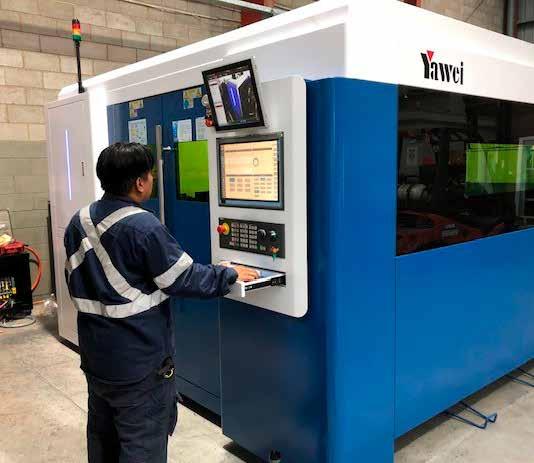
“Beyond that, we do general structural fabrication for builders. We serve walk-in customers, account customers, online enquiries and repeat orders.”
Welding can be a harmful business - not just at the point of contact, but also from the debris created in the process.
In particular, the runoff from TIG tungsten welding is a known carcinogen, and welders are often forced to breathe it in during their work, which can cause health issues down the track.
Welding Automation, a Victorianbased wholesaler, were on hand at Australian Manufacturing Week (AMW) to demonstrate their solution to this problem.
The Inelco Ultima-TIG, now available in Australia, is a closed-loop system with patented wet-grinding technology that eliminates the need for open use of angle grinders to sharpen TIG tungsten electrodes.
“Sharpening TIG tungsten electrodes, particularly thoriated, can be quite harmful,” explained Michael Gonzalez, Director of Welding Automation, to Industry Update
“It’s a carcinogen, which can cause cancer. This closed-loop system uses grinding technology which collects the dust in a safe and environmentally-friendly format, and you can discard those canisters appropriately.
“From a sharpening perspective, there’s a collet that holds the tungsten electrode, and it can be manually sharpened just by turning the electrode holder, or, when using the Ultima with the AutoGrind, it does it all automatically.”
The product was a big success at AMW, standing out from the crowd in the welding pavilion as a unique safety-first addition.
“The majority of the TIG welders I’ve spoken to at the show – probably 95% plus – are still using either an angle grinder or a belt sander,” said Gonzalez.
“Most of them are actually aware of the health risks, but they still choose to use them, even though there is a product on the market that is safe and eliminates all of those health risks.”
Welding Automation is looking to alter that mindset, starting with the next generation of welders.
“We’re trying to change behaviours right from the get-go,” said Gonzalez.
“We work with a number of TAFE organisations around the country, both to educate and to supply these tungsten grinders.
“New apprentices and the next generation are aware that there is a product they can use that’s safe, and
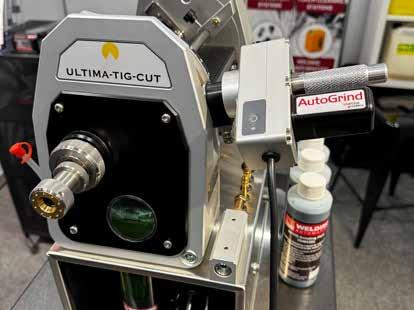
they get appropriately trained on it, so when they go into the workplace, it’s expected that those tools are available for them.”
Welding Automation can also recycle the runoff fluid that catches the debris, and have a portable option that can be used in the field.
“We’ve got a little portable one that doesn’t use the wet technology, but it’s got a dry chamber that is
fully enclosed,” said Gonzalez. “It’s got a particle filter that captures all the tungsten dust. Again, super safe. The beauty of that one is that you can take it out into the field, do a quick sharpen on a tungsten electrode, and keep going.”
Welding Automation welding automation.com.au
Let’s face it - most robotic arms tending CNC Machinery do the same thing. They pick, they place, they repeat.
What truly sets the Cubebox apart is not the arm itself but the brains behind it - the software.
Distributed by Hare & Forbes Machineryhouse, the Cubebox features RoboCAM, an intuitive software system developed by Tezmaksan.
This clever tool transforms a simple product layout drawing into robot instructions, meaning no complicated programming, no specialist skills and no wasted time.
Operators can be trained quickly, meaning the machine and factory are more efficient than ever.
Paired with a DN Solutions turning or machining centre, be it a new addition to or an existing part of your production, the Cubebox is an intelligent and compact solution that boosts efficiency and reduces reliance on highly skilled staff.
Backed by the power of Hare & Forbes Machineryhouse’s expert CNC support team, including nationwide technicians, training, logistics and spare parts, ensures support throughout the purchase and post-purchase.
During the recent Australian Manufacturing Week in Melbourne, the Cubebox ran faultlessly, loading and unloading a DN Solution Lynx 2600SY turning centre.
“All the robots are much the same,” said Cameron Hart, CNC Division Manager at Hare & Forbes Machineryhouse.
“However, the reason we’ve jumped back into this space is the Cubebox’s software and its ease of use.
“Previously, robots were pretty finicky and needed a lot of setup time, but that’s not the case anymore.”
Hares & Forbes Machineryhouse machineryhouse.com.au


The Harrison Alpha 1550XS
CNC Lathe is a powerful and precise machining tool, designed for high-precision turning operations with a swing over bed of 550mm, a distance between centres of two to four metres and generous 104mm bore.
Equipped with Fanuc control, all Alpha XS lathes offer versatile operation modes, including manual, conversational, fully automatic and offline CAD/CAM programming, making them the ultimate solution for turning operations.
Colchester Machine Tool Solutions recently supplied a Harrison Alpha 1550 XS to Emery Engineering in Brisbane, Queensland, ensuring they have the cutting-edge technology needed to meet their production demands with precision and efficiency.
“Thanks to Karl Winter and the guys at Colchester for the supply and installation of our new Harrison Alpha 1550XS,” said Damien Emery, Managing Director of Emery Engineering.
“From viewing the machine at Australian Manufacturing Week 2025 in Melbourne through to installation and training, the process was easy.

“As the Harrison is a new style of machine to our factory, Karl was able to assist with all the queries we had and worked with us to get the best options for us as an end user.
“Karl was onsite during the installation process and has always been available for phone support as needed.
“Since its installation, the new 1550XS has been easy to learn and has already proved its worth to our clients.
“Again, big thanks for this great
When you need to know that your oil-free compressed air actually is free of oil, there is a product that can guarantee it.
The Bluekat Converter from Boge Compressors Australia is not ‘virtually oil-free’: it is oil-free, and therefore ideal for highly sensitive applications.
That includes the food processing, beverage and pharmaceutical industries, as well as hospitals where breathing air quality is paramount.
The BC series, as the Bluekat Converter is known, is class 0 certified as per ISO 8573-1, proving that this uncompromisingly high standard can be met at extremely competitive prices.
It works perfectly with other downside equipment such as dryers and filters to further improve the quality of the compressed air without imposing any conditions on the ambient air.
• Guaranteed oil-free compressed air in accordance with ISO 8573-1
Class 0 (residual oil content ≤ 0.0025 mg/Nm³) confirmed by independent TUV measurements.
• Absolutely secure system since a protective shutdown unit prevents oil-containing compressed air from entering into the network in the event of a malfunction
• Lower energy consumption to a max. of 0.01 kWh/m 3 through improved insulation
• Minimises significant bacteria, fungus and microbial diversity content in the compressed air.
• Pure and neutral condensate (Ol<2mg/l; pH: 6–7)
• Irreversible separation of silicon monomers out of the compressed air
• Partial load capacity of 20 to 110 % of the nominal flow rate with VS module
• Increased service life for downstream dryer.
ward.”
Colchester - colchestermachines.au
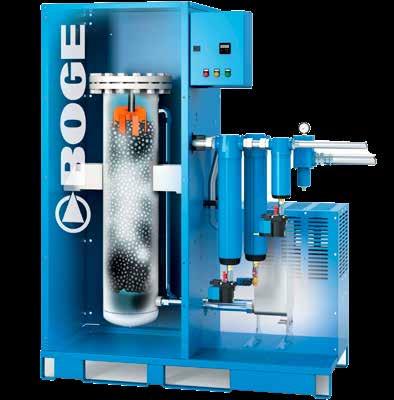
The Workplace Health & Safety Show (WHSS) is all about the latest developments in OHSmaking it the perfect place to launch a brand new forklift barrier product.
TruGard did exactly that, displaying their new TruGard Flex barrier in Melbourne for the latest edition of WHSS.
Industry Update saw the worldfirst barrier in action and spoke to TruGard Managing Director Mark Taylor about the functionality of the new product, which includes a footing that can absorb impact and send it through the barriers to avoid a breakthrough.
“What we’ve been working on for two years is this Flex base down here, which is a world first for steel,” he explained.
“What it does is absorb the energy down at the bottom there, and we’ve got a worldwide patent on it.
“This is only soft for display purposes, but when it’s got the hard, proper rubbery stuff in there, it’s very stiff. You can’t move it. When you hit it with a four-tonne forklift,

it absorbs all that energy.
“The energy is taken up down the bottom. It’s what we call a multistage energy absorbing system. The first impact gets absorbed down the bottom, and then when it bends over a little bit, it goes into tension with the barriers. That load is then spread horizontally.
Steel is used for cost, stability and environmental purposes, as it

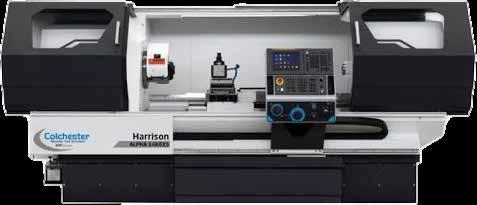
Incorporates turning with milling, drilling and tapping functionality.
Reduces the need for second operation production for oneoffs and small to medium batches of components

can absorb greater impact at a lower price point while also being recyclable after use.
“This whole system is 50 percent of the price of plastic, so it’s really, really cost-effective,” said Taylor.
“It’s been around a lot longer than plastic, it’s more proven. Plastic flexes, so it absorbs its energy, but because it moves so much they have to have these big flex zones out
behind it. We don’t need any of that.
“It (steel) only moves 90 millimetres maximum, so it nearly stays within its own space.
“This is a world first for a flexible steel system.”
Workplace Health & Safety Show whsshow.com.au

Range designed for fast, high-quality repeatability, accuracy and surface finish to exacting toolroom accuracy standards (DIN 8605), Significantly reduces component production costs
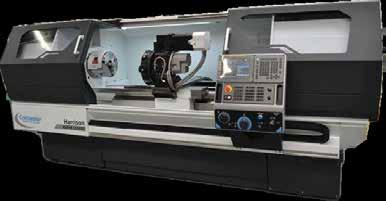
Success in manufacturing is all about knowing where an opportunity is - and when to take it.
For Hi Tec Oils, one of the most established brands in the Australian oil sector, that time is now.
They’ve recently upgraded their facility in Altona, Victoria, consolidating four existing sites into the most advanced of its type in Australia, a state-of-the-art, full stainless steel manufacturing plant with a maximum output capacity of six million litres of oil a month.
“It’s built for growth,” explained George Gambino, owner of Hi Tec Oils.
“The thought process was that, with our head office in Sydney situated on just two and a half acres, we simply don’t have the space to efficiently and effectively produce the volumes we’re forecasting to meet medium- to long-term demand.
“We quickly realised that for growth, this is not big enough.
“Our goal was to create a state-ofthe-art manufacturing plant - electronically operated, high quality, efficient and like no other. A highlevel blending facility that truly represents a premium product.”
“The idea began in 2019. The journey started during COVID. Our first tank order was placed in 2020 - but they didn’t arrive until 2022.
“What followed were years of planning, engineering, machinery sourcing and countless hours of execution. In 2024, we completed all testing and officially commissioned the facility.”
All this investment in growth was done with the market in mind.
“In recent years, oil production in Australia has seen significant changes,” said Gambino.
“Several major foreign-owned oil
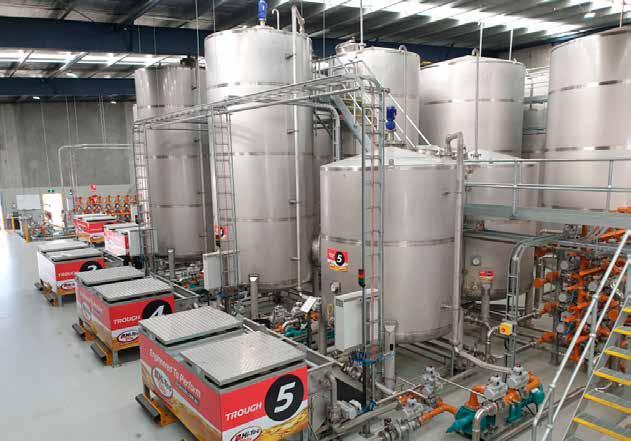
and lubricant manufacturers have scaled back operations or exited the market - creating opportunities for faster service, local expertise and more direct customer support.”
Hi Tec Oils supplies the automotive, commercial and industrial markets in Australia with a range of high-quality oil products, using leading international base oil and additives suppliers meeting and exceeding the relevant API, OEM and SAE standards.
The landscape has changed, and we’ve seen the opportunity for growth,” explained Gambino.
“We’ve always had full confidence in our product and service. Year
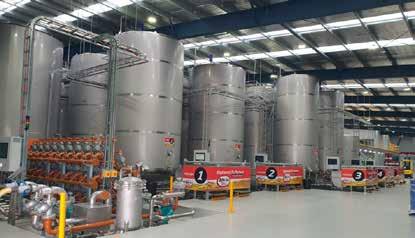
after year, we’ve experienced strong growth, with more customers across the country choosing our brand.
With over 38 years in the industry, much of our success comes down to reputation - built on exceptional customer service and a premium product.”
Less reliable is the price of oil, which is largely set on international markets and traded in foreign currency, which can result in volatility. That’s where a reliable banking partner like St.George Bank can come in.
They’ve been one of the leading suppliers of business banking to Australian manufacturing for decades and, as a result, know the impact that input prices can have.
Their WinTrade product is designed to help those with exposure to currency fluctuations to plan ahead, allowing them to lock in a price for foreign currency at a specific time.
“The fluctuation in global currencies directly affects our input costs.
Our St.George WinTrade facility helps us overcome some of those barriers,” said Gambino.
“When I need to pay for international supplies, I can lock in exchange rates and secure favourable terms through my WinTrade facility - giving me certainty on
currency and flexibility on payment.
“We can’t control global currencies going up or down. But what we can do is get security from locking in a currency rate with St.George. We gain cost certainty on our inputs at the time of purchase, helping minimise our exposure.”
That understanding from the bank around the complexities of manufacturing businesses is one part, and the customer service is another.
“We’ve found comfort and confidence in the support from St.George on various aspects of the business,” said Gambino.
“They’re available whenever we need them and always reliable. That kind of traditional, personal service is essential to us, and it’s the same standard we strive to deliver to all our customers.”
“They’ve built a traditional, personal banking relationship with us. We deal with one dedicated contact, and matters are handled promptly.”
“We don’t rely on the bank for much, but when we do, they consistently step up to support usdemonstrating the strength of our partnership.”
St.George Bank - stgeorge.com.au

The Australian Made kangaroo carries plenty of weight in Australia - and that has only been intensified by the spectre of tariffs limiting our capability to import goods from abroad.
Now, new data from widely-respected pollsters Roy Morgan Research has revealed just how valuable Australian Made is to customers, with a stunning 73% saying that they would be willing to buy more locally-produced products to avoid reliance on imports.
Moreover, a further 72% said they would happily pay more for Aussie goods and 67% said that it was their intention to positively preference Australian Made products in the next year.
The research was produced by the Australian Made Campaign, whose Chief Executive Ben Lazzaro said that the global economic environment supported the idea of backing Aussie manufacturers.
“Now is the time for Aussies to help Aussies,” he said.
“When we support our local makers, growers, farmers, and manufacturers, we not only get products made to Australia’s high standards, we can also assist local industries that may be facing reduced exports.
“While global supply chains are shifting, this is a moment of opportunity for Australian brands to claim new space in both domestic and international markets – by leaning into what they do best - high quality production, sustainability,

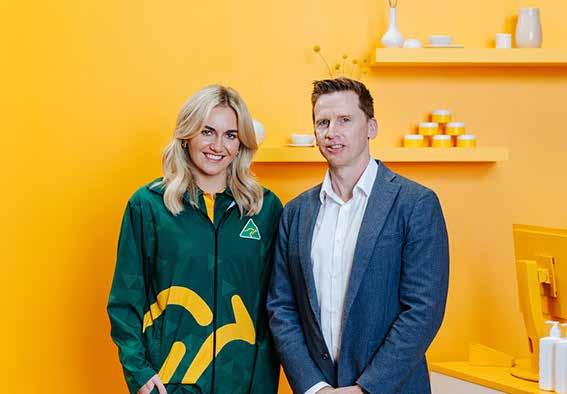
authenticity and community values.
One of the best ways to do that is through country-of-origin branding.
“It’s never been more important for local manufacturers to market their products with prominent Australian Made branding and to take the opportunity to be part of Australian Made Week in May.”
Roy Morgan CEO Michele Levine
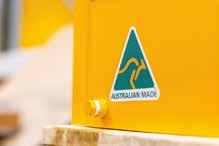
added that, while Australians were feeling the bite from the cost-of-living crisis, spending a little extra on Australian Made would have a ripple effect throughout the economy.
“Cost of living pressures may challenge some people to purchase Australian-made, especially for everyday items,” she said.
“But our research shows if each
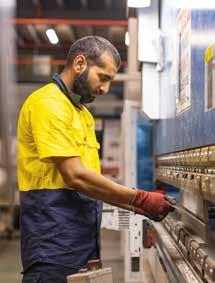
household spent an extra $10 weekly on Australian-made products, an additional $5.6 billion would be generated and could create almost 10,000 new jobs.”
Australian Made australianmade.com.au





Anyone who has been around the Australian manufacturing sector for any length of time knows Walter Bachmann.
The founder of BAC Systems produces some of the world’s best industrial storage units from his factory in Western Sydney, manufacturing an entire product range on-site from development to final production. It is not just in manufacturing that Bachmann is an innovator. His factory is famous for its on-site chapel - Walter is a devout Catholic - as well as the unique working environment in which staff are given the opportunity to combine work and prayer.
What many do not know about the BAC story is the role that trade fairs have played in it.
Bachmann, who had been a design engineer in his native Switzerland, developed the idea for modular storage units while travelling to Australia by bus in 1977, starting the business when he arrived.
He had developed patentsanother 30 would follow - and developed the business by attending trade fairs.
“When I came to Australia, it was very hard to be a manufacturer,” he told Industry Update at his office in Glendenning.
“My English wasn’t good then and maybe it’s still not great today, but that’s beside the point.
“My father was a farmer, and he used to take his animals to market to sell. I thought, well, how did my father sell at the market?
“So I said, if my father sells at the market, I have to do the same. For me, that meant exhibitions.
“When I first went to exhibitions, I had to display a couple of products. I remember I had very limited capital, but I never borrowed money.
“I had to hire a trailer to go to the exhibition. I was lucky to get a stand at

the hardware exhibition, although it turned out to be the wrong event for me.
“When I arrived, the stand was bare. I didn’t know I had to order the walls and branding separately – I thought at least the walls would be included.
“Luckily, the exhibitor next to me, a coffee machine seller, was very kind. He helped me cover the walls and make the stand presentable. He later became a customer and bought quite a few BAC cabinets.
“What I learnt from that experience is the value of meeting people face to face. If you’re just on the phone, I don’t see you. But if I meet you, I’m much more likely to want to help you. That’s the power of exhibitions.”
For a product like BAC’s modular workshop and drawer storage systems, the ability to demonstrate in person is everything - especially at the development stage of
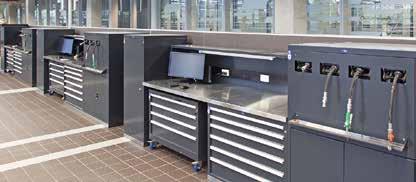
introducing it to the market.
“Back then, Australians didn’t know much about drawer storage systems,” said Bachmann.
“Only simple solutions were available. But once people could see and touch our product, they realised it was strong and well made.
“The next important exhibition I attended was the Australian Manufacturing Week in 1981. That was a big one. There were so many people. I would put a few pamphlets on the bench and they’d disappear immediately.
“Entire TAFE classes would come through and I had to take my pamphlets away just to make sure I had some left!
“In those days, attending an exhibition was like a day out. People came with interest, it was a show day for many with a day off, exploring new ideas and friendships.
“Those exhibitions were crucial for me in building BAC Systems. Exhibitions helped me make some of the best contacts.”
Some of the contacts made in those days are still clients, and the storage solutions sold are still in use.
BAC Systems has always prioritised products that are built to last, with modular designs to expand as required.
“Today, many products are made to become obsolete within a couple of years,” said Bachmann.
“That’s not good for business or the environment. Downtime costs

money. Replacing equipment costs money. But if you buy something that lasts 20 years and still works the same, that’s a real advantage.
“Maybe the same customer won’t need to buy again soon, but they’ll tell others. Word of mouth builds your reputation.
“You also have to design for the world market. It’s not enough to be good for Australia – you need to be competitive globally. Either you become the best in a niche, like the Swiss with watches or chocolate, or you offer something world-class at a competitive price. That’s what we’ve aimed to do.
“In manufacturing and design, great ideas can be copied. But no one can copy your execution. They can’t copy your materials, your price point or your process. That’s where your advantage lies. Good product and service makes a happy loyal customer.”
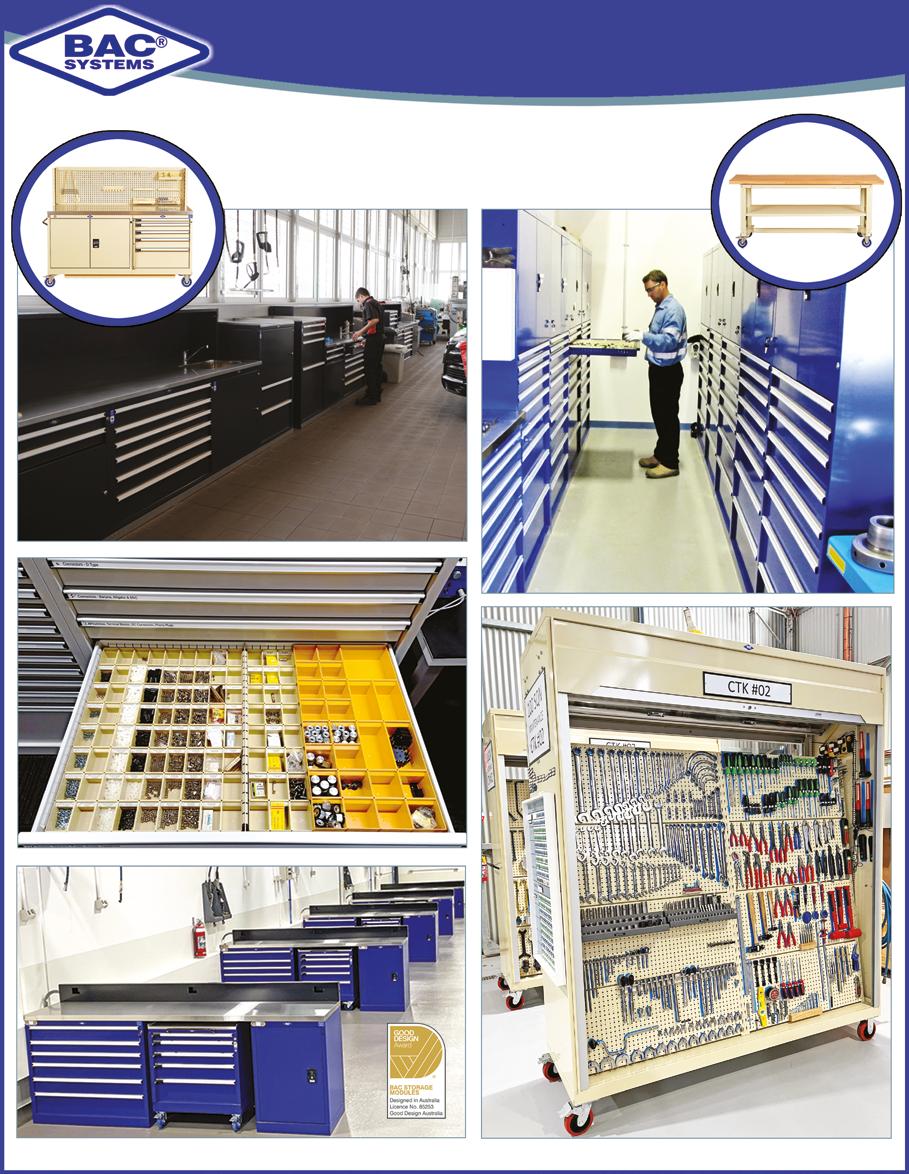



How many compressed air station operators have complete visibility into their machines’ exact condition and compressed air quality?
For many manufacturing companies, insufficient monitoring of this critical data is a common challenge.
The result? Unplanned downtime, decreased efficiency and unnecessarily high energy costs.
Kaeser’s cutting-edge measuring technology delivers the ideal solution. With advanced process data acquisition, businesses can lower energy costs and sustainably enhance compressed air quality.
High-precision sensors track all key process and energy metrics, including leakage currents, voltage quality, pressures, temperatures and flow rates.
Additionally, leaks, pressure dew points, differential pressures and internal machine conditions are fully transparent - providing operators with invaluable insights and significant operational advantages.
Advanced measuring technology
enables continuous monitoring of the entire compressed air system.
Data can be captured, analysed and visualised in real time.
Kaeser multi-sensors transmit key measurements directly to central control units, such as the Sigma Air Manager, providing the foundation for future predictive maintenance.
This proactive approach cannot only reduce costs but also significantly lowers the risk of unplanned downtime.
Placing the right sensors in the right locations is essential.
Intelligent sensors capture multiple data points at each measuring location and integrate seamlessly via the secure Kaeser Sigma Network.
This advanced process data acquisition enables real-time monitoring, detailed analysis and valuable system insights for fault prevention and process optimisation.
Operators can fine-tune their compressed air systems independently or benefit from real-time monitoring by external experts.
With state-of-the-art sensor
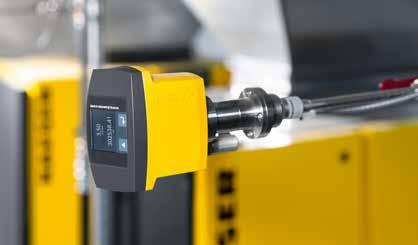
technology, modern measuring devices are compact, powerful and energy-efficient, ensuring reliable operation even in hard-to-reach places. They are also easy to install and ready for immediate use.
Reliable compressed air supply is essential for seamless production.
Kaeser’s advanced measuring technology delivers precise data to optimise system settings, detect leaks
and efficiently manage compressed air distribution.
This enables compressed air station operators to reduce energy costs, prevent unnecessary downtime and maximise overall production efficiency.
Kaeser Compressors Australia au.kaeser.com
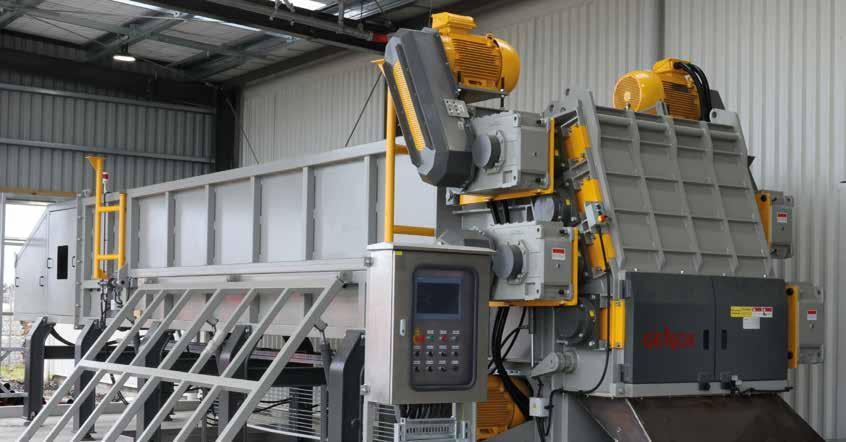
Email: Visit: 03 9706 8066 sales@appliedmachinery.com.au appliedmachinery.com.au genoxmachinery.com.au With its multi-rotor design, the Genox J-series easily shreds HDPE pipes of all sizes. Combine it with a Genox washing plant and pelletising system, and the loop is closed on HDPE pipes. This is the circular economy in action. Genox make world-class recycling solutions, for real-world recycling applications
The 2025 Melbourne edition of the Workplace Health & Safety Show has wrapped, breaking its own records for attendance along the way.
It ended not only with increased footfall, but also a big news announcement: the Show is headed to Brisbane in 2026, expanding to a third event across the year alongside the Melbourne and Sydney editions.
The recent edition was held at the Melbourne Convention & Exhibition Centre from 21-22 May, and achieved a 13% increase in attendance from last year with an impressive 5,543 visitors through the doors.
“The Show has once again proven its worth to the safety community and has solidified its status as Australia’s premier platform for health and safety professionals to connect, collaborate and innovate,” said Stephen Blackie, the Show’s Portfolio Manager.
The Show attracted a high calibre of visitors, including key decision makers (safety professionals, procurement or operations managers and directors) from some of the country’s biggest companies.
The feedback from the Melbourne show audiences has been positive, with visitor survey results revealing that:
• 78% of attendees do not attend any other trade shows for sourcing safety products or solutions
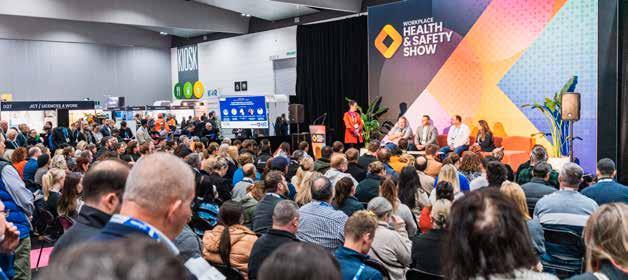
• 72% will be attending next year
• 75% would recommend the Show to a friend or colleague.
Workplace Health & Safety Show was created to answer the call from industry to help safety professionals and employers find the right workplace safety solutions, navigate complex regulations and build safer, healthier and more productive workplaces.
Highlights from 2025’s first edition included the announcement of new products - notably the Festool Exoskeleton, designed to help workers lift products overhead for longer without injury, and the Tru-Gard barrier, an innovation in forklift safety.
Meanwhile, exhibitors like Active
Environmental Solutions, Locatrix, FES and Ideagen Plant Assessor delivered live demos of a range of cutting-edge safety solutions, from wearable tech to advanced compliance software.
“These brands presented their solutions to a highly engaged audience in person and got real-time feedback from prospects, discovering new applications for their technology or products,” said Blackie.
There was also the announcement of the 2025 Champions of Safety Awards winners and a host of networking opportunities, which allowed exhibitors and visitors to establish face-to-face connections through panels, expert-led workshops, meet-ups and discussion sessions.
Now, focus moves to the next edition, to be held in Sydney in October, and to a brand new edition in Brisbane for 2026.
“On the back of the highly successful Melbourne event, we’re seeing a surge in demand for our upcoming Sydney Show, which is already 80% sold out,” said Blackie.
“Momentum is also building for the launch of our new Brisbane Show which will take place from 25-26 March 2026 at the Brisbane Convention & Exhibition Centre, which is also selling fast, with over 40 stands already booked.”
Workplace Health and Safety Show - whsshow.com.au
Global Spill and Safety are thrilled to introduce their new range of Eagle Overpack & Salvage Drums into the market. Eagle Manufacturing, alongside Global Spill & Safety, is part of the Justrite Safety Group family of brands and has been a trusted name in storage and transport solutions for decades.
Overpack and salvage drums are ideal for the safe storage, handling and transportation of hazardous or non-hazardous materials. They can also be used as original shipping containers or for medical disposal and incineration.
The term “overpack” has become synonymous with “salvage drum” in recent years - there is, however, an important difference.
An overpack drum is used to securely house undamaged and non-leaking containers or packages
of hazardous liquids, and provides secondary containment ensuring packages are kept segregated and protected, particularly during transport.
A salvage drum provides similar segregation and protection and should be used for damaged, defective, leaking or non-conforming dangerous goods packages for purposes of transport for recovery or disposal.
Eagle Overpack and Salvage drums are constructed from high-density polyethylene (HDPE) with UV inhibitors.
HDPE is a high molecular weight material designed for an optimal balance of density and molecular weight distribution, ensuring the drums are durable, lightweight and resistant to weather and chemicals.
Global Spill & Safety globalspill.com.au

Trade shows are superb places to show off new products, especially if you can generate a crowd of interested onlookers.
That was certainly the case for Festool, who had plenty of eyes on their stand at the Workplace Health & Safety Show (WHSS) as they debuted their new Exoskeleton product.

It is an ingenious addition to the logistics and materials handling space, using compressed air to help alleviate heavy overhead loads and assist workers in carrying items for longer, improving productivity and reducing injury risks at the same time.
Industry Update managed to test the new kit and had a chat with

Mark Selby of Festool, who talked us through the product - and why a show like WHSS was the perfect place for their launch.
“The Festool brand is better
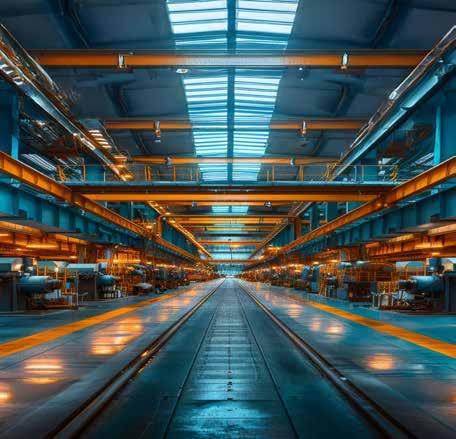


known for power tools, but we have this new product coming to market in Australia called Exoskeleton,” he explained.
“It helps people avoid repetitive stress issues by taking five kilos off the weight when people are working overhead.
“With it being safety-related and something we’re bringing it to market shortly, we really needed to get out and talk to some people, to find out how they would use it. The use cases for it are very much still to be confirmed.
“We deal a lot with the construction marketplace, and the last couple of days have been fantastic. We’ve had some really detailed, good conversations with people.“
The Exoskeleton might be useful in the construction space, but almost every visitor to the Festool stand could see how they could use the product in their area, particularly in manufacturing and logistics.
“It was initially designed for people doing things like sanding ceilings and working overhead with power tools that are potentially quite heavy and would make people’s muscles ache,” said Selby.
“That means they can work for longer, they’re putting less stress on their body by working in awkward positions. The real big one is being less likely to incur an injury.
“When we tested it out in our warehouse, we wondered whether some of the logistics guys would be interested, and we’ve certainly found that.
“But also obscure things: there are so many instances where people are lifting and carrying.
“It’s been a real eye-opener –chatting to people, finding out the markets we should potentially be honing our efforts on to promote it.
That Show environment is vital, and with another edition of WHSS coming up in October in Sydney, there is plenty of chance for other companies to get involved with their launches.
“It’s amazing how bringing something like that to a show like the Safety Show, just by talking to people,” said Selby.
“Suddenly people have ideas as to how they’re going to use it that you hadn’t thought of.”
“It helps channel our marketing strategy as well based on the feedback and details we’re getting from the Show.
“From us, it’s a huge thumbs up: we’ve really enjoyed it. Now, we need to debrief when we get back to the office and collate all the information we’ve found, but it’s been super useful. I thoroughly recommend it.”
“There’s still no substitute for chatting to people.
“We’re very much focused on one market, but it’s sort of opening our eyes to uses we hadn’t thought of, and that for us is invaluable – that’s worth so much.
Australia manufacturing’s path to net zero will require input from government, industry and universities - and that collaboration is already well underway in South Australia.
A world-first new concentrated solar thermal (CST) demonstrator, which can improve efficiency in energy production for industrial purposes, has been demonstrated by the University of South Australia (UniSA), who worked on the project alongside Impacts Renewable Energy Pty Ltd and Charles Sturt University and with funding from the Federal Government’s Australia’s Economic Accelerator (AEA) Ignite programme.
The new project involved over a decade’s worth of UniSA research
South Australian space startup, Paladin Space, has unearthed the world’s first reusable payload built to capture space debris and safely remove it. Payloads are spacecraft components designed to carry and deliver cargo. The innovative reusable payload designed by Paladin, named Triton, was demonstrated at the University of South Australia’s Innovation and
and patented technology, and sees lightweight mirrors used to offer an affordable and easily transportable alternative to traditional glassbased solar thermal systems.
It generates heat that can either be applied directly in industrial processes or to heat water to create steam to power a turbine and produce electricity.
“Industrial process heat accounts for a staggering 25% of global energy use and 20% of CO2 emissions,” says project lead Dr Marta Llusca Jane of UniSA.
“Unfortunately, most renewable energy technologies – like photovoltaics – fall short of meeting the high-temperature demands of these sectors. Our plastic-based CST technology fills that gap and does so

with significant cost and installation advantages.”
The project’s first phase will see two full-scale models – each made up of 16 thermoformed and coated panels – constructed, installed and tested at CSU’s ‘Vineyard of the Future’.”
Impacts Renewables’ contribution came in the form of their durable, patented lightweight plastic mirror panels that can be flat-packed,
transported and assembled with ease.
The goal is to generate solar thermal energy at temperatures between 100°C and 400°C – ideal for processes such as food production, grain and pulse drying, sterilising, solar desalination, mining sites, polluted groundwater remediation and wastewater treatment.
Collaboration Centre (ICC).
Paladin Space plans to advance its groundbreaking technology with in-orbit demonstrations, pilot customers and qualification testing for an upcoming mission. The company also anticipates announcing an overseas expansion in the coming months.
“Paladin Space’s innovative technology, which has been developed
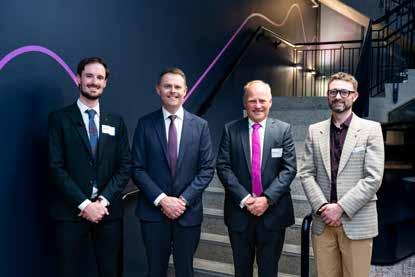

right here in South Australia, is a perfect example of what’s possible when you foster an environment that nurtures bold ideas. It’s an example of homegrown ingenuity where South Australia is developing innovative ideas aimed at solving global challenges,” said Stephen Mullighan, South Australian Treasurer and Minister for Defence and Space Industries.
Triton has the capability of capturing multiple pieces of space debris in a single mission. Unlike traditional payloads, which are often rendered unusable after a single use, Triton can be used multiple times across different missions, making it cost-effective and sustainable.
Space debris is a growing issue
that poses significant threats to satellites and space missions. A recent report found the ‘In-Orbit Servicing Market’ is expected to reach $4.7 billion by 2031 with about half of that market being debris removal.
“Triton will make the process of debris removal more sustainable and cost effective while also being able to eject its contents on space targets, preserving the spacecraft in orbit to be reused for other missions,” said Harrison Box, founder of Paladin Space.
“Not only is this practice sustainable, but incredibly cost effective for satellite manufacturers to ‘skip’ the launch phase of a mission and simply build their assets in space.”
The University of South Australia (UniSA) has proudly announced the first graduates from its Global Executive MBA in Defence and Space programme with students, including active defence force members, completing the 18-month course.
The scheme was undertaken alongside AUKUS allies in the UK and US, with the University of Exeter and Carnegie Mellon University in Pittsburgh also participating.
Students studied online and in person across all three universities with the goal of helping to solve the talent issues in cyber security, space systems, geopolitics and defence procurement.
“Throughout the program students develop global experiences, networks and competencies in the defence and space sectors that other Executive MBA programs can’t match,” said Professor Lan Snell, Dean of Programs (Postgraduate) at UniSA Business.

“That is not only attractive to SA locals, but to potential recruits and their employers nationally and internationally.
“Our graduates have built on a range of skills and capabilities ranging from technical skills through to project management and leadership capabilities.
“We now have heightened technical understandings and better developed future-focused capabilities such as communication, teamwork and problem solving.”
One graduate was Glen Gallagher,
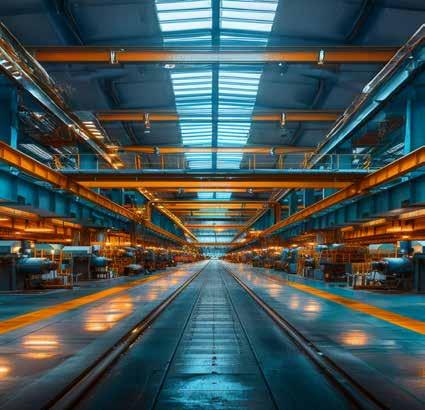


a former Operations Manager at Boeing’s Adelaide location who is now Director of Advanced Systems with Defence SA, an arm of the South Australian Government.
“I think taking part in the program did influence my career path in terms of my confidence, skills and ability to tackle a senior executive role,” he said.
“If I hadn’t been undertaking the Global Executive MBA in Defence
and Space, I might not have backed myself or had the necessary attributes to be successful in my current role.
“The value of the program is also in the establishment of multiple networks with peers, colleagues and industry professionals from around the world that you wouldn’t typically be exposed to unless you take up a lot of international travel.”
Western Sydney Uni set for $2.5m boost as part of additive manufacturing fund
Research into 3D printing in Australia received a major boost last week with the announcement of the multi-million dollar Additive Manufacturing Cooperative Research Centre (AMCRC) - and Sydney’s West is set to see a significant chunk of the cash.
Western Sydney University (WSU) will get $2.5m for its School of Engineering, Design and Built Environment and Centre for Advanced Manufacturing Technology (CfAMT), a research initiative launched in 2023 to help connect manufacturing businesses, government and academic.
By furthering additive manufacturing, Western Sydney Uni hope that they can assist in the transition to net zero through more agile, nearshored solutions for industry.
“This is an exciting opportunity for the University to further contribute to industrial transformation, economic growth and sustainable development, as we work to provide solutions to real world problems with our partners,” said Professor Richard Yang of Western Sydney University’s School of Engineering, Design and Built Environment.
“With this funding, our researchers will continue to position Western Sydney as a hub for advanced manufacturing and innovation in a rapidly developing market.”
Vital to WSU’s work is their link with the Advanced Manufacturing Readiness Facility (AMRF) in Bradfield, which is already at the forefront of additive manufacturing in Western Sydney.
“This success is a testament to our leadership, research excellence, strong partnership and engagement with industry, in advanced manufacturing,” said Professor Sweeney, Senior Deputy Vice-Chancellor and Vice-President (Research, Enterprise and Global) at WSU.
“The AMCRC will complement existing work the University has undertaken to accelerate the manufacturing sector and establish a coordinated network of services and supporting infrastructure.
“This includes our driving role in the AMRFConnect services in Bradfield City Centre and the Factory of the Future at our Bankstown City campus, which is redefining how we approach advanced manufacturing and industry-university collaboration.”
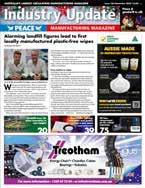



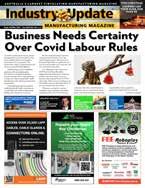

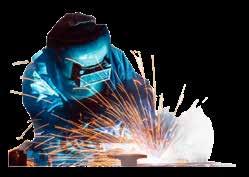

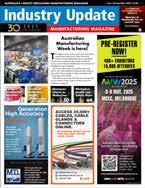
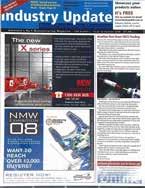

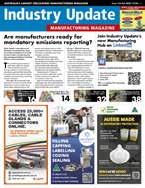
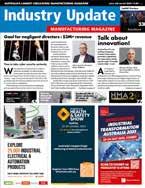












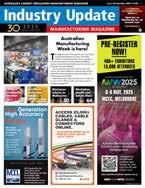

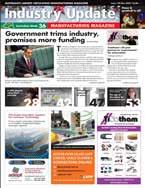
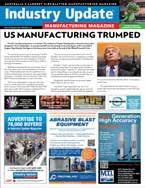

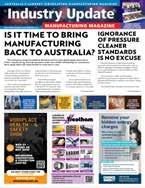





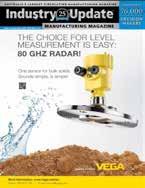
Operated by the Bundaberg Regional Council, the Woodgate Vacuum Sewer Station services approximately 3,000 residents - a number that can increase to 8,000 during peak holiday periods.
The system relies on a vacuum tank and pump setup to transfer sewage from homes and businesses to a treatment plant. Initially, a positive displacement lobe-style pump was used to move sewage from the vacuum tank to the treatment facility.
The lobe-style pump’s performance had declined. Its design struggled with the high differential between suction and discharge sides, causing significant wear and tear.
Maintenance became frequent and costly, with rotor tips wearing out regularly and major servicing required every quarter.
As the pump’s efficiency declined, sewage velocity through pipes dropped, causing rags and grit to settle and create blockages.
This led to higher head pressures and increased power consumption. The system, which initially transferred 20 litres per second, was at times only moving five litres per second, using much more electricity to achieve the original output. Pumping time also became a limiting factor.
Seeking a better alternative, Kevin Harris, Metal Trade Support Technician at Bundaberg Regional Council, met with Garry Grant, General Manager at Hydro Innovations at a Water Industry Workshop.
After discussing the issue and exchanging technical information, Hydro Innovations proposed a Gorman-Rupp Ultra VS3A60-B (3”) two-stage, self-priming centrifugal sewage pump.

This pump, with low NPSHR and a patented self-cleaning wear plate, was suited to the negative 80kPa suction conditions.

Its design allowed for easier maintenance, better solids-handling and higher efficiency. A trial installation was agreed upon, and the pump was installed.
Since installation, the VS3A60-B has consistently met the required performance metrics, maintaining a flow rate of 20 litres per second and a head pressure of 73 metres.
Over 15 months of operation, it required no maintenance, significantly improving the plant’s overall efficiency and reducing operational
costs.
The pump’s two-stage design increased pressure capacity and flow compared to single-stage alternatives, offering up to 60% more flow and 16.6%–20.7% higher hydraulic efficiency than other self-priming sewage pumps.
The council has since ordered two additional VS3A60-B pumps, citing strong supplier support and a productive relationship with Hydro Innovations.
Innovations
Protecting environmentally sensitive areas against floods and unintentional leaks and spills from industrial and public facilities is looming larger as a corporate risk and OH&S issue as climate change brings more extreme weather to Australia.
It is especially relevant to enterprises and industries handling large amounts of water, wastewater and process and cooling fluids.
These include waste storage sites and dams, mining and energy reservoirs (including hydro, green energy, fossil and – possibly in the future, nuclear) municipal waste and water treatment facilities, plus waste processing and recycling facilities, food and beverage processing and primary product manufacturing and processing facilities.
All of these depend on effective and well maintained pipeline systems that can handle both regular flows and exceptional flows as circumstances demand, free from blockages and leaks and with provision to safely stop flows where required and move work crews into secured pipeline sections where repairs are needed, without
overloading and shutting down entire networks to fix a localised problem.
“Preparation is the key to preventing leaks, spills and breakdowns, especially where problems and exceptional circumstances may be foreseeable and operators therefore have a duty of care to plan their response,” says pneumatic isolation and actuation specialist, Vinh Lam. Measures to anticipate maintenance and exceptional flow issues around sensitive sites include:
• Responses that can be easily installed and quickly deployed in emergencies, such as spills
• Reliability and durability of the methods employed to quickly seal pipelines or temporarily isolate sections for maintenance or repair (particularly bearing in mind that long sections of pipelines may not have or normally need permanent valving to permit finely graduated isolation)
• Proven failsafe performance to protect workers inside and around suspect or failing sections of pipelines to ensure the safety of workers exposed to potentially hazardous work in confined spaces.
Static electricity isn’t just a nuisance; it’s a serious threat to manufacturing efficiency, product integrity and workplace safety.
Unchecked static can lead to costly downtime, product defects, material jams and even hazardous shocks to employees.
If static is interfering with your processes, Exair’s upgraded Model 7905 Digital Static Meter offers an essential first step in identifying and eliminating the problem.
With just the press of a button, this easy-to-use, handheld device pinpoints the highest voltage areas in your facility, helping you diagnose static issues before they become an issue.
The Digital Static Meter detects surface voltage and polarity on objects up to ±20 kV, delivering immediate LED-illuminated readings for fast and accurate

“In a context where securing sensitive sites is a top priority, critical infrastructures must meet strict risk prevention and environmental requirements,” said Lam, who is responsible for the Pronal Elastomer pipe stopper and emergency response ranges distributed nationally by the complete national network of long-established actuation, isolation and suspension specialists, Air Springs Supply.
“Protection against intrusions, technical incidents, and natural disasters calls for innovative solutions”
Air Springs Supply has been a leader in its field for more than 50 years, operating to global standards of safety and quality.
Pronal is a leading, long-established (since 1961) supplier of elastomer products, including lifters and stoppers supplied to some of the world’s most safety and quality conscious groups, such as military forces and civil and industrial emergency response teams.
Air Springs Supply airsprings.com.au
troubleshooting.
The new Digital Static Meter features an infrared beam to ensure measurement is taken from the optimal one-inch distance for precise readings.
Certified for accuracy by the National Institute of Standards and Technology (NIST), this highly sensitive instrument ensures pinpoint static measurements, allowing you to take proactive steps toward eliminating costly disruptions in your operations.
Exair offers a full range of Static Eliminators, including Super Ion Air Knives, Intellistat Ionising Air Guns for clean rooms, Ionising Bars, Ion Air Cannons and Ion Air Guns – all designed to neutralise static and improve process reliability.

In the early days of 3D printing, the industry was full of bold promises: miracle machines that would replace factories, marketing language that promised ‘uncompromising strength’ and ‘unmatched precision’ and glossy renders that rarely matched reality.
Today, a new era of additive manufacturing is emerging, one focused on real outcomes and operational reliability.
Selective Laser Sintering (SLS) is at the heart of this shift and the Raise3D RMS220 is designed for it: not to dazzle with buzzwords, but to deliver measurable results.
SLS stands apart for several reasons.
It allows engineers to print complex parts - internal channels, snap fits, living hinges - without needing supports.
The unsintered powder acts as a natural scaffold, reducing cleanup and failure risk and giving designers full freedom without workaround compromises.
SLS parts aren’t just for show.
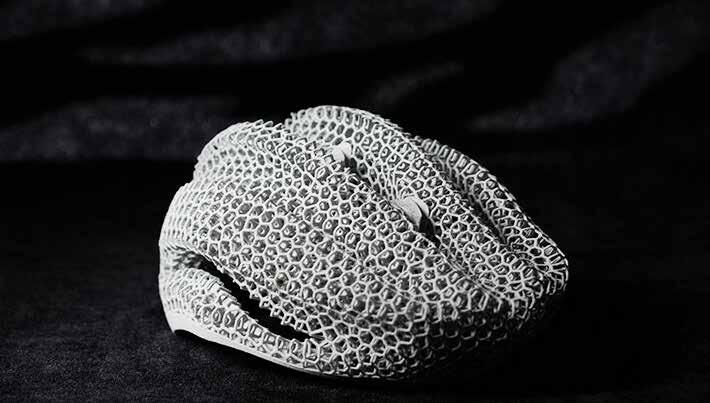
Nylon PA12, PA11 and TPU used in systems like the RMS220 offer high strength, abrasion resistance and long-term stability. These parts are used in demanding applications,

from custom orthotics to production tooling.
With its high-density nesting capabilities, SLS enables multiple parts to be printed in a single job, maximising machine time and material usage. This translates to reliable, scalable part production, not just prototyping.
And while exact cost-per-part data depends on geometry, packing efficiency and workflow variables, what matters is this: the RMS220 is designed to reduce your per unit cost through smart design, minimal waste and consistent uptime.
The RMS220 represents a move away from experimental AM tools toward machines built for daily, dependable use.
The 75W fibre laser and galvanometer-driven optics deliver fine details and consistent power delivery, achieving feature resolution down to 0.3mm and wall thicknesses as low as 0.5mm (material-dependent).
A four-zone infrared heating system ensures uniformity across the build chamber, reducing warping and enabling larger part builds with fewer failures. Consistency is built into the machine architecture.
Raise3D’s modular approach and quick-change material system means faster transitions between jobs and less operator intervention. You don’t need a team of engineers to keep this printer running - just a reliable process.
In an industry where failed prints are often hidden and rejection rates quietly ignored, the RMS220
is part of a growing push toward transparency.
There’s no ‘magic filament’ or miracle claims, just an open, capable machine designed for:
• Real functional parts
• Repeatable output
• Transparent material use
• Measurable throughput
If you’re tired of brochures that promise perfection and leave you managing unpredictability, the RMS220 is a refreshing alternative: a machine that does what it says and is built for manufacturers who value process stability over fairy tales.
From automotive brackets to orthotic shells, consumer product housings to jigs and fixtures, the RMS220 brings SLS quality into a package that’s cost efficient, scalable and reliable.
The additive manufacturing industry is maturing. It’s no longer about overpromising - it’s about building trust through tools that work, processes that scale and results that withstand scrutiny.
The Raise3D RMS220 doesn’t chase trends. It enables real businesses to run real parts - day after day, job after job. If you’re ready to build with purpose instead of marketing myths, this is the SLS platform to do it on.
Bilby3D is the Australia and New Zealand Distributor for Raise3D. The RMS220 is expected in December 2025.
Bilby3D - b3d.com.au
By Matt McWhinney, group business development manager and Kirk Ulery, distribution business development manager, at Molex, with Shawn Luke, technical marketing engineer, at DigiKey
The Australian automotive industry’s evolution through electrification - replacing traditional mechanically driven systems with electric components and systems - is profoundly changing the design of today’s vehicles and components, which range widely from internal combustion engines to mild hybrids to fully electric architectures.
As systems have evolved from carburetors and simple exhaust systems to precision fuel injectors, emission systems and traction and braking control systems, similar advancements have been made in electrification with new architectures, components for electric motors, battery packs and advanced power electronics.
slowed over the last several months due to many factors, with industry experts citing cost and the limited charging infrastructure as two major reasons.
Hybrid vehicles, on the other hand, are outpacing EV sales.
According to data from Edmunds, hybrid purchases saw their biggest surge in 2023, increasing from more than 750,000 sales in 2022 to tipping over a million sales in 2023.
Another emerging category is the mild hybrid, which uses a battery-powered electric motor to supplement petrol or diesel usage.
Most mild hybrids run on a 48V electrical system, which is a higher voltage than the electrical systems of a traditional combustion-engine vehicle.

Combined, these advancements are pushing engineers to reimagine how vehicles are designed and driven for maximum efficiency, reliability and safety.
Experts from two industry-leading electronics companies - Matt McWhinney and Kirk Ulery, business development managers at Molex, and Shawn Luke, technical marketing manager at DigiKeyshed light on the current state of the electrification movement.
While the demand for EV and hybrid vehicles continues to increase, sales of new EVs have
The 48V system powers components that are not reliant on the engine, enabling better operational efficiency.
“One constant we’re seeing is a lot more electrification – mechanical systems are becoming electrified in all vehicles for many reasons, especially to drive efficiency,” said Ulery.
One example is stop-start technology, which turns off the engine when a vehicle stops and automatically restarts when the driver releases the brake or pushes the gas pedal.
While this feature can put extra

demand on some components, it aims to improve fuel efficiency and reduce greenhouse gas emissions.
Other examples of electrification under the hood are in radiator fans, power steering, HVAC systems and cooling pumps.
All these systems used to be powered by belts off an internal combustion engine (ICE).
Electric water pumps are replacing mechanical radiator pumps for more efficient performance, and the precise control with electrical cooling can extend the lifespan of these parts.
If there is extended battery management, they also circulate coolant throughout a vehicle to regulate the temperature of the battery pack, electric motors and power electronics.
Switching to electric-powered modules such as power steering pumps makes the system no longer reliant on the engine, reducing parasitic loads and allowing for more available horsepower.
Therefore, automakers can install smaller engines in some vehicles and retain the same driving performance while gaining efficiency benefits and outputting lower emissions.
“Electrification has opened the door to innovative new vehicle designs,” said Luke.
“Without the need to accommodate the ‘belt-driven architecture’ with a traditional internal combustion engine, auto manufacturers have more flexibility in where to distribute batteries and charging ports and the ability to increase the amount of space for passengers or cargo.”
Overall, the electrification movement is replacing traditional mechanical systems with precision electrically controlled systems that can be more efficient.
Combined with advancements in software control, modern vehicles are cleaner, more energy efficient, and offer performance and sustainability for both passenger and commercial drivers.
Meeting safety requirements is a top priority, but an additional challenge is the constant change in vehicle electrical system requirements, which pushes manufacturers to keep up and constantly revise connectors and other components. Components that adhere to automotive qualifications are typically high-quality, rugged and reliable parts that can take a beating on the road without sacrificing performance.
For example, Molex’s MX150 connector series offers components engineered for vehicles that face harsh environments and are durable against extreme temperatures, vibration and moisture.
“With more innovation opportunities in vehicle design, more vehicle manufacturers are embracing electrification practices,” said Luke.
“Because of the hyper-fast innovation cycle, there are few standard platforms in the space.
“However, the increased variety offers consumers more options, and we expect the cost of vehicles will likely decrease as technology advances and production ramps up.”
Engineers, designers and manufacturers in Australia today must consider numerous complex, power-hungry systems and features that meet consumer and commercial demand and are also highly efficient, durable and safe.
Thankfully, technology suppliers are up for the challenge of creating the technology to solve these innovation issues.
EBS Entrance Solutions has just wrapped up an exciting project for Haigh’s, a leading Australian fine chocolate maker, creating a state-of-the-art confectionery production facility.
Located in Salisbury South in the northern suburbs of Adelaide and built by CIP Constructions, the top-notch facility has all the modern conveniences that would impress even Willy Wonka - minus the Oompa Loompas and chocolate river, though we suspect there’s a fountain.
EBS are proud to have played a part in making this confectionery
facility one of the finest in Australia.
They were tasked with supplying industrial door products that met strict technical and thermal requirements while staying on budget.
They delivered several high-quality solutions including the EBS Isotherm insulated panel doors, Thermacombi insulated rapid roll and steel shutter doors and our elite EBS Thermospeed thermal efficient rapid roller doors.
EBS Entrance Solutions ebssolutions.com.au

At Digilent, we understand the evolving needs of engineering education.
That’s why we’re thrilled to introduce the Analog Discovery Studio Max (ADS Max), a versatile and comprehensive electronics laboratory solution tailored for academic environments and designed to redefine how students learn and apply electronics principles.
Whether you’re a professor seeking to enhance your lab courses, a student eager to explore realworld applications, or an engineer looking for a comprehensive testing solution, the ADS Max is engineered to deliver unparalleled performance and flexibility.
The ADS Max is a comprehensive electronics laboratory solution that integrates 14 essential test instruments into a single, portable device.
Think of it as a complete electronics lab in a compact form factor. This all-in-one design is perfect for studio learning and flipped classrooms, and empowers students to become active participants in their learning. By combining Digilent’s robust hardware with NI’s powerful software, the ADS Max makes engineering technologies both understandable and accessible.
Key features and benefits include:
• All-in-One Design
Say goodbye to cluttered lab benches. The ADS Max consolidates 14 essential instruments, including an oscilloscope, waveform generator, logic analyser,
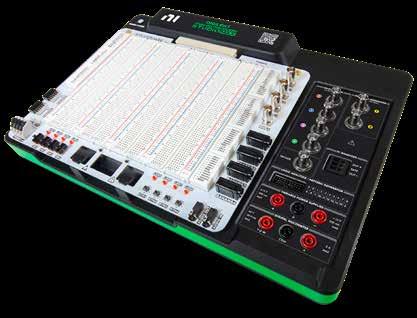
spectrum analyser, digital multimeter, power supplies, protocol analyser and IV analyser. This integration streamlines workflows and enhances efficiency, allowing you to focus on learning and experimentation.
• Seamless Circuit Prototyping
The integrated power supplies and breadboardable interface make circuit design and testing a breeze. Ideal for courses on circuit design, signal analysis and embedded systems, the ADS Max enables students to apply theoretical knowledge to real-world scenarios.
• Powerful Software Support Digilent’s LabVIEW WaveForms Toolkit allows for seamless integration and custom application development, enabling tailored
control and data acquisition for specialised experiments and educational modules. The included Digilent WaveForms software provides prebuilt instrument panels for immediate use. APIs for C, C++, Python and several other languages enable custom software development, catering to diverse programming preferences and educational needs.
• ADS Max Ecosystem
The ADS Max is part of a broader ecosystem that includes other subject-specific canvases and subject-specific materials developed by academic partners. This ecosystem provides ready-to-use lab materials for various engineering disciplines, such as wireless communications, power electronics
Technical Specifications
To give you a glimpse of the ADS Max’s capabilities, here are some key specifications:
• Mixed-Signal Oscilloscope 4 analog input channels, 14-bit resolution, up to 100 MS/s sampling rate, 50 MHz bandwidth.
• Function Generator 2 channels, 14-bit resolution, up to 100 MS/s, ±10 V output range.
• Programmable Power Supplies
±15 V, ±5 V, ±3.3 V with varying current ranges.
• Digital Multimeter (DMM)
4.5-digit resolution, comprehensive voltage and current ranges.
• Digital I/O 16 versatile channels, with an additional 8 available when used with select canvases.
and digital circuits, enhancing the learning experience
The ADS Max is more than just a piece of hardware; it’s a catalyst for innovation in engineering education.
By providing a comprehensive, user-friendly and powerful platform, we’re empowering students to develop a deeper understanding of electronics principles, gain practical, hands-on experience and prepare for the challenges of real-world engineering.
Digilent - digilent.com
The Australian Manufacturing Awards (AMAs) has announced a major new partnership with the Hunter Manufacturing Awards (HMAs), with winners from the 2024 event to be fast-tracked as national finalists for the inaugural national AMAs.
The HMAs have rewarded the best of manufacturing in the Hunter, Central Coast, New England and MidNorth Coast regions of New South Wales for over 20 years, and launched their 2025 event this week a special event hosted by Omnia and co-hosted by Apollo Engineering, two standout winners from last year’s Awards.
The AMAs, presented by Industry Update, will debut in October at the Sofitel Sydney Wentworth, representing the first major national awards programme for the manufacturing sector.
Interest is already sky high, with several major sponsors confirmed, support flowing from.
“We’re proud to be raising the profile of regional manufacturers on

a national stage,” said HMA Chair Jacqui Daley.
“This partnership is a gamechanger, it’s about putting the Hunter on the map as a manufacturing powerhouse and giving our winners the recognition they deserve across the country.”
The announcement came as the HMAs debuted two new categories for their 2025 Awards: the Digital Transformation Award, to recognise outstanding use of digital technologies to improve efficiency, reduce costs and drive innovation in
manufacturing operations; and the Diversity in Manufacturing Award, celebrating businesses and individuals that are fostering inclusive, accessible and equitable workplaces across the manufacturing sector.
“We’re recognising the real forces shaping the future of manufacturing; digital innovation, diverse talent, sustainable operations, and global thinking,” said Daley.
“The 2025 awards are about more than trophies, they’re about celebrating the people and ideas that will lead our industries forward.”



Turck’s safety network platform offers cost-efficient and flexible safety solutions for small to medium-sized plants.
Right through to ATEX Zone 2/22, Turck presents a networked machine safety solution that is specially tailored to the requirements of small to medium-sized plants.
Turck Safe Link safety protocol, combined with the TBEN-LL-4FDI4FDX safety block I/O modules, enables flexible and cost-efficient decentralised safety control.
The multiprotocol modules support Ethernet/IP, Profinet and Modbus TCP communication, but
use the Turck Safe-Link protocol for the safety network.
The safety logic is implemented directly, because the modules are safety controllers with on-board safety inputs and outputs.
The networked modules have a modular and scalable safety architecture which reduces cabling effort and installation time considerably.
Up to 31 modules can be networked in an application, and each module provides 127 diagnostic bytes for monitoring and quick troubleshooting.
Each module provides two bytes for safety input and output data as

There are few things that Aussies like more than the Colonel’s finest - and now, one of their outlets in the Geelong suburbs has got a fresh new look thanks to the Australian Trellis Doors Company (ATDC).
The portal specialists were called to the KFC at Grovedale, Victoria, to install new trellis doors for the American chicken giants.
ATDC put in quality constructed, clear anodised, heavy duty, aluminium extruded doors with an additional vermin resistant, perforated mesh infill backing.
This infill has the additional advantages of maximising air flow and ventilation as well as allowing see through visibility.
well as an additional two bytes for non-safety input, and output bits for fieldbus communication with a nonsafety PLC.
The decentralised installation capability of the modules reduces the need for central control cabinets and simplifies maintenance and system expansion.
Approval for ATEX Zone 2/22 makes the modules suitable for use in hazardous areas. This means that safety signals can even be reliably transferred in harsh environments.
Turck Australia Pty Ltd turck.com.au
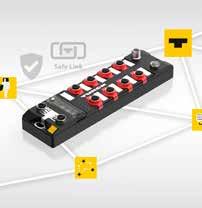
Turck’s safety network platform offers cost-efficient and flexible safety solutions.
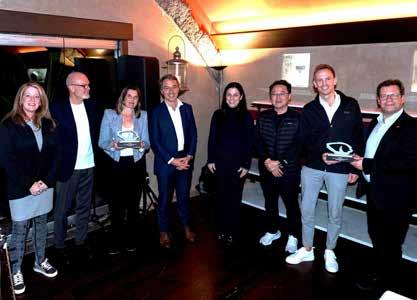
It is a multi-applicational product suitable for projects such as arcades, shopping centre tenancies, servery counter and bar tops, food service areas, restaurants, retail stores, clubs and reception areas.
The maximum span of the shutters is 5500mm wide in one section without the need for unwieldy removable mullions. It is electrically operated with an external key switch for extra security.
Project managers for this installation were Becon Constructions based in Hallam near Melbourne and a full 12-month warranty applied.
Australian Trellis Door trellisdoors.com.au
Electrical components providers element14 are celebrating after picking up two major awards for their successes in business and marketing.
The company was awarded by Keysight, a global innovation partner providing design, emulation and test solutions, with the Market Excellence Award and the Business Expansion Excellence Award following a 25% increase in sales.
“Keysight awarded element14 the Business Expansion Excellence Award in recognition of their results in expanding coverage for Keysight’s products in India,” said Kari Fauber, Vice President Global Partner Sales & eCommerce at Keysight.
“Keysight and element14’s partnership combines element14’s
industry-leading reach and strong marketing programs with Keysight’s broad portfolio of distribution products and teamwork at all levels of engagement.”
The two awards represent a great moment for element14.
“These prestigious awards from Keysight are a testament to our team’s hard work and dedication, as well as the strong partnership we have developed with Keysight,” said Andrew Weatherill, Vice President of Global Product at element14.
“Our focuses on customer-centric strategies and our commitment to expanding into new markets have been integral to this success.”
element14 Australia au.element14.com
Magnetic grippers with air release are the straightforward answer for handling steel components, pressings and assemblies.
A broad range of sizes and styles of these industrial magnetics, including magnetic end-of-arm grippers to suit many and varied applications, is available from Serpent & DoveApplied Magnetics in Australia.
They have been in the magnetics business since 1984, using the motto ‘finding ways in magnets’ in everything that they do - including magnetic grippers.
Otherwise known as end effectors, these small but powerful rare earth magnet assemblies positively secure steel items during transfer, eliminating slippage or shifting of the held item, even when the surface is oily.
These devices are double-acting and will not let go if air is lost. Both activation and release are affected by a short shot of air, and the devices use much less air than vacuum devices.
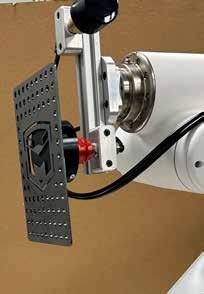
The ECD TC80 Total Chlorine Analyzer is a panel-mounted solution designed to monitor total chlorine in drinking water, industrial cooling and rinse water, wastewater or other freshwater samples containing chlorine in the range of 0-20 ppm.
The Total Chlorine Sensor (TCS) is a three electrode amperometric sensor that measures all chlorine species in the water, combined chlorine and free chlorine in a range of 0.05–20 ppm Cl2 (High Range) or 0.005–2.000 ppm (Low Range).
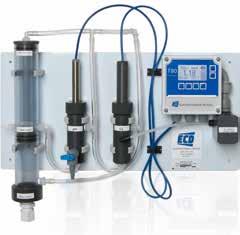
The TC80 Total Chlorine Analyzer features a plug and play design that incorporates a flow control device, a pH sensor, a chlorine sensor. The T80 transmitter is conveniently mounted on a PVC panel. Connect the sample and drain lines, connect the power and





outputs and it is ready to use.
The TC80 Total Chlorine Analyzer is calibrated at the factory before shipment with additional calibrations accomplished by DPD comparison.
AMS Instrumentation & Calibration Solutions ams-ic.com.au


















